B O ST O N CO LLEGE MAGAZINE
FALL 2022 interview with an american how bc history professor heather cox richardson became one of the nation ’ s most influential writers .

In a new memoir, Kyleigh Leddy ’19 recounts her sister’s tragic descent into mental illness.
Gunnar Esiason ’13 and the battle over new treatments for rare diseases.
History’s First Draft
How BC history Professor Heather Cox Richardson’s newsletter

Letters from an American made her one of the nation’s most influential writers.
By John Wolfson
Photographs by Kelly Davidson
Breathtaking
Gunnar Esiason’s odyssey through cystic fibrosis and the American health care system.
By Chris Sweeney Illustrations by Stephanie Dalton Cowan
My Sister’s Keeper
In her haunting book The Perfect Other: A Memoir of My Sister, Kyleigh Leddy ’19 recounts the fear, anguish, and heartbreak of living with a beloved older sister whose mental health rapidly declined before she tragically disappeared.
By Elizabeth Clemente Photographs by Jai Lennard
CV2 bcm v fall 2022 Contents // Fall 2022 FEATURES 18
28
36
LINDEN LANE
4 Fitness for All Heather White ’10 is on a mission to diversify the wellness industry.
6 Campus Digest
8 The Odds Father How the Jesuit priest and Boston College professor Richard McGowan, SJ, became a leading gambling expert.
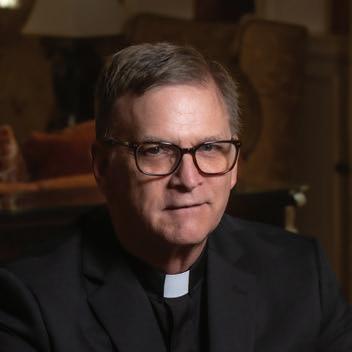
9 Paying It Forward
Lurein Perera ’21 developed a novel idea for using debit cards to put money in the hands of people experiencing homelessness.

10 Celebrating 245 Beacon A night of festivities formally opens BC’s new integrated science building.
11 A Four-Day Work Week?
Boston College Professor Juliet Schor on why more and more companies are making the shift.
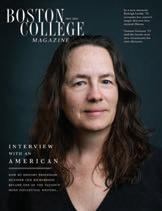
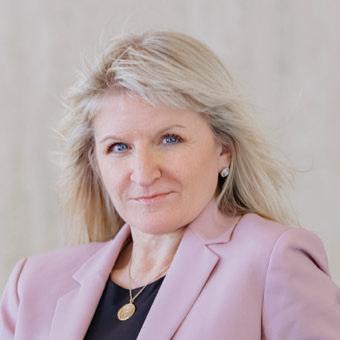
12 Meet Blake James, the New Director of Athletics
The former University of Miami AD lands at Boston College.
14 Using AI to Study Autism
New discoveries published by BC researchers could help identify the causes of Autism Spectrum Disorder, and lead to personalized interventions.
15 Gretchen Libby ’90 On a career spent creating movie magic.
16 Female Genius
BC Law Professor Mary Sarah Bilder chronicles the political feats of the eighteenth-century education activist Eliza Harriot.
NOTES
Alumni News and Notes
Class Notes
Fond Farewells
Advancing Boston College
What I’ve Learned Mary Walsh
Parting Shot
fall 2022 v bcm 1
CLASS
44
45
68
70
72
73
158 9
Photo by Kelly Davidson
A FAREWELL TO JERRY YORK
The article brought back a memory from 1965. I was a freshman with the BC Band and Jerry was a sophomore, third line center on the hockey team. In the first week of the Beanpot Tournament, Jerry scored the win ning goal in overtime against Harvard. The band was seated behind the Harvard goalie and had a perfect view of the action. Jerry, streaming down the middle of the Garden ice, tipped a centering pass into the net for the win. A week later, BC went on to beat BU for the championship. Jerry the coach provided wonderful victories and decades of memories, but Jerry the player started it all way back when.
Dan McCarthy ’68 Auburndale, Massachusetts
There must be countless instances of the example that Coach York set for his players. Treating others with respect and inclusion is the message that comes through from those who testified to his character [Summer 2022]. So, I offer one such instance to which my wife, young son and I were treated. It was a month or two after the Eagles had finally won their second national champion ship (and first under York), in 2001. We were visiting campus and thought it might be fun to check out Conte Forum. We went in and there, on the bare floor, was defense man Bobby Allen. He greeted us and said that the team was about to have a meeting with Coach York regarding their upcoming visit to meet President Bush. We got close to the locker room, where Coach York spotted us and invited us in to meet the team! I told
him how thrilled we were. The thing is that he and the team seemed just as thrilled to have us there—yet we were perfect strang ers. After pleasantly chatting with coach and team for quite a while we asked if they wouldn’t mind signing a championship T-shirt we had picked up at the bookstore. They gladly obliged. But, some team mem bers weren’t present so we could not get every signature. Whereupon Coach York said to leave the shirt with him and he would have the others sign as well, then mail it to our home in Vermont. He did just that and included a nice handwritten note to our son. We had that shirt mounted. Our son still has it. To this day, whenever we think back on that experience we marvel at the thoughtful kindness shown to us by Coach York and the team. We wish Jerry York a happy and fulfilling retirement!
Daniel J. Degan ’74 Weston, Vermont
ALUMNI REACT TO YORK’S RETIREMENT
Our Summer 2022 tribute to legend ary BC hockey coach Jerry York ’67, who retired after last season, elic ited an overwhelming response. When the article was posted on the BC Facebook page, it gener ated nearly five hundred reactions. Fans shared their warm wishes for the former Eagles star player who returned to the Heights in 1994 and went on to lead BC to four national titles and retire as the winningest coach in college hockey history. Jim Day, for example, saluted York as an “all-American player, Hall of Fame Coach, (and a) better person.” Susan Mosher, meanwhile, wrote that there’s “no finer coach or human being. Enjoy your retirement Jerry and Bobbi. You have earned it.” Beth Weston echoed that sentiment, calling York “a wonderful man and coach (obviously). A million congrat ulations to you Jerry! Enjoy every second of retirement.” We couldn’t have said it better ourselves. Here’s to York’s twenty-eight incredible years at the Heights, and the pro found effect he had on generations of players and fans.
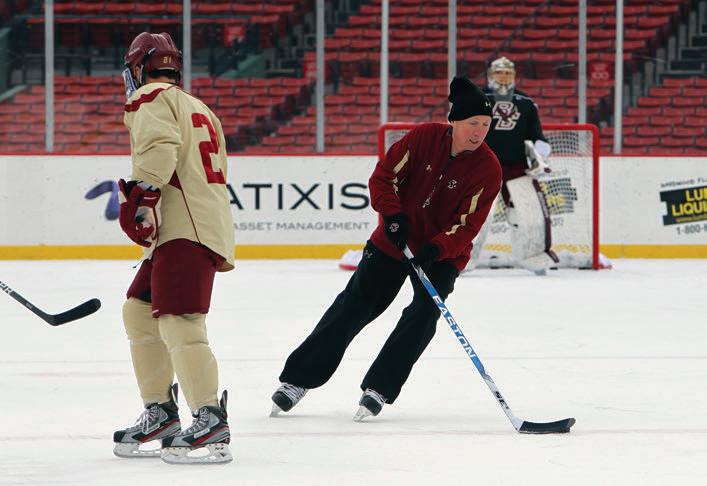
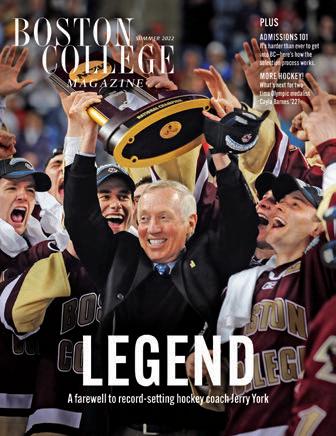 photos: Mark Hicks, NCAA Photos via Getty Images (cover); John Quackenbos (York skating)
photos: Mark Hicks, NCAA Photos via Getty Images (cover); John Quackenbos (York skating)
Conversation
“The GOAT. We were fortunate enough to have Coach York all these years.”
Duddy Shoenfeld, via Facebook
2 bcm v fall 2022
A New World Order?
A NEW WORLD ORDER?
This article [Summer 2022] was the most succinct portrayal one could have hoped for of what the international landscape looks like going forward. Kudos to professors Cronin, Christensen, Ross, Jacobs, Erickson and Banuazizi. Their clarifications on the agendas of the most significant world play ers vis-a-vis the U.S.—a topic that was once clear (before 2016?) but no longer is—was enlightening and digestible. I believe I will utilize the article as my pocket primer for the next decade or so as I follow the inter national landscape and its effect on us here at home.
Matt Emery ’80 Davidson, North Carolina
Way back in the dark ages, when I was in grammar school and high school, we were encouraged to stay informed on current events. At BC I never took any political sci ence courses, but I was disappointed that none of my history professors related the eras of their specialization to the thenpresent day. We had Vietnam in the news every day, but did it come from anywhere? At today’s BC, Heather Cox Richardson sets the standard. I read and learn from and benefit from her historical insights six days a week. The six professors who wrote col umns for “A New World Order?” are great too. Excellent work! (Oh yes, and I loved the Jerry York article.)
Hugh J. (Tim) Arnstein ’68 Monroe, New York
B O ST O N CO LLEGE MAGAZINE
EDITOR John Wolfson
ART DIRECTOR Keith Ake
DEPUTY EDITOR Courtney Hollands
STAFF WRITER Elizabeth Clemente
DIRECTOR OF PHOTOGRAPHY Lee Pellegrini
SENIOR PHOTOGRAPHER Caitlin Cunningham
AMBASSADOR NICHOLAS BURNS
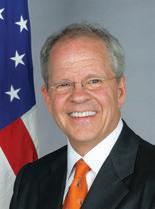
I’ve just finished reading the latest issue of your fine magazine. Of particular interest was your article about Nicholas Burns, the ambassador to China. God bless him in his endeavors. It brought to mind another alumnus worthy of recogni tion: my classmate, great friend, fellow rugger, and choral associate Timothy Broas, who served as ambassador to the Netherlands during the Obama administration.
J. Paul Fitzgerald ’76 Brookfield, Connecticut
Boston College Magazine welcomes letters from readers. Letters may be edited for length and clarity. Please include your full name and address.
EMAIL: bcm@bc.edu
MAIL: BCM, 140 Commonwealth Avenue, Chestnut Hill, MA 02467


Connect with @BostonCollege
Please send address changes to: Development Information Services Cadigan Alumni Center 140 Commonwealth Ave. Chestnut Hill, MA 02467 (617) 552–3440, Fax: (617) 552–0077 bc.edu/bcm/address
Please send editorial correspondence to: Boston College Magazine 140 Commonwealth Ave. Chestnut Hill, MA 02467 (617) 552–4820, Fax: (617) 552–2441 bcm@bc.edu
Boston College Magazine is published three times a year by Boston College, with editorial offices at the Office of University Communications.
ISSN 0885–2049
Standard postage paid at Boston, MA, and additional mailing offices.
Postmaster: Send address corrections to: Boston College Magazine Development Information Services Cadigan Alumni Center 140 Commonwealth Ave. Chestnut Hill, MA 02467
Please direct Class Notes queries to: Class Notes editor Cadigan Alumni Center 140 Commonwealth Ave. Chestnut Hill, MA 02467 email: classnotes@bc.edu phone: (617) 552–4700
Copyright © 2022 Trustees of Boston College. All publications rights reserved.
Printed in U.S.A by The Lane Press.
VOLUME 82 // NUMBER 3 // FALL 2022
illustration: BC Magazine/Images via Shutterstock. photo: United States Department of State (Broas)
fall 2022 v bcm 3 v v THE WAR IN UKRAINE. THE RISE OF CHINA. THE WEAKENING OF DEMOCRATIC NORMS. WE ASKED BC EXPERTS ABOUT THE FUTURE OF THE LIBERAL WORLD ORDER.
R ussia’s invasion of Ukraine, the largest attack in Europe since World War II, has set off waves of speculation about whether the inter national order that has regulated the planet for three-quarters of a century is beginning to crumble. An ascendent China is challenging America for global primacy. The West’s commitment to demo cratic norms seems more fragile than at any time in memory. And Russia, long recognized as one of the world’s superpowers, is suddenly looking more like a paper tiger. What does all of this mean for the future of the world order? We asked a number of BC experts, and in the pages ahead we present their thoughts on the future of everything from the United States and China to Russia, NATO, and nuclear nonproliferation. —John Wolfson
Linden Lane
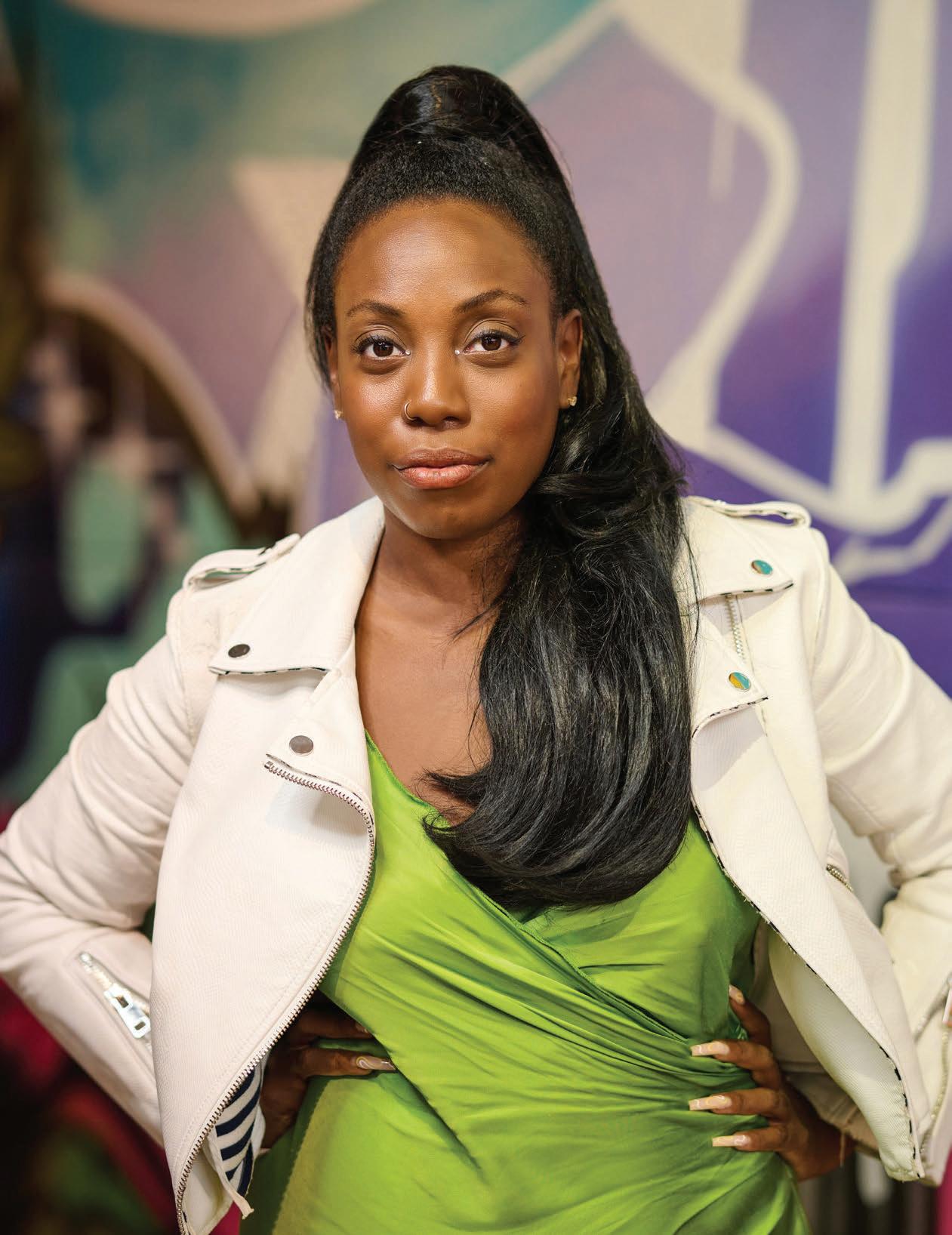
Fitness for All
Heather White ’10 is on a mission to diversify the wellness industry.
BY COURTNEY HOLLANDS
Growing up in the Bronx, Heather White ‘10 played soccer, basketball, and volleyball, but “never thought I would be a fitness instruc tor,” she said, “because I never saw a fitness instructor who looked like me.” And later, as a postgrad living in Boston, she was often the only person of color in the boutique gym classes she took.
In 2015, these experiences spurred White, then working in marketing for the sports apparel company Puma, to launch Trillfit, a fitness company with the goal of diversifying the $4.4 trillion global wellness industry. “I’m doing this to get people of color moving who have not had the oppor tunity to do so,” she said. “And that’s what’s most important to me.”
Trillfit began humbly, as a series of fit ness pop-ups around Boston. From there, White and her team rented a permanent space, first in a dingy fourth-floor walkup on Massachusetts Avenue, and then in a big ger place in Downtown Crossing. By then, Trillfit was holding several classes a week and White realized that if the company wanted to continue to grow it would need its own stu dio. In 2018, she settled on a spot in Boston’s Mission Hill neighborhood. To pay for the required buildout of the space, she said, “I literally liquidated my entire 401K.” White, who studied English and gender studies at Boston College, left her marketing career in 2021 to become Trillfit’s CEO full time. And in early fall 2022, Trillfit opened its second, flagship location in Brooklyn—at 5,500 square feet over two floors, it’s twice as large as the Boston original.
Now, White and her cofounder, Melisa Valdez, hope to raise $2 million from angel investors and an online investment campaign. They want Trillfit to become a national fit ness brand, and their plan calls for opening sixteen more gyms around the country by 2027. “We want to be the next big thing with in this industry that we are actively chang ing,” White said. “If you picture [cycling studio] SoulCycle as being vanilla Breyers ice cream, we’re Ben & Jerry’s. We come from New England. We lead with our values.”
The first thing you might notice at Trillfit’s Boston studio—“trill” is slang for true and real—is the neon sign on the wall
proclaiming “You Belong Here.” “It’s a very big photo op moment,” White said with a laugh, noting that the sign will be displayed in every future studio. “It resonates with people. This is your home. This is your space. Make it your own.” The high-energy boxing, sculpt, and signature cardio dance classes are set to hip-hop mixed by a DJ, and the crowd comprises a variety of ethnicities, gender identities, and body types. “You might be next to a woman in a hijab, next to a Black girl, next to someone with their hair in a bonnet,” White said. “It’s very much ‘come as you are.’” As the gym member Mercy Bell put it in the Boston Globe in 2018: “Here, connecting through a passion for dance, to move and sweat free of inhibition and it’s exercise? Hello.”
be happier. But all too often, she said, well ness spaces don’t make marginalized com munities feel welcome: “They are exclusive. They are unkind.”
Trillfit began 2020 with fifty straight days of sold-out classes, and the company was on track to have its most successful year yet. Then came the pandemic. White shut the Boston studio down in March and a few days later, transitioned to online workouts. With COVID-19 disproportionately affect ing people of color, Trillfit kept its classes free for more than five months. Suddenly, Trillfit was reaching a wider audience—ten to fifteen thousand clients from around the world logged in each month. Soon, the company was appearing in Women’s Health magazine and the New York Times. Then in January 2021, White and Valdez, Trillfit’s cofounder, appeared on Good Morning America and led a virtual cardio-dance demo for hosts Robin Roberts and Michael Strahan. Two months later, during Women’s History Month, Foot Locker named the women as Icons of Movement.
But it’s not just the participants who are diverse. At Trillfit, 92 percent of the staff are people of color. A company initiative called the Instructor of Color scholarships is creat ing a pipeline of talent. Each year, a steering committee selects twenty people to partici pate in a complimentary two-month Trillfit instructor training, and recipients then audition for a spot on the schedule. This is a first step in the makeover of the wellness industry, which, as White points out, exists to make people feel better, live longer, and
White is looking at Detroit, Washington, D.C., and Houston, as well as other Boston neighborhoods, for future Trillfit locations. She plans to focus on “fitness deserts,” the areas where White said “people don’t have access to green space to walk or run in a park, or don’t have gyms or a YMCA or another option to be able to work out in the way that Trillfit promotes. We consider ourselves truly part of the fabric of the com munity.” Her ambitions for the company go beyond opening additional studios, too. Trillfit recently held a pop-up fitness event at the London Marathon, and will also be at this year’s New York Marathon. And this fall, the team is launching its Starlight Sessions, camping trips geared toward getting people of color into nature—recent National Park Service data showed that 77 percent of visi tors to America’s national parks are white.
“We’ve had enough praise and votes of confidence to know that we’re actually doing it, that we actually have a seat at the table, that people are actually listening,” White said. “The biggest billion-dollar organizations in wellness are taking our calls, and they’re considering investing in Trillfit.” n
We want to be the next big thing within this industry. If SoulCycle is vanilla Breyers ice cream, we’re Ben & Jerry’s. We come from New England. We lead with our values.”
“
fall 2022 v bcm 5photo: Jennifer Pottheiser
Strides in Faculty Diversity
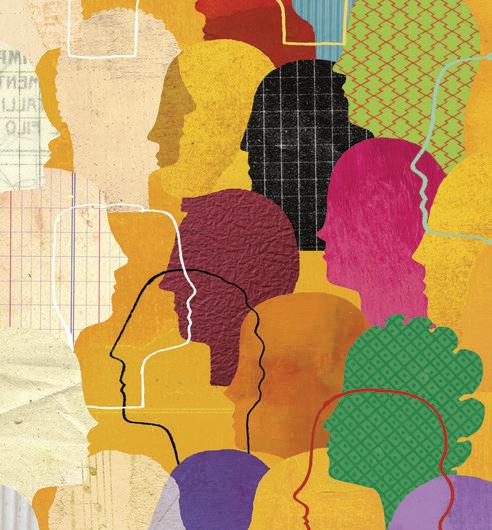

Social Justice and the Third-World Left
fall 2022
This new course examines how political activism in developing nations has inspired American social justice movements of the last sixty years. Students study manifestos and newspapers created by Black, Asian American, Latina/o, and women of color feminist activists, and create an independent research project. Assistant pro fessor of history Eddie Bonilla hopes the work will allow students “to learn from people who are kept in the peripheries of United States history.”
BIG NUMBERS
Boston College this semester welcomes the most racially diverse collection of faculty hires in University history. Of the sixty-three full-time, non-visiting faculty hired for the 2022–23 academic year, 49 percent are AHANA (people of African, Hispanic, Asian, and Native American descent). Of that group, 21 percent are Black, and the number of full-time Black faculty members hired this year is more than triple the number recruited five years ago. “Our students look to faculty as role models and fonts of knowledge and inspiration—they need to be able to see a reflec tion of themselves in their faculty,” said Billy Soo, vice provost for faculties at BC. “As our students become increasingly diverse, so must our faculty.”
FROM THE ARCHIVES
A Grim Anniversary
—Elizabeth Clemente
The percentage of graduates of BC’s Class of 2021 working, in grad school, or engaged in fellowship or volunteer experiences.
964,381
Total degrees awarded to the Class of 2022.
The undefeated BC football team was heavily favored to win its final regular-season game on November 28, 1942, against unranked Holy Cross. In a shock ing upset, however, the Eagles lost 55–12, costing themselves the chance to play for the national championship in the Sugar Bowl—but most likely saving their lives. Humiliated, the team canceled a planned victory party at Boston’s Cocoanut Grove nightclub, which tragically went up in flames that very night, killing 492 people. “We can then look up to God Almighty,” Ernie Santosuosso wrote in the Heights, “and render prayers of thanks that our boys were spared of such a death.” Sadly, though, BC equipment manager Larry Kenney and his wife, Marie, perished in the blaze.
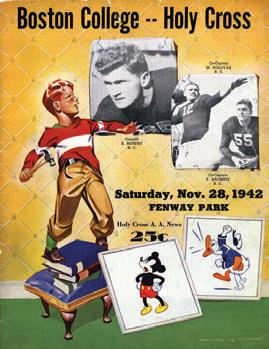
—Courtney Hollands
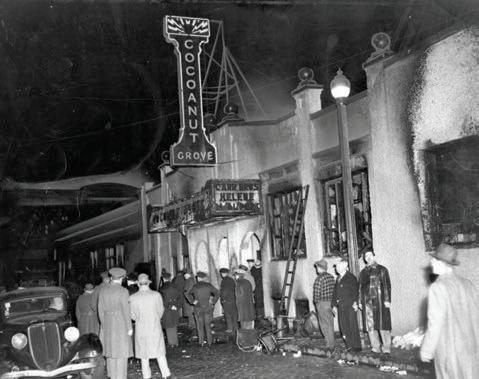
Linden Lane // Campus Digest
illustrations: Anna Godeassi/i Spot (Strides); Undrey/Shutterstock (Course Spotlight) photo: The Boston Globe/Getty Images program : Courtesy of Andrew Nelson
COURSE SPOTLIGHT
6 bcm v fall 2022
Campus News
The Connell School of Nursing has been awarded a $1.06-million grant from the American Nurses Foundation for a project that aims to help nurse practitioner-led practices get financial reimbursement from the U.S. healthcare system. The system is changing the way it pays for health care, rewarding value over volume—a shift that can pose financial risks for small, indepen dent NP-led practices. The initiative will also support the design and implementa tion of tech-led interventions to improve nursing care.
Boston College Dining Services recently received the gold award in the National Association of College & University Food Services’ annual Sustainability Awards, given to institutions that implement sustainable practices in their dining facilities. BC was the winner in the waste management cat egory, in recognition of its commitment to recycling and composting.
Nine Boston College alumni, including three from the Class of 2022, have been selected to receive Fulbright grants. BC has consistently ranked among the nation’s top producers of student Fulbright win ners, according to statistics compiled by The Chronicle of Higher Education, and was fifteenth among doctoral institutions in the most recent survey.
A new online program launched by the School of Social Work will prepare stu dents to work in the humanitarian aid and development sectors. The Interdisciplinary Certificate in Humanitarian Assistance pro gram features eight learning modules, each related to specific social, political, or health challenges experienced by the world’s most vulnerable populations. The program is open to all undergraduate, graduate, and professional students in affiliated fields.
More than eighty Boston Public School students participated in May’s inaugural Boston College Conference for Young Women. Attendees of the daylong confer ence for seventh to twelfth graders sat in on sessions about leadership, mental health, and college preparation.
Max Thomsen
CHARACTER SKETCH
John Gurda ’69
John Gurda is the preeminent historian of his native Milwaukee, Wisconsin, and the author of more than twenty books. His The Making of Milwaukee was turned into an Emmy-winning documentary series. —Archer Parquette ’18
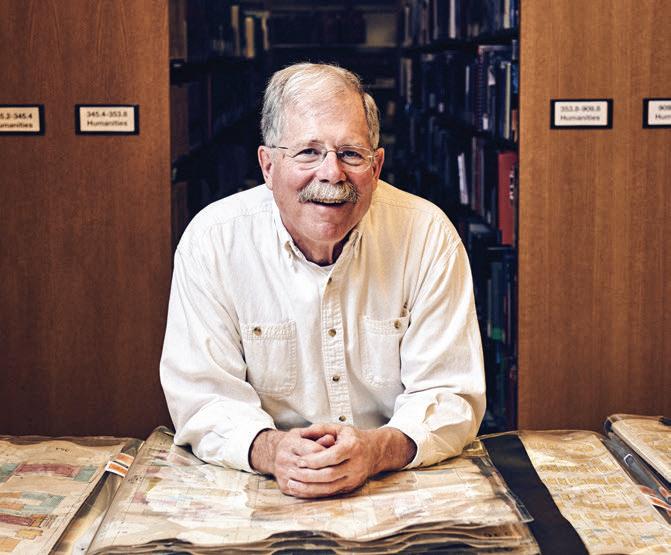
When I was at BC, I had this shaggy-haired notion of what a person does for a living—I wanted to be a poet. I graduated, and it turned out all the poet jobs were taken. My friend back home had started a painting company, so I worked painting houses with him for a few years.
I volunteered at a social work organization on the South Side of Milwaukee. To convince corporations to fund our programs, I wrote this very primitive—I won’t say embarrass ing—short history of the neighborhood. Researching that, I found the kind of stuff that’s interested me ever since: ethnicity, a strong sense of community, urban villages, the story of the city, and, really, the American story. To my surprise, it was published, and people seemed to think it was interesting. I’ve had a two-track career ever since—free lance research and writing for corporations and nonprofits, and then books of Milwau kee history. The first to pay for the second. I haven’t filed a W2 since 1972.
I began The Making of Milwaukee in 1995. By that time, I’d done a lot of books and it felt like I had assembled the pieces of the puzzle. I felt this responsibility and this passion to put those pieces together and tell Milwaukee’s story. That book took me five years and it sold remarkably well. I talked to Milwaukee PBS about a documentary series, and we ended up making a five-hour companion show that won an Emmy in 2006. We’re on the fourth edition of the book now.
When I stumbled into my career, I felt like I rediscovered this connection with the past that we all have, a connection that I now believe is essential. But I’m not nostalgic about my work. I don’t believe there ever have been any “good ol’ days.” History is the human condition, the good and the bad—it’s all part of being alive.
photo:
fall 2022 v bcm 7
The Odds Father
How the Jesuit priest and Boston College professor Richard McGowan, SJ, became a leading gambling expert.
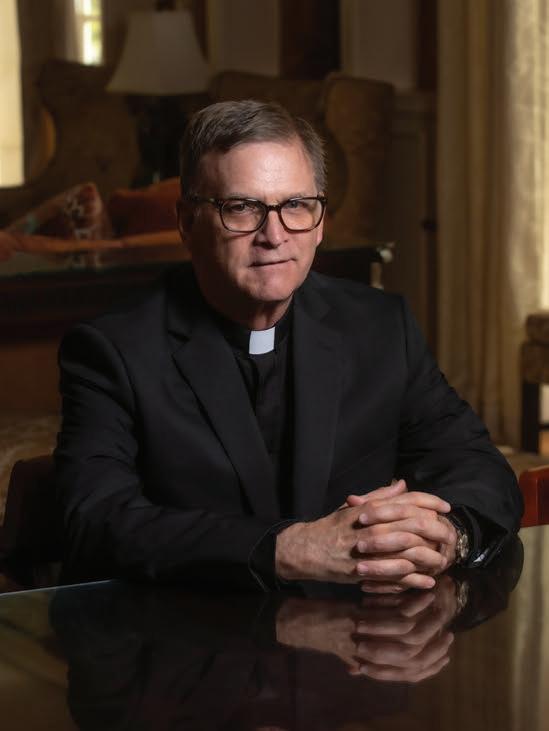 BY ALIX HACKETT
BY ALIX HACKETT
Richard McGowan, SJ, has taught courses in finance and statistics for more than thirty years at Boston College, where he is fondly referred to as “Father McGowan.” But in El Salvador, where he travels twice a year to teach executive educa tion courses at the University of Central America, his colleagues have given him a less traditional moniker. “They call me the sin priest down there,” McGowan said with a laugh. “I don’t know whether to be honored or not, but it actually is quite true.”
McGowan has spent nearly the entirety of his academic career studying humankind’s various vices—namely gam bling, alcohol, and cigarettes— and the public policies designed to regulate them. Today, he’s one of the nation’s foremost experts on the so-called “sin industries,” commenting in national news stories on casino policy and marijuana legalization and con sulting with state governments on gaming regulations. He’s published numerous articles on everything from state-run lot teries to the Spanish cigarette industry, as well as six books, with another on the way.
McGowan’s research inter ests run in two directions: As a trained economist, he spends much of his time searching for trends in data and creating models to predict economic outcomes, such as how much revenue will be generated by legalized sports betting. But as a Jesuit priest, McGowan is also fascinated by human behavior, including the public’s shifting opinion of which “sinful” behav iors are ethical, and which aren’t. “In the sixties, only one state had casino gambling and you
could smoke anywhere,” he said. “Now, cigarette smokers are absolute pariahs and everyone accepts gambling. Why is that?”
McGowan began studying the sin industries in the 1980s as a doctoral student at Boston University, where he completed a dissertation examining the
and attending regular confer ences in Las Vegas, despite his personal aversion to the city. (“After three days I’ve about had it.”) As states began to contem plate legalizing marijuana for medical and recreational use, McGowan added another sin to his arsenal, writing articles on
and Amazon. This more recent focus will feature prominently in his upcoming book, Economics, Ethics and Public Policy: Past and Future Sin Industries. McGowan and colleagues in Spain and Australia are also studying the potential consequences of legal ized sports betting, including the cost of gambling addiction, which is difficult to quantify, but important to understand, McGowan said. “The Jesuits were always famous for looking at both sides of the issue and when you do that, you realize there are consequences for what ever action you take, even if it’s the right action,” he said. “The first thing I teach my econom ics students is that there’s an opportunity cost no matter what you do.”
Traditional theologians might cringe at the subjects he’s chosen to study, but McGowan said his research helps policymakers and elected officials make the choices that most ben efit society. Where others may see products like e-cigarettes or soda as purely bad, McGowan has a more nuanced view: What if e-cigarettes could help lifelong smokers quit? Would you rather a person smoked marijuana or used opioids? Sometimes, he said, “you have to measure the lesser evil.”
effects of excise taxes and antismoking laws on cigarette sales. After completing his first book on the topic, he shifted his attention to the alcohol industry and later became an expert in legalized gambling, sitting on several gaming commissions
the pros and cons of legalization and testifying about the public policy implications.
More recently, McGowan has expanded his definition of “sin industries.” He now studies soft drink manufacturers, as well as tech companies like Facebook
Whatever else you can say about being the sin priest, it comes with job security. Recently, a conversation with a student got McGowan thinking about self-driving cars, a contro versial topic with a long list of pros and cons—his favorite kind of topic to explore. “As soon as I hear people say, ‘we’ve got to regulate this,’ my ears perk up and go, ‘aha, a new industry!’” n
Linden Lane photo: Lee Pellegrini8 bcm v fall 2022
Paying It Forward
Lurein Perera ’21 developed a novel idea for using debit cards to put money in the hands of people experiencing homelessness.
BY ELIZABETH CLEMENTE
Launching a nonprofit is a lot of work. But the idea that GiveCard founder Lurein Perera ’21 came up with four years ago—distribut ing prepaid debit cards to people experienc ing homelessness—was especially ambitious. Perera was a sophomore at Boston College when someone on the street asked him for money. He wanted to help but he didn’t have any cash. It was likely a common issue, he realized, and it made him wonder how an increasingly cashless world affects people who rely on donations for survival.
With this experience still fresh in his mind, Perera founded a nonprofit called GiveCard in 2018. He wanted to find a way to efficiently put money into the hands of people without housing. But how do you safely give someone a bunch of money when they lack access to a safe place to keep it? The answer, Perera decided, was debit cards that could be handed out to those in need of assistance. So he launched a GoFundMe campaign that raised $4,000 for an initial batch of distributions. Perera and a group of other BC students also began conduct ing research, including a study facilitated by the BC School of Social Work. When the team met with a group of formerly homeless people, one woman told Perera that an extra $250 per month would have been life chang ing. “Our theory was, what if we just gave someone like her that amount?” Perera said.
To date, GiveCard has raised more than $250,000, including more than $100,000 in funding from partnerships with other organizations that support its mission. It provides recipients with debit cards loaded with as much as $250 per month, for three months. (Users are prohibited from using their cards for alcohol, tobacco, or gam bling.) GiveCard handed out its first debit card in April 2021. A year and a half later, the organization has distributed more than a thousand, and dispensed a total of more than $100,000.
Much of GiveCard’s work at first was simply finding a bank that was willing to set up a debit card program. It can cost mil lions just to start such a program, Perera explained. “For the first year and a half, every bank refused to talk to us,” he said. The company received rejections from sixty institutions before reaching an agreement with Sutton Bank. Assistance also came from several donors and mentors, including a BC alum who helped the GiveCard team understand relevant laws. “We were scrappy, but we were also able to use the tools that we had,” said Diksha Thach ’21, GiveCard’s director of operations.
Giving directly to those in need is not a new idea. But the past five years have seen socalled guaranteed income programs—which allow qualifying individuals to receive “no
strings attached” funds from the govern ment or private organizations—go from a radical notion to a mainstream idea. In fact, direct-giving nonprofits have been spring ing up seemingly everywhere in the wake of the pandemic. That, in part, has inspired GiveCard to branch out from its original premise. Perera said it doesn’t “make sense for GiveCard to be one of twenty guaranteed income providers when we were one of the ones that kind of pioneered this to begin with.” So this summer, the organization launched a new for-profit offshoot that will distribute debit cards on behalf of more than a dozen other organizations. The for-profit arm will generate revenue by charging out side organizations to use its platform, and by collecting the interchange fees generated by users swiping cards. Some of that money will be given to GiveCard’s nonprofit arm, which now operates as a client of the for-profit.
The plan going forward is to expand both the nonprofit and for-profit sides of GiveCard in tandem. The for-profit’s infra structure will equip the nonprofit arm with new capabilities, such as allowing people to add funds online to a GiveCard user’s card.
Perera said he hopes the new platform will generate $30 million in giving over the next year. “It’s bold, but possible with the amount of funding avenues the platform has opened up,” he said. n

illustration: Dana Smith
fall 2022 v bcm 9
Celebrating 245 Beacon
A night of festivities formally opens BC’s new integrated science building.
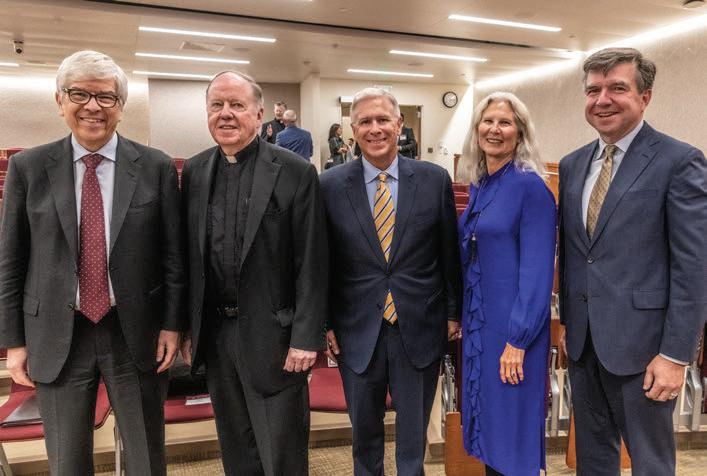 BY JOHN SHAKESPEAR
BY JOHN SHAKESPEAR
Boston College’s sparkling new $150 mil lion integrated science center has gotten off to a roaring start since opening earlier this year, so spirits were high during the September formal unveiling of the build ing, which is known as 245 Beacon Street. Hundreds of BC trustees, benefactors, faculty, staff, and students explored the 150,000-square-foot building, attending science-focused panel discussions, demon strations, and lectures.
In his opening remarks, Provost and Dean of Faculties David Quigley said that the new building was “a profound state ment of institutional and collective belief.” He summed up the overarching mission of 245 Beacon Street by screening a video of the late Paul Farmer, the cofounder of the celebrated public health nonprofit Partners in Health, who spoke back in 2017 during the launch of BC’s Schiller Institute for Integrated Science and Society, which is a centerpiece of the new facility. “Boston College can make its chief contribution in linking our understanding of science and technology to other broad categories,” Farmer said onscreen, “and in applying them in a reparative way to social problems.”
That simple message—that BC’s approach to integrated sciences is anchored in its mission to make the world a better place—resonated throughout the event. During his keynote address, the Nobel Prizewinning economist, policy entrepreneur, and NYU professor Paul Romer cited centuries of history to argue that science and society must remain deeply intertwined.
“Science encouraged everyone to be rigorous about honesty and integrity, and that bled into all of Western culture,” Romer said. “I don’t think we should take those values for granted. I think we should work to ensure that the next generation is also acculturated into a system that cares about integrity and truth.”
Thomas Chiles, vice provost for research, moderated a faculty panel featur ing engineering Assistant Professor Avneet Hira, earth and environmental science Professor Yi Ming, and Fitzgerald Professor of Computer Science George Mohler, each of whom applies scientific methods to research into societal problems ranging from inequality to global warming.
And on the facility’s upper floors, the crowd listened to presentations by faculty
and students in 245 Beacon’s many laborato ries, maker spaces, and common areas.
In one presentation, held in the fifth-floor home of the new Engineering Department, department chair Glenn Gaudette and a team of students and fellows explained how they had managed to grow both sustainable meat proteins and human heart tissue on regular leaves of spinach. The decellularization processes involved were complex, Gaudette said, but the impulse behind them was simple enough. “We need engineers who can under stand the real needs of society and culture, and then get to work on those problems,” he said. “That’s what we’re doing here: combin ing the technical with the non-technical so we can train engineers for others.”
Down the hall, Eddy Jiang ’22 chatted with guests about his work with the Affirm Lab, a School of Social Work initiative that is collaborating with the Schiller Institute to reduce inequities for marginalized youth. Jiang, now in his first year in BC’s Mental Health Counseling master’s program, said that working with computer scientists had been far from the intimidating challenge he initially imagined. “The beauty of the Schiller Institute is that it connects us,” he said, “but it lets us stay who we are.”
Back downstairs, students in the proto typing and maker spaces were using stateof-the-art equipment to their own creative ends. Will Gotanda ’25 had built a kinetic sculpture using the facility’s 3D printers and laser cutters, while Jasroop Dhingra ’25 had printed herself a new iPhone case. Their classmate Cyrus Rosen, a member of BC’s Carpentry Team who trains others to use the building’s industrial saws, was tak ing a moment for a personal project: a set of drawer dividers for his mom’s birthday. “I’d never seen a 3D printer or a vinyl cutter nine months ago, but now I consider myself proficient,” said human-centered engineering major Maggie Hynes ’25. “I love that anyone can access this space and learn, whatever they’re majoring in.”
Phil Schiller ’82 summed up the entire event and the mission of the building itself during his benefactor’s remarks. This kind of exploration and development was at the heart of the vision he and his wife Kim GassettSchiller had for the Schiller Institute and 245 Beacon as a whole, he told the crowd. “Come in during the day and see the students who fill the labs, the classrooms, and the halls with their creativity, curiosity, and enthusiasm,” Schiller said. “Because that’s what it’s all about, and that’s why we created this.” n
photo: Lee Pellegrini
Linden Lane
Attending the formal opening of 245 Beacon Street were, from left, NYU Professor Paul Romer, BC President William P. Leahy, SJ, Phil Schiller ‘82, Kim Gassett-Schiller, and BC Provost David Quigley.
10 bcm v fall 2022
A Four-Day Work Week?
Boston College Professor Juliet Schor on why more and more companies are making the shift.
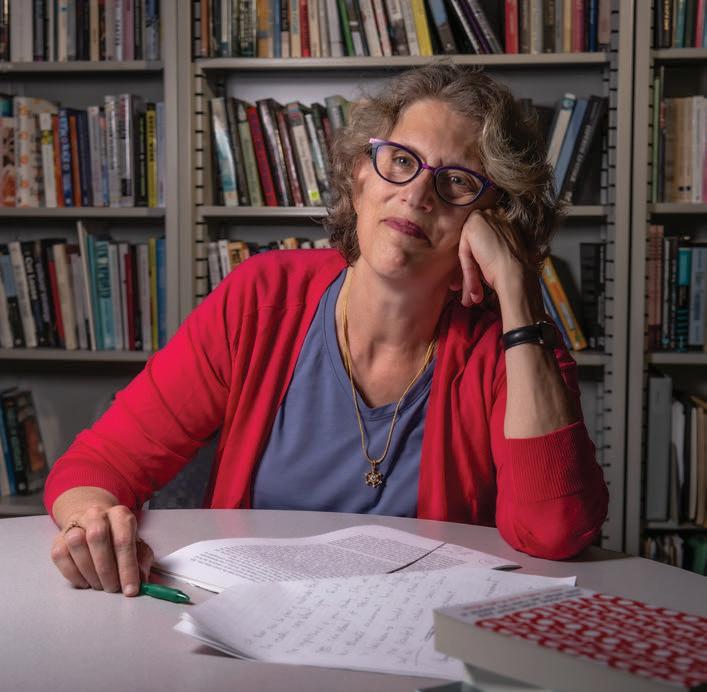 BY COURTNEY HOLLANDS
BY COURTNEY HOLLANDS
In a recent TED Talk, Boston College econo mist and sociologist Juliet Schor explained how a four-day work week benefits employers, employees, and society by reducing burnout and turnover while maintaining or improving performance and lowering carbon emissions. Here, Schor discusses her research.
What are the origins of this idea? There were a lot of predictions in the sixties that automa tion was going to lead to a four-day work week. In the seventies, a few companies went to a shorter week, but it didn’t have much momentum and it fell off the table as a serious thing. I lived in the Netherlands in the midnineties where the four-day week was pretty common, although it typically came with an 80 percent salary. Before the pandemic, we started seeing companies trying it, but with five days of pay, which is a very different thing. It was anecdotal: this company here, that company there, maybe a hundred companies around the world. Then the pandemic turbo charged the four-day work week movement.
Research has typically shown that employees are just as productive in four days as they are in five. Why is that? The main reason that people are able to maintain productivity is that companies are also focusing on “work reorganization,” or cutting out low-value and zero-value activities. Meetings have been the biggest target of work reorganization. They are too long, they are organized inefficiently, and too many people go to them. Workers can also communicate in more efficient ways, perhaps shifting from phone calls to using Slack and other messaging apps. Finally, employees move doctor’s appointments and other personal errands to their off days.
You are currently studying four-day work week trials around the world with thousands of employees enrolled. What have you found so far? We’ve just started getting results. But at the midpoint of the first trial, we’ve had fantastic results concerning employee wellbeing. Burnout went down. Stress went down. Physical health improved. Mental health improved. Life satisfaction went up. Sleep increased. Quality of sleep increased. Overall satisfaction with time availability went up. Job satisfaction did not go up,
however, which is interesting. But we think that may be because it was already baked in at the baseline—everybody knew they were getting a four-day week, so they were prob ably already happy with their jobs. We have a group of people whose work time didn’t go down, however, some of whom were in sales and got paid on commission. It may be just taking some people a while to extricate them selves from that fifth day of work.
How does a four-day work week benefit employers? Companies have at least equiva lent, if not higher, productivity, because they’re doing things more efficiently and edit ing out low-productivity activity. Employers are also saving money in healthcare costs and resignations, and are able to recruit and attract people. We’re in the middle of a “Great Resignation,” in which many employ ers are having trouble filling positions. And
that’s increasingly a reason that we’re seeing companies join our trials—the four-day work week is a big and growing benefit.
What advice do you have for employers considering the shift? First, let the work reor ganization be driven by the people who are doing the work. Get down to the team level and you’ll be a lot more successful. You can’t micromanage. You have to empower and trust people. Employers who shifted to remote work during the pandemic recognized that they had to trust people to do the work—and it worked out. And second, it’s cliché but don’t sweat the small stuff. Don’t worry about individual productivity. Don’t worry that every employee is doing just exactly as much work as they were before. You need to make this work at your team level and your overall organization level. Focus on that rather than maniacally watching keystrokes. n
photo: Lee Pellegrini fall 2022 v bcm 11
Meet Blake James, the New Director of Athletics
The former University of Miami AD lands at Boston College.
BY ELIZABETH CLEMENTE
Blake James, BC’s new William V. Campbell Director of Athletics, arrived at the Heights in July after eight years of directing the University of Miami’s athletic program. He replaces former BC athletic director Pat Kraft, who was named to the same posi tion at Penn State. During James’s time at Miami, the Hurricanes won several NCAA and ACC championships. Earlier in his
EXTRA POINTS
A new era has arrived for BC Women’s Volleyball, which defeated Duke 3–2 in its first match at its new home court in the Connell Recreation Center Sept. 25. The Eagles previously played home games at BC’s Power Gym, but have moved due to construction on the forthcom ing Hoag Basketball Pavilion. The ACC home opener drew an over flow crowd and elevated the Eagles’ record to 12–3, matching the best start in program history.
career, James served for five years as ath letic director at the University of Maine, and worked in athletic development at Providence College.
What are your goals for BC athletics?
My goal is to elevate the Heights to new heights. I want to see us achieve excellence in academics, athletics, and in life, and
create the best student experience possible, while recognizing our Jesuit values and who we are as a program.
How do you expect working at BC will be different from Miami? I think they’re very similar. We have quite a few more programs here, so there’s more for me to get around to and to be a part of. The biggest difference is just the broad offerings that we have when you look at thirty-one programs at BC versus eighteen programs at Miami. So for me to really have a presence with all of our teams is an important part of my job. It’s a challenge I’m excited for, and I look forward to really experiencing all of our teams in action.
What draws you to college athletics? What’s the biggest challenge? The thing I love most is being able to change the lives of the young people who come here. Whether that’s developing them as athletes or, more importantly, developing them as people and getting them a degree that can change their lives in so many ways. The biggest challenge is the constantly changing world of college athletics—and figuring out how to continue to create the right experience for the young people in our program. We need to make sure we evolve in a way that’s consistent with our values and who we are as an institution, but that’s also in line with the demands of Division 1 athletics.
How is it being back in the area? We spent eight years in New England, seven in Maine and one in Providence. I really fell in love with Boston as a city. Now, having the opportunity to live here and really get to experience the benefits of such a great city firsthand is something we’re really excited about. n
In June, Charlotte North ’22 earned her second-straight Tewaaraton Award as the top female college lacrosse player. She’s one of seven players ever to receive the award twice. Last season, North led the Eagles with 92 goals, 115 points, and 139 draw controls; helped propel the team to its fifth straight national championship game; and broke the Division I record with 358 career goals.

Boston College Athletics received a $1.25 million gift from James “Jim” Maher ’71 to endow a full-time head coaching posi tion for the BC skiing program. A former captain of the ski team, and the father of BC skier Elizabeth “Liz” Daniels ’02, Maher said he hopes the gift will help the squad build “on the tremendous momentum of the last few seasons.” Since sending its first skier ever to the NCAA Championships in 2018, BC has sent seven additional skiers to compete.

Linden Lane // Sports
photos:
John Quackenbos12 bcm v fall 2022
“This choir book was the missing piece of a set of sacred music books printed by Susana Muñoz in the early 17th century . . . it exemplifies the too-oftenignored contribution of women to the early years of music printing in the Iberian Peninsula.” —BC Music Department Chair Michael Noone (above, right), in the Herald News. Noone is coordinating the digitization of the only known surviving copy of Diego de Bruceña’s Book of Masses, Magnificas and Motets, which was discovered in Portugal in 2015.
 QUICK Q&A
QUICK Q&A
Joe Sabia ’06
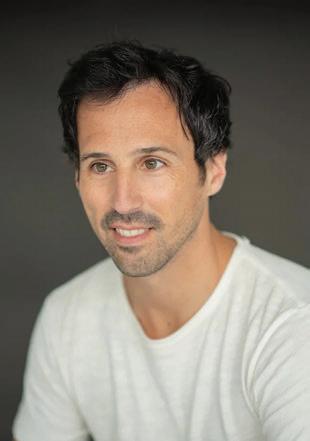
The online video producer and creator of Vogue’s hit celebrity interview series “73 Questions.”
How did the idea for the “73 Questions” series come about? Condé Nast Entertainment, the video division of the magazine publisher, asked, “What would you do if you had four hours with actress Sarah Jessica Parker?” I had done some work for Vanity Fair before then, but this was my first time being approached to film a celebrity. I was really into one-take videos during that time—and I thought it could be really fun to ask Sarah Jessica Parker as many questions as possible in one take.
What makes video content go viral? A unique concept—when people see it, they imme diately understand that it’s like nothing they’ve ever seen before.
What’s the best advice you can give? My mom passed away in March and I’ve been thinking a lot about what she gifted me. I was a kid obsessed with so many strange interests, and she gave me the freedom to be in love with what I was in love with. She poured gasoline on every flame of excitement. I’m so grateful for that. My advice would be to do that for yourself: Find out what excites you and then figure out the ways that you can really turn that flame into a life-changing conflagration. Christine Balquist
Politico
On corporations’ responses to the Supreme Court overturning Roe v. Wade.
“I think if they can, they will stay away from public statements because there is too much risk of alienating one group or another, any of whom could be customers.”
Sandra Waddock, the Galligan Chair of Strategy at BC’s Carroll School of Management
Boston Globe
On how parents giving their daughters toys like Barbie dolls contributes to the STEM gender gap.

“If you’re a boy, they give you trucks or airplanes or cars. This kind of social norm is very difficult to correct.”
Deoksoon Kim, associate professor at BC’s Lynch School of Education and Human Development
The Atlantic
On the legal battle brewing over Elon Musk’s canceled buyout of Twitter.
“If I were his lawyer, I’d walk away. Musk is a nightmare client.”
Barron’s
On one way Americans can benefit from the beleaguered retirement system.
“I’m very sensitive to the fact that the prescription for working longer is not applicable to everybody. Not all peo ple are healthy enough to keep doing it. But for anybody who can work lon ger, it is definitely the way to assure that you have a secure future.”
Alicia H. Munnell, director of the Center for Retirement Research at BC
photos: Michael Noone (Noone); Courtesy of Joe Sabia ( Sabia); NeydtStock/Shutterstock (Barbie)
Brian Quinn, BC Law Associate Professor
BC IN THE NEWS
fall 2022 v bcm 13
Using AI to Study Autism
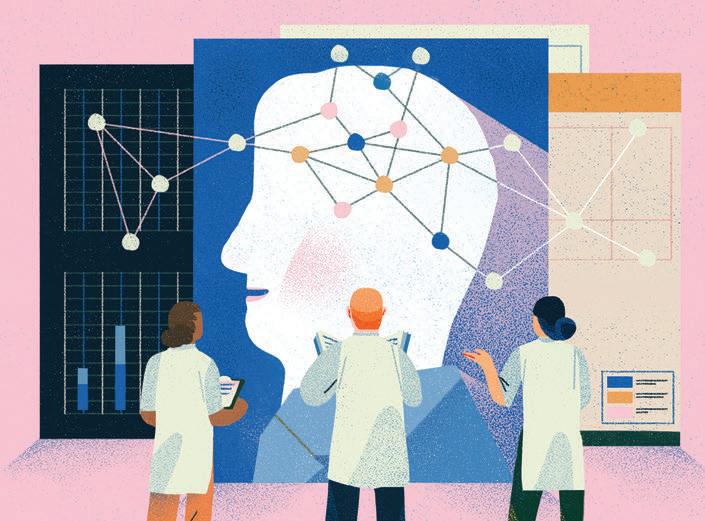
New discoveries published by BC researchers could help identify the causes of Autism Spectrum Disorder, and lead to personalized interventions.
BY ED HAYWARD
Differences in behavior among people with Autism Spectrum Disorder (ASD) are closely related to differences in neuroanatomy—the shape of a brain—a team of Boston College neuroscientists reported in a recent issue of the journal Science. This discovery could aid in understanding the causes of ASD, and in developing personalized treatments.
The BC researchers used artificial intel ligence to study MRI data from over one thousand individuals with ASD and compared those images to simulations of what the brains would look like if they did not have ASD. “We found that different people with ASD can have different brain areas affected, and thanks to
MORE FROM THE LAB
New mental health services and support will be provided to local Black and Latino children thanks to a partnership between the Boston College School of Social Work and Boston Public Schools, and a two-year, $500,000 grant from Boston Children’s Hospital. The program, a joint effort from BC’s Latinx Leadership Initiative and Black Leadership Initiative, will serve a population that is statistically more likely to experience trauma than other children.
the AI-simulated brains, we were able to iden tify which specific brain regions vary among ASD individuals,” said Aidas Aglinskas, a Boston College post-doctoral researcher and coauthor of the report. “In addition, separating ASD-related variation in brain anatomy from unrelated variation revealed hidden relation ships between individual differences in brain anatomy and symptoms.”
Autism differs—both in symptoms and neuroanatomy—from one individual to another. Prior research has hypothesized that there might not be a single set of neuroana tomical characteristics common to all individu als with ASD. Confirming those suggestions
has been difficult because identifying ASDspecific neural alterations is a challenging task, said Aglinskas, who conducted the research with BC Assistant Professors of Neuroscience Joshua Hartshorne and Stefano Anzellotti. Brains are different due to many factors, including genetic variation not due to ASD, which is hard to control for in a research study.
That’s why the team turned to AI to identify patterns of neural variability that are ASD-specific and to determine whether these ASD-specific features of brain anatomy vary across individuals in a way that relates to their symptoms. To create the simulations of what each individual’s brain would look like if they did not have ASD, the team employed a novel AI technique that separates individual differences in brain anatomy into ASDspecific and ASD-unrelated features. “We were surprised to find that, despite observing a large amount of variation in brain anatomy between ASD individuals along multiple dimensions, individuals did not group into distinct, categorical subtypes as previously thought,” Aglinskas said.
Moving forward, the researchers point to a need to understand in more detail how these neuroanatomical differences affect behavior. Anzellotti said they plan to use the AI tools to look beyond brain structure for ways to better understand ASD diagnoses and the behavior of individuals with ASD. “Two brains can be shaped very similarly but still work differently,” Anzellotti said. “There are a number of other aspects of the brain we will need to look at to get a full picture. Right now, we are focused on functional connectivity—a measure of how the brain is wired. A big question is whether that will show us something new about individual dif ferences within ASD. The goal of this type of work is to be able to use brain imaging data to aid in developing personalized healthcare approaches for those with ASD.” n
In conjunction with an interna tional team of researchers, BC’s Global Observatory on Pollution and Health has launched a yearlong study of the effects of plastic products on global human health.
“Plastic poses hazards to human health at every stage of its lifecycle,” said Philip Landrigan, director of the observatory. The research is timely, he added, as plastic manufacturing is increasing exponentially.
Researchers from Boston College, Joslin Diabetes Center, and the Netherlands’s Maastricht University discovered a link between gut microbes and pancreatic function. The findings, which were pub lished in May in the journal Diabetes, could help in developing treatments for several diseases. “Our results are quite novel and very exciting,” said Emrah Atlindis, a coauthor and an assistant professor of biology at BC.

Linden Lane // Research
illustration: Jeannie Phan/i Spot photo : MNI/Shutterstock14 bcm v fall 2022
AS TOLD
Gretchen Libby ’90
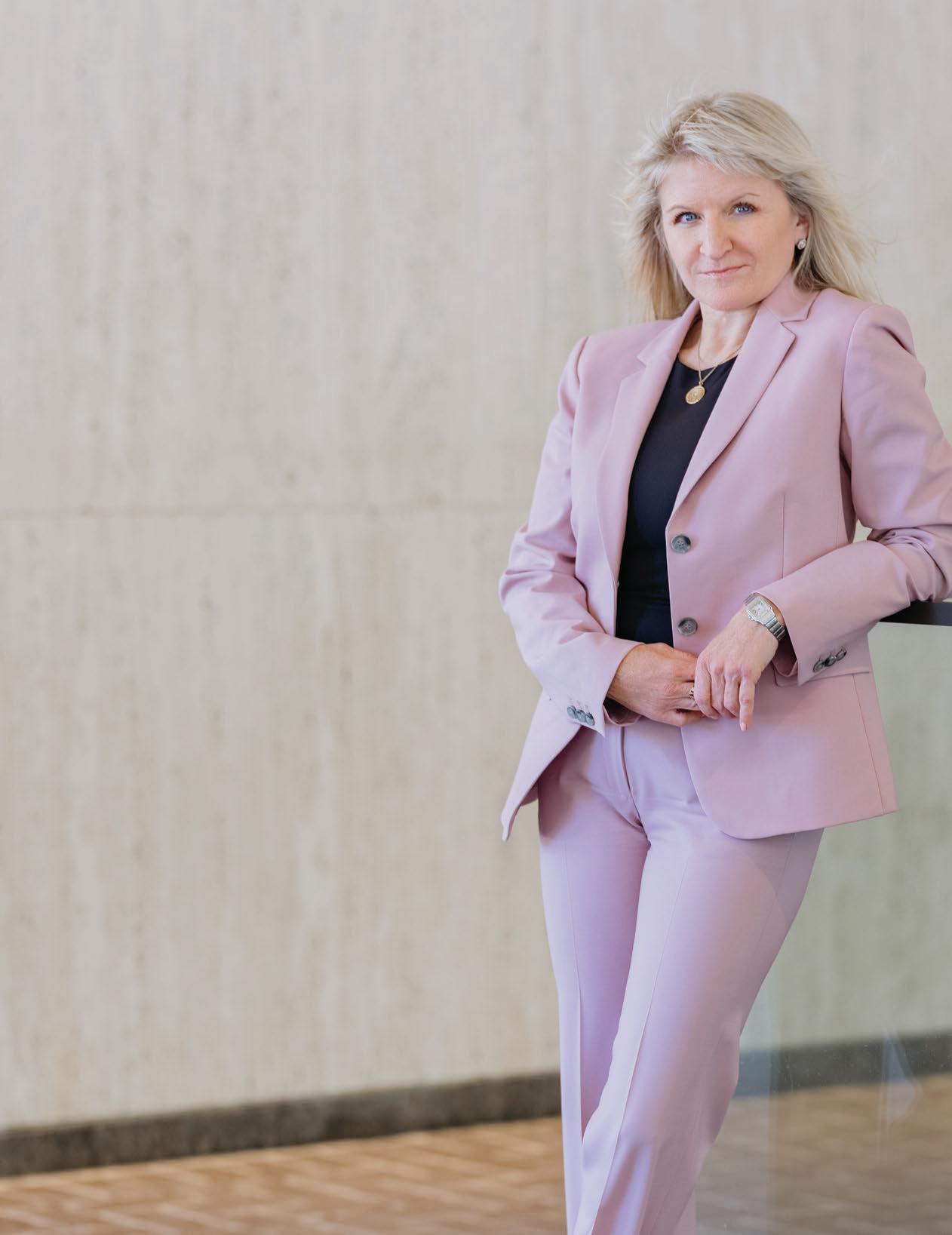
On a career spent creating movie magic. I worked in the film industry for more than a quarter of a century, nearly all of it at Industrial Light & Magic (ILM), the visual-effects company founded by Star Wars writer and director George Lucas. I held several positions at the company, eventually becoming vice president of production and overseeing projects at four global stu dios. Along the way, I worked on dozens of award-winning films, including Star Wars: Attack of the Clones, Iron Man, and Avatar
Over the years I witnessed an advancement in technology that enabled storytelling on a larger scale. In the 2000s, the advance ment of computer graphics enabled projects like Lord of the Rings, Transformers, and the Marvel films, which all returned huge prof its. There were also films that utilized visual effects for storytell ing purposes. One film I’m particularly proud of is The Revenant, in which the main character fights a computer-generated bear created by ILM.
In 2020, I decided I was ready for a new challenge and joined AWS, Amazon’s cloud computing service provider, where I am the director of visual computing. I help people who create film and television movie content do so in the cloud. The cloud refers to software and services that run on the Internet, instead of locally on your computer. Large entertainment companies often used to have data centers in their offices, referred to as “on premises,” where all imagery was rendered and stored. Sending those workloads to the cloud instead can save companies significant amounts of money.
My experience in the film industry is helpful in my current role because I understand our clients’ business. I have watched the entertainment industry evolve and know how important it is to have data managed and stored securely. Meanwhile, another of my teams at AWS is focused on the metaverse and the multi tude of options to combine the physical and virtual worlds across all industries.
I feel incredibly blessed to have had my career experiences. I grew up in a small town in Maine and the education I received at BC gave me a wonderful foundation for where I am today. As a member of the Academy of Motion Picture Arts & Sciences, I’m regularly given the opportunity to mentor up-and-coming film makers. I was fortunate enough to work with several women in leadership positions at Lucasfilm and ILM despite the industry being traditionally male dominated. I try my best now to be a mentor to women in the film and tech industries, as well as others who might not have an easy way in. I’m also always looking for opportunities to grow my teams at AWS with people from varied backgrounds. I truly believe the more perspectives we hear, the better we can serve all kinds of customers
As told to Elizabeth Clemente
TO photo: Aaron Wojack fall 2022 v bcm 15
Female Genius
BY KARA BASKIN
Modern politicians understand how to play to the media with provocative tweets and photo ops. In her new book, Female Genius: Eliza Harriot and George Washington at the Dawn of the Constitution, BC Law School
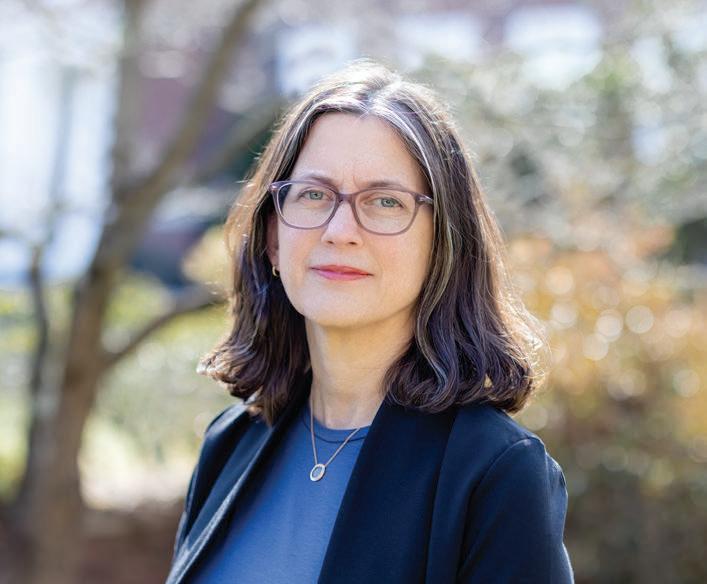

Founders Professor Mary Sarah Bilder intro duces readers to one of the original political influencers, the eighteenth-century education activist Eliza Harriot O’Connor. To draw attention to her mission, Eliza Harriot—as Bilder refers to O’Connor—knew she had to secure an audience with George Washington. And in doing so, Bilder suggests, she altered the course of history.
In the late 1700s, the well-connected O’Connor—born in Portugal of British parents—toured the United States, advocat ing for women’s education as the nation’s first female public lecturer. Determined to get Washington’s attention, she scheduled one of her talks for a time when the future president was most likely to be available. And in fact, shortly before the Constitutional Convention, Washington did attend one of her 1787 lectures at the University of Pennsylvania.
“She realized that, if Washington was the most important person in the United States, and if he could come to her lecture, then all the newspapers would pick it up and comment,”
Bilder said. “She delayed her lecture for a day so that he could show up. It went viral in the eighteenth-century sense, with over 150 advertisements or commentaries about her in the summer of 1787.”
Bilder believes Eliza Harriot’s ideas about
gender equality in education and political participation influenced the Constitution’s gender-neutral language, with its references to “persons” or “citizens.” It was an exciting, promising time, Bilder said, when American law was very much in flux and the question of women’s suffrage hadn’t yet been decided. “This is a moment where things were more open—the kinds of constitutional exclu sions that became very clear in the later 1790s aren’t quite yet in place,” she said. For instance, New Jersey’s constitution autho rized women to vote until the state legisla ture stripped that right away in 1807.
Bilder discovered Eliza Harriot while researching her last book, Madison’s Hand: Revisiting the Constitutional Convention, which won the Bancroft Prize.
In perusing Washington’s diaries, she spotted references to the ambitious Eliza Harriot, who ran a boarding school for young women in New York that focused on belles lettres, elocution, math, and geogra phy. Washington even called her ideas “tolerable,” which was true praise for the time. “I always love that: It’s how Mr. Darcy describes Elizabeth Bennett in Pride and Prejudice,” Bilder said. “It’s not a complete embrace, but it’s certainly not rejection. It’s a kind of open ness to the idea that women aren’t inferior.”
As such, opposing republican mother hood—the post-Revolutionary notion that American women should be educated only to support male family members—figures prominently in Eliza Harriot’s story. One of the idea’s most vocal critics, she secured a
five-day invitation to Washington’s Mount Vernon estate in 1788 to discuss plans for a young ladies’ academy there. “She doesn’t move to the United States think ing, ‘I’m a lesser human being,’” Bilder said with a laugh. “She invited herself to Mount Vernon. She didn’t even have a carriage, so Washington sent a carriage for her.” Eliza Harriot went on to open female academies throughout the South.
The title Female Genius is a nod to Eliza Harriot’s ingenuity, which stood out at the time in America, even as female debating societies and political involvement were tak ing root in Europe. In some ways, Bilder con siders Eliza Harriot to be the lesser-known, stateside version of the British activist Mary Wollstonecraft, who authored the landmark feminist work, A Vindication of the Rights of Woman, which argued that women deserve the same fundamental rights, including access to education and political representa tion, as men.
Female Genius spotlights not only a trail blazer for women’s rights but also an over looked era, pre-Constitution, when women had the potential right to vote, and weren’t merely consigned to domestic duties. Yet, despite this brief moment of hope, women were gradually edged out of politics and edu cation—and the trajectory of Eliza Harriot’s life unfortunately followed suit. After her initial success, she lived an itinerant life due to the debts of her would-be writer husband. “It’s a sort of sad story,” Bilder said. “Early nineteenth-century constitutions moved toward explicitly enfranchising white men. Eliza Harriot’s story tracks that larger story— and yet, it also reminds us how inspirational women pushing at these boundaries were.” n
photo: Caitlin Cunningham
Linden Lane // Books
BC Law Professor Mary Sarah Bilder chronicles the political feats of the eighteenth-century education activist Eliza Harriot.
16 bcm v fall 2022
Living with Purpose
In a new book, Lynch School Professor Belle Liang helps readers navigate school, work, and life.
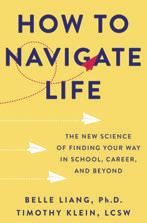
Belle Liang is familiar with defying expecta tions. The chair and professor of counseling, developmental, and educational psychology at BC’s Lynch School of Education and Human Development is the daughter of first-generation Chinese immigrants and spent two years in college studying hard sci ences in an attempt to achieve her parents’ career aspirations for her. So when Liang pivoted to studying psychology, her fam ily was shocked. “Trying to mold myself into someone’s stereotype of me left me exhausted and confused,” she wrote in her new book How to Navigate Life: The New Science of Finding Your Way in School, Career, and Beyond, “but as my understanding of who I am came into sharper focus during my later college and adult years, this understand ing became my guide.” In the book, Liang and her coauthor, the clinical social worker Timothy Klein, share research-backed advice on how to live driven by purpose rather than by a fear of failure.
Members of Gen Z prioritize purpose ful living, Liang said, but they have not been taught how to be decisive in doing so. To begin that process, the book lays out “The Five Purpose Principles,” a decision-making framework that encourages readers to com mit to what the authors call a “purpose mind set” rather than a “performance mindset.”
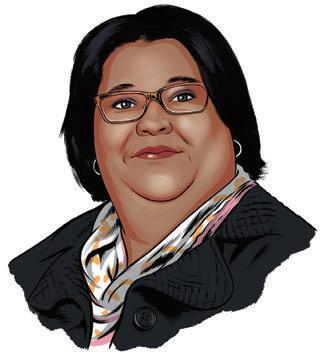
Young Americans, Liang said, have been socialized to tie their happiness to external validation, which research shows leads to heightened depression, anxiety, and direc tionlessness. The key, she said, is to find bal ance between pursuing ambitions and seek ing happiness. To that end, How to Navigate Life includes advice for mentors on guiding young people toward their most fulfilled selves. It also explains how to apply “The Five Purpose Principles” to high school, the work place, and beyond. “How do you identify what your purpose is, and how do you best go and pursue that?” she said. “That’s the how-to piece of purpose.”
Elizabeth Clemente
BRIEFLY
Called by Marlena Fiol and Ed O’Connor ’65
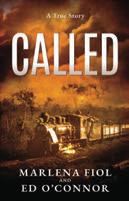
The authors document the work of Dr. John and Clara Schmidt, Kansas Mennonites who relocated to South America in 1950 to open a leprosy clinic. Fiol and O’Connor drew from diary entries, letters, and interviews to tell the story, which spans six decades and chronicles the couple’s dedication to their patients, even as they faced stigma and detractors.
Design by Theresa Burns ’81
In a poetry collection partly inspired by the Robert Frost poem of the same name, Burns explores themes of intention, faith, and fate in all facets of life. The anthology has already received acclaim—an early, unpublished version was named a finalist for both the Barry Spacks Poetry Prize from Gunpowder Press and the Homebound Publications Poetry Prize.

The Psychopomps by Sean Patrick Byrne ’00
“Janzen raced southbound into the city faster than anyone, and with each increasing number on his speedometer, he reached closer to freedom,” reads the opening paragraph of Byrne’s intense debut novel. The psychological thriller follows Janzen, a suicidal twenty-nine-year-old who is held captive after attempting to jump from a supposedly abandoned building in his native Baltimore.
12 to 22 by Jen Calonita ’96

In a decidedly Gen-Z twist on the “overnight age-up” trope (seen in movies like Big or 13 Going on 30), Calonita’s latest young adult novel finds twelve-year-old Harper spontaneously transformed into her twenty-two-year-old self thanks to a magical TikTok filter.
WHAT I’M READING
Homegoing by Yaa Gyasi
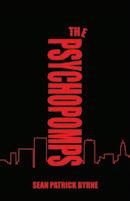
Yaa Gyasi’s fascinating novel follows the lives of two half-sisters from Ghana. One of them, the overindulged child of a prosperous father, is kid napped by invaders from another village, sold to the British, and transported to America as a slave. The other marries an Englishman and lives comfort ably in a castle on the Cape Coast. Through multi ple points of view across several generations in one family, the book sheds light on the difficult legacy of slavery, both in West Africa and in the U.S.
—Lillie R. Albert, professor of mathematics and technology education at the Lynch School of Education and Human Development
Kimmel
illustration: Joel
—Elizabeth Clemente
fall 2022 v bcm 17

history ’ s first draft

the incredible success of letters from an american has made heather cox richardson one of the country ’ s leading public intellectuals . we sat down with the boston college history professor to discuss her smash newsletter , what the past can tell us about the current state of the nation , and how it felt to interview the president of the united states .
b y john wolfson
p hotographs by kelly davidson
fall 2022 v bcm 19
Three years ago , heather cox richardson was in the middle of the kind of sparkling career that any aca demic would admire. The BC history professor had written a number of highly regarded books, was a regular contributor to respected publications such as the Washington Post, had cohosted an NPR podcast, and had amassed twenty thousand or so followers on Facebook who looked forward to her weekly essays about history, current events, and life itself. Then, in 2019, something happened in Washington that would change the trajectory of Richardson’s career. The chair of the House Intelligence Committee sent a letter to the acting director of national intelligence demanding that, in accordance with the law, a whistleblower complaint be turned over to the committee. To Richardson, the letter marked the first time that a lawmaker had accused a member of the Trump administration of breaking the law. Recognizing the historical significance of the moment, Richardson dedicated one of her Facebook essays to it. Rather than assume her readers were already experts, however, she used her conversational writing style to provide context and help her audience understand the nuances of the issue. The response was astounding. So Richardson wrote again two days later. “The floodgates just opened,” she recalled. “And I’ve written every night since then.”
Those early essays formed the beginnings of Letters from an American, Richardson’s daily musings about the state of the nation. She continues to post her 1,200-word essays for free on Facebook, but hundreds of thousands of people also pay for subscriptions to them on the hit newsletter platform Substack, on which Richardson is one of the most successful authors. Her posts generate tens of thousands of comments. She was named one of USA Today’s 2022 women of the year. And she was invited in February to travel to the White House to interview President Biden.
We sat down with Richardson to discuss her sudden—and quite unex pected—rise to media stardom, the state of the country, and how the job of historians will change in the future.

How did Letters from an American get its start?
I had a Facebook page of about twenty-two thousand people in 2019, and I posted an essay on it about once a week— sometimes about history, sometimes about life, whatever, just because I like to write. And I had not written in 2019 since July 18 and my readers were starting to be nervous about me because I had been listed on a professor “watch list,” and people like me get hate mail. So I started to get emails from people saying, “Are you okay? Has something happened?” But actually, I was just really busy and didn’t have time to sit down and write an essay. One of the things I was doing was moving to a new place. So I was painting my house before I moved, and I got stung by a yellow jacket. Now, I’m allergic to yellow jackets, and I did not have my EpiPen. I was supposed to come back to Boston but I didn’t dare get in a car until I knew that I was not going to have a bad reaction to that sting. So I thought I might as well write. So this again was 2019, just after Representative Adam Schiff, who is the chair of the House Intelligence Committee, had written a scathing letter to the acting direc tor of National Intelligence saying, We know there’s been a whistleblower who has said something. And by law you must give us that complaint, and you have not done so. So we have to assume that there’s somebody big that’s referred to in this whistleblower’s complaint and you’ve got to hand it over. This was the first time in all the years of the Trump administra tion that a member of the legislative branch had explicitly accused a member of the executive branch of breaking a law. And so I thought, well, I might as well write about where we are in American history right now. So I wrote up this quick thing for Facebook saying, “This is what’s happened, there’s been this whistleblower complaint.”
What kind of a reaction did you get to that essay? It was very different than in the past. All of a sudden, the transoms opened and people were writing in, asking all kinds of questions: Who is the DNI? Who is Adam Schiff? What is going on? That post was on September 15. I wrote again on September 17. Again, the floodgates just opened. And I’ve written every night since then. What I’m doing is responding to people’s questions about this country. And I think the magic of it is not me. It’s that I’m a teacher, and a translator for people asking questions. And a lot of what I do is simply say, “Okay, here’s what the Department of Justice is, and here’s what a congressional committee is, and here’s the difference. And here are the powers that they have. And here’s what they’re trying to do.” All those things that many people pretend they know and they don’t actually know. And that’s always been the key to my professional career, saying, “Wait, I don’t understand that. What are you talking about? Let’s figure out what exactly you mean.”
Your Facebook audience has exploded since then. It’s about 1.5 million now, and it happened really quickly. I remember reaching out to my Dean within three weeks or so—because I was already touching on some really hot topics—and saying, “Just so you know, something really big is happening over here. And I don’t want to embarrass the university.” And I will say that the administration has always been extraordinarily supportive of me.
How do you choose your essay topics?
I’m not deliberately trying to push any arguments with my essays other than for multiracial democracy and liberal democracy. Beyond that, I am not pushing an argument except to the degree that I want people to understand the facts. I firmly believe in the Enlightenment concept that if people have true facts in front of them, they will make good decisions. They will not necessarily be the decisions that I would make, but they’re the decisions that make sense for them. And that’s how a pluralistic democracy works. So that’s my political point of view. But that means that as a person trained to be a teacher, I try to include voices that I don’t agree with but that are well grounded in facts, ones that simply present a different perspective. In terms of the topics I write about, I look at this in many ways as a chronicle of America for the graduate student in 150 years.
fall 2022 v bcm 21
BC Professor Heather Cox Richardson with President Biden at the White House. It took a while for Richardson, a historian who often writes about past presidents, to get used to interviewing one who could actually answer her questions.
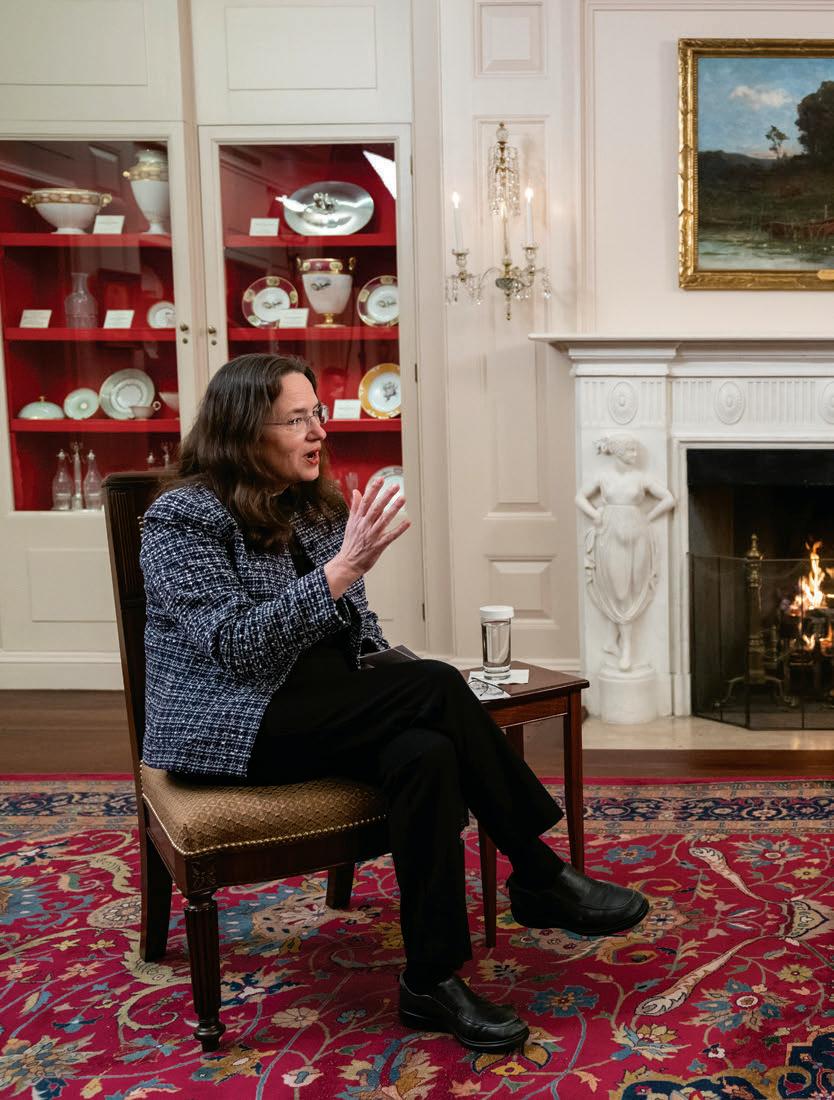
So, which are the stories that are going to matter then? I try and look from that perspective and say, “This is important, and many of these other things are not.” And my historical training is very use ful for that because, for example, I could look at the first speech that Antony Blinken gave when he became secretary of state in the Biden administration—which was not well covered in the media— and say, “Whoa, boy, this is a major shift in American foreign policy. This is the speech that’s going to be in textbooks and is going to be in monographs in 150 years.” Meanwhile, some other stuff in the news today really is going to be in the background in the future. So that’s how I choose my stories and how I figure out what’s going to be important.
How did you come up with the name Letters from an American?
There is a very famous document in American history called Letters from an American Farmer. It’s by J. Hector St. John de Crèvecœur, and it’s very famous for the line, “What is this American, this new man?” And so it is partly saying, “what is America?”
And I’m trying to explain what America is and keep a record of what America is. But there’s also a twentieth-century ref erence and that is Alistair Cooke’s Letter from America. And those were absolutely brilliant short snapshots, once a week, that really took off in the 1940s. Alistair Cooke, who was a journalist from England, took a look at America, saying “This is what America looks like today.” And he would cover everything from the 1948 reelection of Harry Truman to a tattoo artist. And it was his way of creating a kaleidoscope of what America looked like. And I thought those two things worked very well. That being said, it sounds like I was sit ting around thinking great thoughts—I was literally running
down the hallway in Stokes Hall with two of my graduate students going, “Oh my God, I got to have a name for this. What am I going to call it?” And we shopped it, the three of us, and this is what we came out with.
Writers are typically encouraged to write for their audience. Your audience is enormous. Do you write for them?
I have a laptop and I sit alone in a room, and I don’t see those oceans of people out there. I write these letters to explain to about six friends the way the world works. My touchstone about what goes in a letter is always, would I send this to the six friends? Because the minute I start thinking about the people who are actually reading that
22 bcm v fall 2022
letter, or the people that I would like to impress, or the people that I think are really cool, or the people I don’t like, I find I get paralyzed. So I sit there and I say, “Would I say this?” And one of the people is my college room mate. “Would I say this to my college roommate?” And if I would, then it goes in. And if I wouldn’t, then I figure I’m not writing authentically any longer.
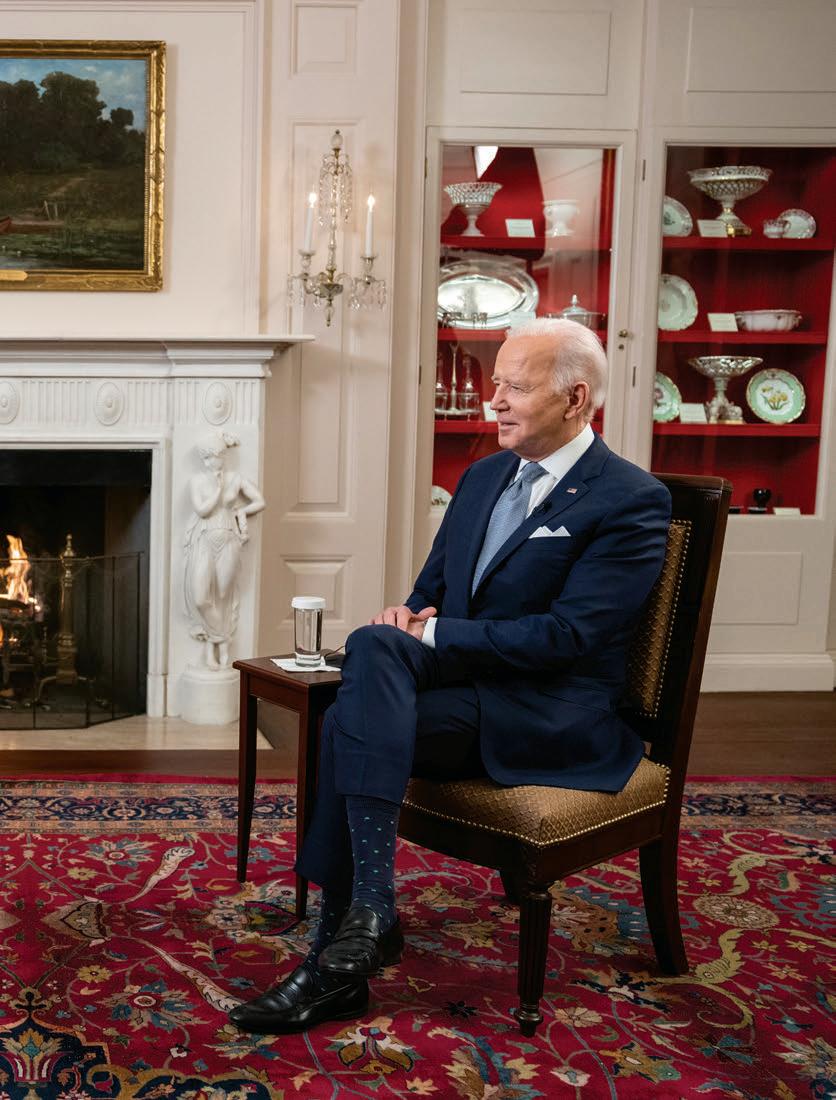
You have an especially large audience among women, people of color, and other groups that have traditionally been marginalized in our country. What makes your work so appealing to these readers?
Well, I don’t know. I’ve never actually done a survey or anything like that, but I think that there are two pieces that
matter. One is where my writ ing appears. Everything I write is available for free on Facebook, which is where the audience is. That’s where people are. Love or hate Facebook, there are billions of people on Facebook. So it’s very easy to get. It’s very acces sible. I also think it doesn’t hurt that I’m not afraid to say I don’t understand something. And my great example of this was when Tom Cotton, a senator from Arkansas, wrote a letter dur ing the Obama administration to Iran. The letter was signed by a whole bunch of senators. Afterward, there were a number of news articles that said, Well, he’s violated the Logan Act. And I was like, I have taught American history for thirty years, and I don’t know what the Logan Act is. Why are you all pretending that we know what the Logan Act is? So, literally, I went to Wikipedia. I’m like, Oh, that’s the Logan Act. It was a very simple law from the Quasi War with France in which a regular citizen had gone to try and cut a deal with France, to undercut the administration. And the Congress passed a law in 1799 saying you can’t do that. Okay. So that’s an explanation that journalists could include in a sentence. The fact that they didn’t made me feel really stupid, like, “Well, everybody else knows the Logan Act.” So part of what I do is always remind people. I even identify the president of the United States every night. That’s saying, You don’t have to remember this. I know that you have worked a ten-hour day and your car’s breaking down and the laundry’s dirty and you’re exhausted. You don’t have to remember who Adam Schiff is. I’m going to tell you who Adam Schiff is. And I think that helps this whole world be more accessible to people who otherwise feel like it’s a language that they don’t speak.
photo: Adam Schultz fall 2022 v bcm 23
From the weakening of democratic norms to the pandemic to the insurrection, these are terrifying times, and it often feels like all of this is unprec edented. One thing that your readers learn is that we’ve often been here before. What is history’s role in informing modern public debate?
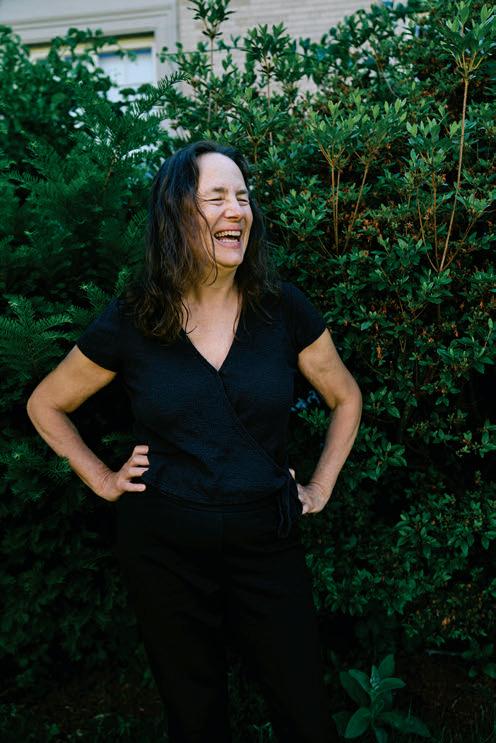
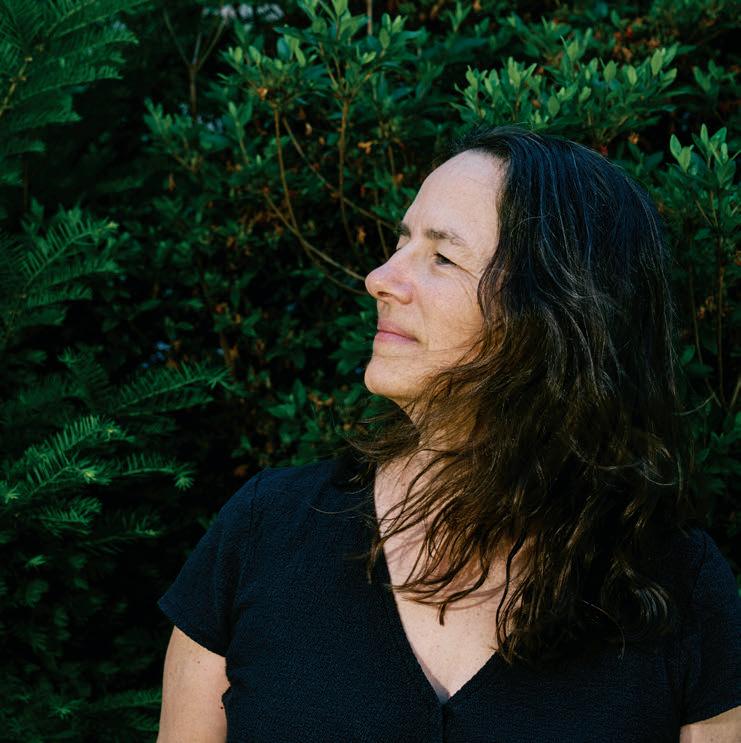
We have been here before in many ways. We are currently in a brand-new moment in which we have a major political party that has rejected democracy. That is alarming and it is not completely unprecedented because, of course, this was the position of the Democratic party in the late 1850s. But in that case, those lawmakers and leaders left our gov ernment and tried to start their own. In this case, we have those same people remaining in the government, and this is new and dangerous. But I think that history’s primary role in this moment is providing the melody, perhaps, that we all sing: The reality that as Americans—and I mean this not only for native-born Americans but for the people who came to these shores a minute and a half ago—we share the same values, which have been embodied in particular documents, in particular people, and in particular events. It helps us to recognize that we have a shared reality, a

“ i firmly believe in the enlightenment concept that if people have true facts in front of them , they will make good decisions . they will not necessarily be the decisions i would make , but that ’ s how a pluralistic democracy works .”
24 bcm v fall 2022
shared set of aspirations, and a shared devotion to the common good. And I think of it like listening to a concert of somebody like James Taylor, where everybody in the audience knows the words to “Fire and Rain.” And part of you says, “why do they want to hear this song again?” And the answer is not because it’s breaking new musi cal ground for the audience, but because it reminds them that they are all in this ship together. And that, I think, is something that our shared history brings to this incredibly fraught moment.
Will the rise of social media and the spread of dis information complicate or change the nature of the work that historians will be doing a hundred years from now?
How will this affect history, and the way we do history? I think that’s a really interesting question because of course the real issue for archivists is curation. Whose voice gets to stay in the archives? Who gets to be there? And the prolif eration of so many different forms of media and of speech means that we’re going to lose most of it. How many of your emails do you have from the late 1990s? I have none.
I don’t have an archive. If it had all been on paper, I would, at this point in my life, have an archive. I don’t have one. That stuff’s going to get lost. And the question right now for archivists is, what do we keep? Why do we keep it? And what will that say about who America is at the end of the day? A lot of the reason we don’t understand that we have this whitewashed version of the past is because the only people who ended up in the archives were the white guys. And we did not, in fact, have a past that was uncontested at all. For example, if you were a follower of Joe McCarthy from Wisconsin in the 1950s, you were a fervent antiCommunist who was willing to hang people that you con sidered your enemies. And if you think about the 1930s, we literally had Nazis here in Boston. And those are stories that perhaps are less known, but it’s not like the past has not been contested. But at the same time, the modern explosion of media and of information offers the oppor tunity to include more voices in our archives, which will change the way we think about this history. When we talk about the construction of the idea of America, one of the things that has jumped out to me in the book I’m writ ing right now is that the people who have most clearly
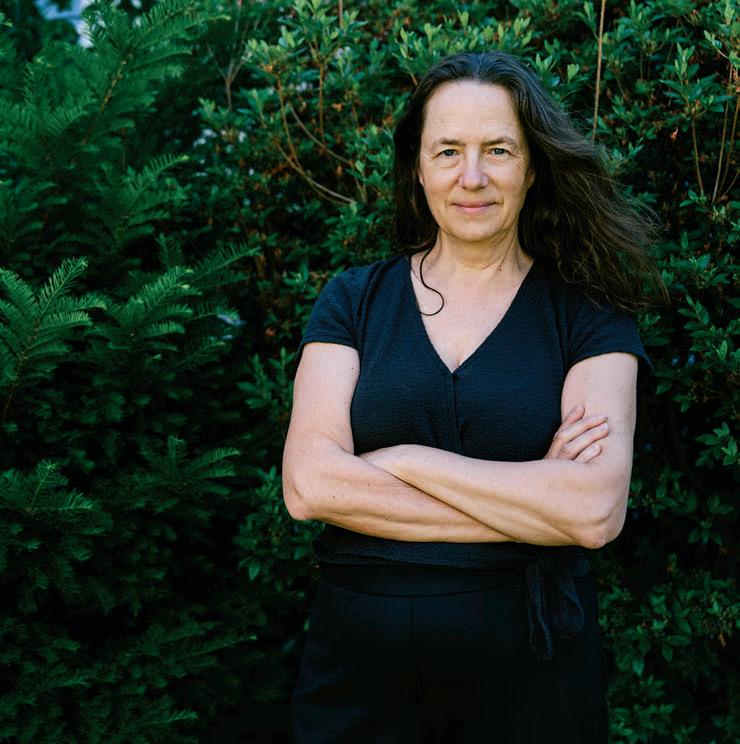
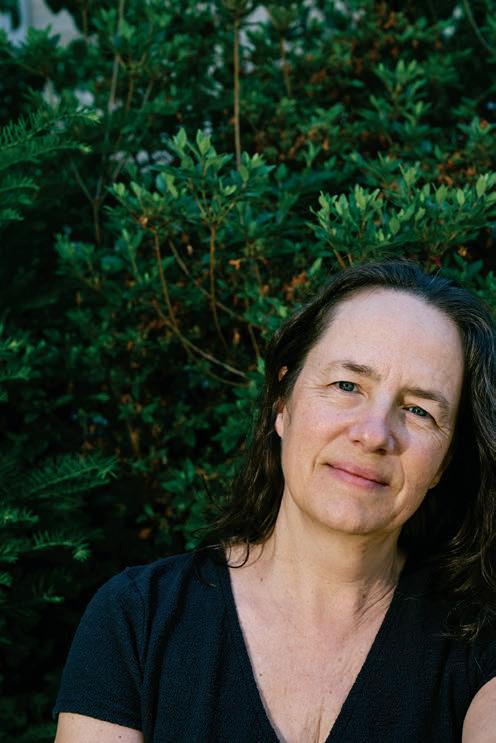
fall 2022 v bcm 25
articulated what America means are people of color, are immigrants, and to some degree are women. And that, I think, is a really interesting reconstruction of what America means. Thomas Jefferson, Lincoln, FDR, these are the people who sit in our stone pantheons. And yet, if you think about the people who made the dream of America come alive, it’s Fannie Lou Hamer, a former sharecropper who was beaten almost to death for register ing people to vote. It’s the Chinese American who was asked not long after the passage of the Chinese Exclusion Act in 1882 to donate money for the Statue of Liberty and responded, “I’m offended that you would ask me to give money for a statue dedicated to Liberty just after you’ve passed a law that says I am not welcome in this country.”
It’s Frederick Douglass asking what—to an African American—is the Fourth of July? And that strikes me as being per haps an obvious thing that I should have seen long ago. In terms of the way that we remember our history, maybe it’s time to recognize that the people who are keeping America alive are its mar ginalized peoples and its newcomers who recognize our dream in a way that those of us who have come to be some what blasé about it no longer do.
Do you see any way out of the disin formation swamp we seem to find ourselves in?
That hits on what is in many ways the most interesting part of where we are for somebody who studies ideas. I think about disinformation in two ways. First, I look at it as an attack on our society, no different than a physical attack. And

I think it has been quite deliberate to try and destabilize America. The efforts of people like Russian President Vladimir Putin to seed America with divisive con cepts that tear us apart have been clearly established. So first of all, it’s an attack. But second of all, there’s a larger prob lem. And not just the foreign influences in America. There is the problem of the algorithms that enable people essentially to package social media users, to sell them. That’s been part of advertising since the beginnings of radio—people make the mistake of thinking that we are buying products, when in fact we are the product that advertisers buy—so
that’s not exactly new. But what’s new are the algorithms that permit social media to privilege certain speech. And I see social media as we are currently using it, if you will, as a wild west. Every time we get a new technology, there aren’t rules around it, people misuse it. It’s got enormous potential to do good. It’s got enormous potential to do evil. Invariably, a lot of people jump in and do the evil with it. The society looks at this and says, “We can’t have this happen,” and they start to regulate it. And I expect that this is the direction we’re going now in America. The First Amendment means the government can’t say, “Hey, you’re not allowed to lie.” But what it can do is say, “you are not allowed to put warping algorithms on advertising,” for example, or on who sees what posts on Facebook.
26 bcm v fall 2022
What’s the problem with these algorithms?
We know that Facebook privileged posts that created high emotion, especially anger. You were much more likely to see those posts than you were to see posts that created, for example, good feelings or no feelings at all. If you think about Facebook as a public sphere, that’s quite different than just seeing whatever comes along. Instead, you were literally being fed things that make you angry and that continue to lead you down a rabbit hole. And it’s not just Facebook that did this, of course. There are algorithms on YouTube. There are algorithms on TikTok. There are all sorts of ways in which people are steered into certain political directions. And I really think that’s pushing a lot of our polarization. I continue to believe that we are in an artificially polarized moment because of the way we have been steered into one way of looking at the world or another.
You’re someone who has studied and written about a number of long-deceased American presidents. And then, very recently, you had a chance to interview a living president, Joe Biden, and you got to do it in the seat of American power, the White House. It was really interesting because my White House is a historical White House. It’s a building full of memories and ghosts and paintings and statues and rooms and the Rose Garden. And I’d never been there before, and all of that is what I saw. And yet the White House is also, in the modern world, an office building. It’s full of people doing
their jobs, and literally being like, “Hey George, do you have that envelope?” And those two things are overlapped when you’re there. I’m walking through history, I’m in an office building, and in some very small way, I’m making history because I’m interviewing a president. And that was also very odd because I know President Biden very, very well. But he’s on paper. I know his speeches. I know his videos. He is a historical figure to me. No different in many ways than FDR or Lincoln or Harding or any of those people who exist for me on paper and on screens. But he’s alive. He walked into the room and he talked to me and I got to ask him questions. And there was this moment of feeling like he wasn’t supposed to be threedimensional and he wasn’t supposed to be able to answer my questions. And if he was going to answer my ques tions, I wanted him to give me the answers I wanted to hear . . . but he didn’t. And I’m like, Wait a minute, you’re not allowed to do that. You’re a historical figure. I get to do research and I get to figure out what the answer is. And then I get to write it. You’re not allowed to have your own opinions about your life
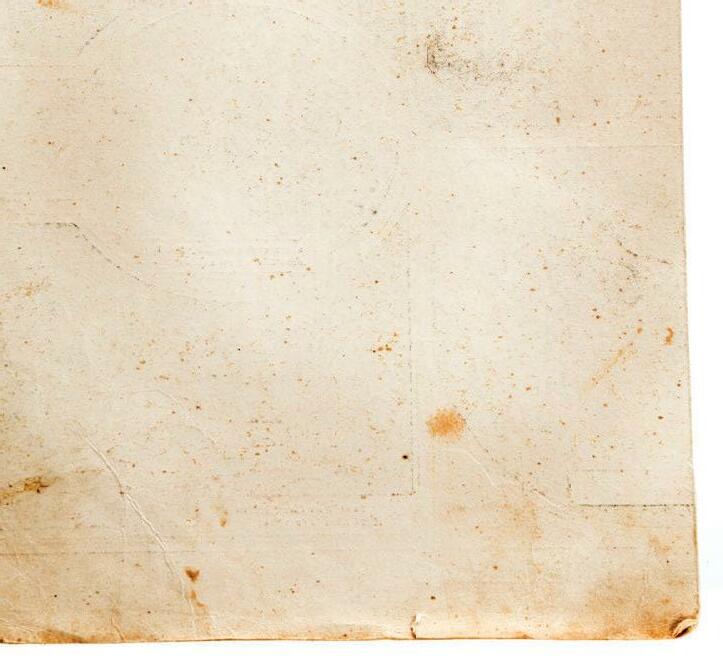
That interview seemed to take your acclaim to a new level. What’s it like to be a media star now? [Laughs] When you put it that way, sure. But you don’t walk down the street thinking I’m going to interview the president of the United States. I am still absolutely the same person that was here five years ago or ten years ago. Sometimes I joke that I still feel like I’m twelve. I think we are who we are. And I’m a writer, I’m a teacher, and that’s what I do. I write and teach. I just have bigger audiences than I used to ten years ago.
What comes next for you?
I’m making no plans at all. Everyone says to me, how long will you do the letters? And my answer to that is, they began absolutely organically and they will stop organi cally. We’ll know when it’s time for them to stop. People aren’t going to need them forever and then it will be time to do something else. I think that my life will depend a lot on what happens with the country. And right now, I feel incredibly fortunate to be part of this supportive, interest ing, creative community that cares so deeply about this country. It is a wonderful community that is gathering. I also feel like I have been given the golden ring in that, for a historian, there is literally no better position in our entire history than to be the person who gets to keep the record of this era. And the fact that I fell into this—if you had told me three years ago that I was going to have this opportunity, I would be like, “Nah, never me.” But I happen to be in the right place at the right time. And that for somebody like me is an unfathomable gift. n
“ the minute i start thinking about my readers , or the people that i would like to impress , or the people that i think are really cool , or the people i don ’ t like … i find i get paralyzed .”
fall 2022 v bcm 27
Breathtaking
gunnar esiason ’ s odyssey through cystic fibrosis and the american health care system
 By Chris Sweeney
Illustrations by Stephanie Dalton Cowan
By Chris Sweeney
Illustrations by Stephanie Dalton Cowan
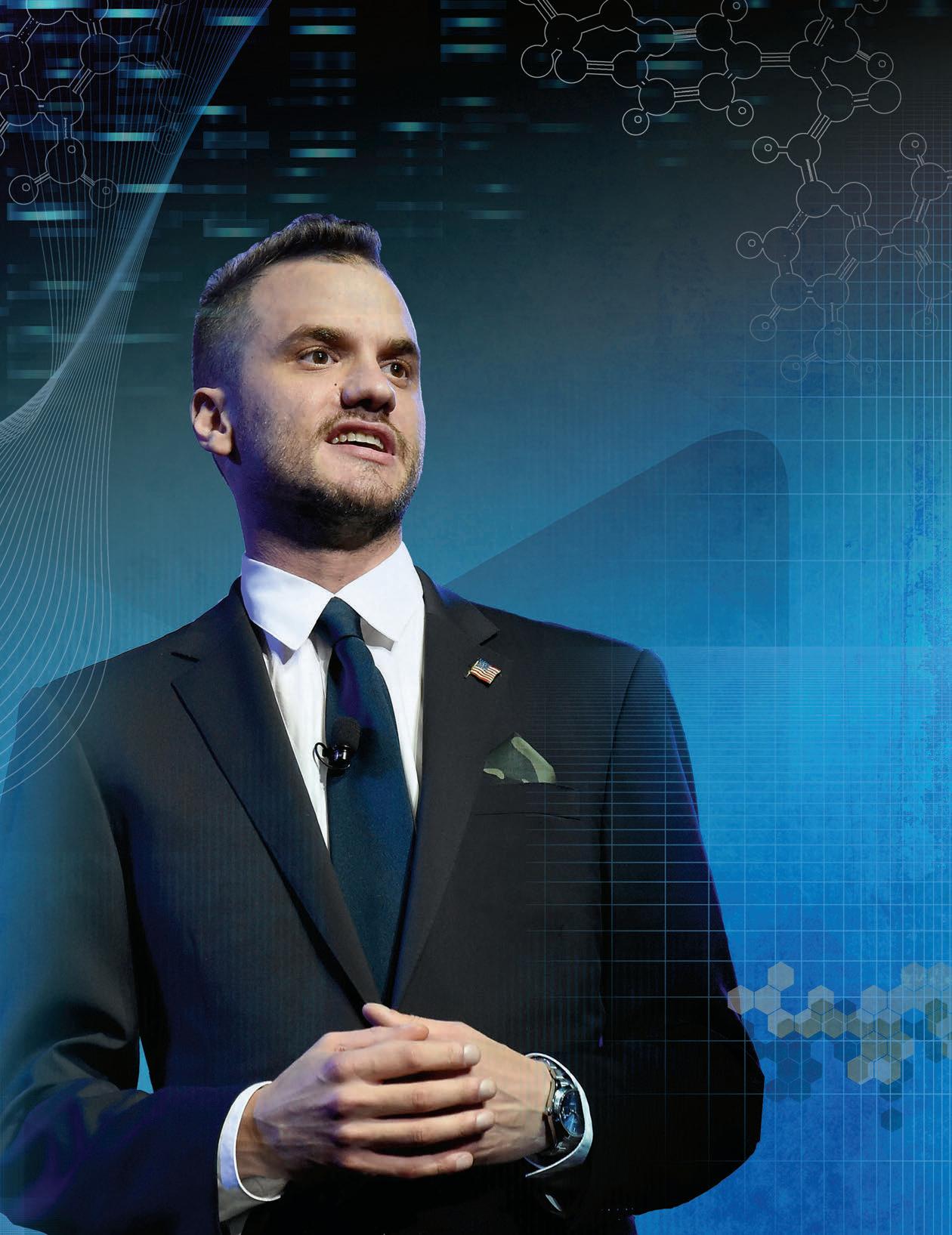
I
t was late afternoon on a Wednesday in May when the crowd started gathering in a basement-level conference room of the Capitol Building. Most of Washington, D.C.’s powerbrokers were focused on the results of the previous day’s smattering of primaries, and the gun-control debate following the recent mass shooting in Buffalo. The conference room, however, was a partisan-free zone, something of a rarity in D.C. these days. Patients, doctors, scientists, and health policy wonks had gathered to watch a preview of the documentary Salt in My Soul, which tells the wrenching story of Mallory Smith, who spent her life fighting cystic fibrosis, the rare, often fatal disease that causes individuals to produce copious amounts of mucus that’s as sticky as rubber cement and that clogs up their airways and organs. Smith, an author who fastidiously documented her life with the disease, managed to receive a potentially life-changing lung transplant in 2017, only to die weeks later at age twenty-five of a bacterial infection that was resistant to treatment with antibiotics, a common fate among cystic fibrosis patients.
Among those milling about ahead of the screening was Gunnar Esiason ’13, who sported a light gray suit and crisp white dress shirt with the top buttons undone. At six-foottwo and 165 pounds, even slim-fit shirts tend to hang off Esiason’s lanky frame. Esiason, the thirty-one-year-old son of the star former NFL quarterback Boomer Esiason, is witty, fit, and a new father himself. The fact that he is alive at all is sort of a miracle. Esiason was born with CF, as cystic fibrosis is colloquially known, and has spent his life in and out of hospitals and specialists’ offices. But thanks to some recent scientific breakthroughs and the wonders of modern pharmaceuticals, you’d barely know it. “The fortu nate story for me, and why I’m still here,” he told the crowd in the conference room when the event got underway, “is that I got into a clinical trial for a drug that ended up alter ing the course of cystic fibrosis.”
Not long ago, CF was a virtual death sentence. But over
the past decade, the drug company Vertex Pharmaceuticals has brought a handful of medications to market that have turned the disease into a manageable ailment for many—but not all—CF patients. Having slogged through the labyrin thine trenches of American health care, Esiason has emerged as a prominent advocate who wants to change the way com panies, health systems, and legislators engage with patients. He’s pushing to make clinical trials more accessible, and for policies that could improve access to lifesaving drugs. His appearance tonight, in fact, was to lend support to a biparti san bill, known as the PASTEUR Act, that would allow the federal government to provide financial incentives to compa nies that successfully develop new antibiotics.
It’s a piece of legislation that Esiason’s life—and those of tens of thousands of other patients across the country— may depend on. Esiason has largely gained control of his CF thanks to currently available drugs. But people with
30 bcm v fall 2022
CF are exceptionally prone to bacterial infections, which require antibiotic treatments. Antibiotics are imperfect medicines, however, and each round of them can leave behind some bacteria that evolve ways to evade future courses of that particular treatment. These antibioticresistant bacteria are often called “superbugs,” and they are a medical nightmare.
Esiason knows this as well as anyone. When he was a young kid, a bacterium named Pseudomonas aeruginosa burrowed into his lungs and has never really gone away. He has suffered through dozens of flare-ups, and consumed dozens of rounds of antibiotics to tamp them down. The result of this biological game of whack-a-mole is that Esiason is nearly out of antibiotics that will work for him. It’s been nearly forty years since scientists have developed a new class of antibiotics, and many pharmaceutical com panies have pulled out of the field because the drugs, which are typically only administered for a week or two, aren’t very profitable.
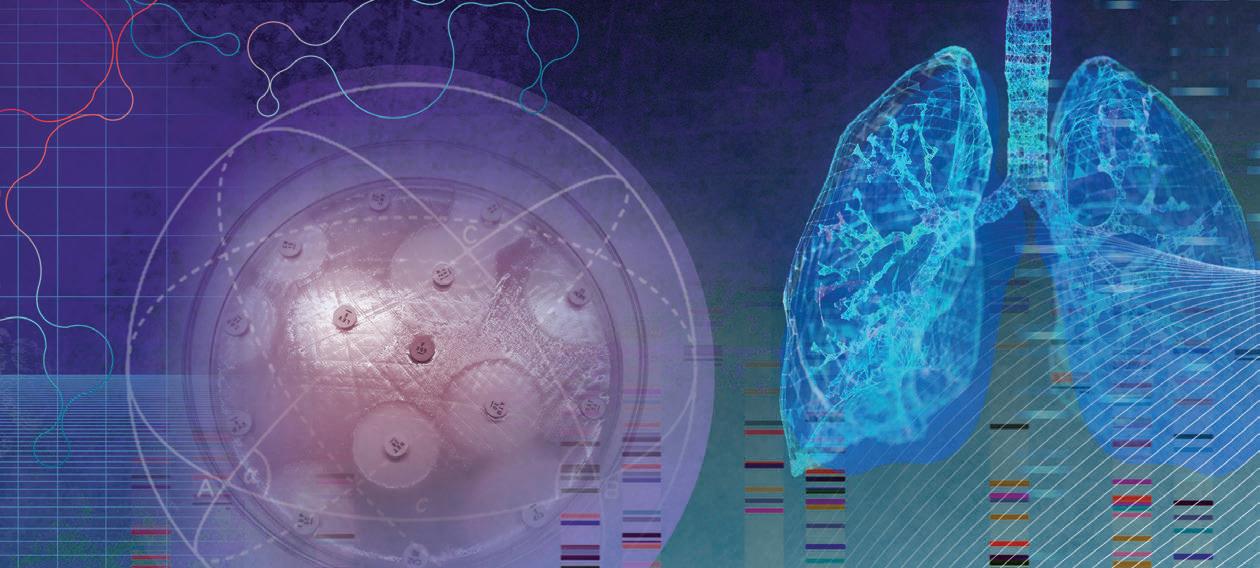
“The greatest curse of CF is that you know what’s com ing,” Esiason told the room. “There comes a time when, ultimately, the antibiotics we take for years dwindle.”
advocacy movement emerged. Groups like ACT UP took to the streets, protesting at pharmaceutical companies and government agencies, and they paid close attention to the science in hopes of influencing drug development.
“That really transformed the landscape because it showed that patients can mobilize resources and control the research agenda,” Sharp said. “They realized early on that unless they spoke up, unless they proactively sought to shape the priorities of medicine and science, they were going to continue to be treated as subjects and not partners.”
Esiason belongs to the first generation of patient advocates to have come of age in the era of social media. His campaign to raise awareness of CF has earned him more than thirty thousand followers across Twitter and Facebook, and a guest list of senators, governors, and bestselling authors for the podcast he hosts. “What I love about Gunnar is that he’s not just a patient—he is someone who has deeply studied the issues,” said the Boston University law Professor Kevin Outterson, who joined Esiason on the panel in D.C. and who leads a nonprofit called CARB-X that supports antibacterial research.
Patients haven’t always had their voices heard, especially in the top-down medical power structure that emerged in the late nine teenth century, Richard Sharp, a bioethicist at the Mayo Clinic, told me. This structure, he said, created the doctor-knows-best dynamic that left many patients feel ing disempowered and alienated from the institutions that were caring for them. It wasn’t until the 1980s, during the early days of the HIV/AIDS epidemic, that a new patient
Sitting in the conference room, I was struck by Esiason’s ability to speak candidly, and often humorously, about everything from health care policy to his own mortal ity. (I work for a firm that invests in small biotechnology companies trying to develop new antibiotics—and, full disclosure, I agree that new policies are needed to address antibiotic resistance, which now kills more people globally than HIV/AIDS or malaria.) If there is a policy that has the potential to impact people with CF, or any rare disease, chances are that Esiason has a sharply informed opinion about it. When the former New York Governor Andrew Cuomo, at the height of the COVID-19 pandemic, gutted
a longstanding program that provided financial assistance to CF patients, Esiason wrote a blistering New York Daily News op-ed, calling the decision “health-care rationing at its cruelest.” (The program was later reinstated.) In USA
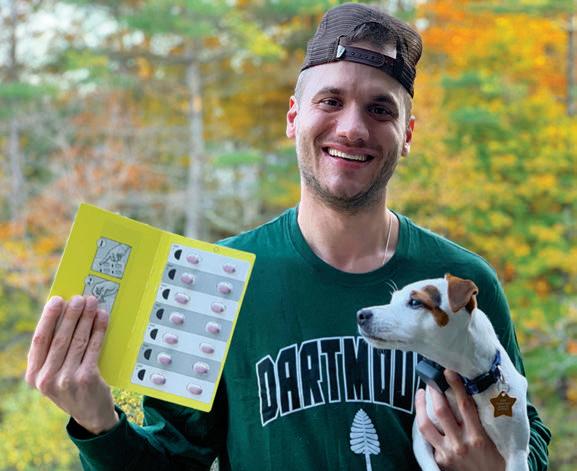
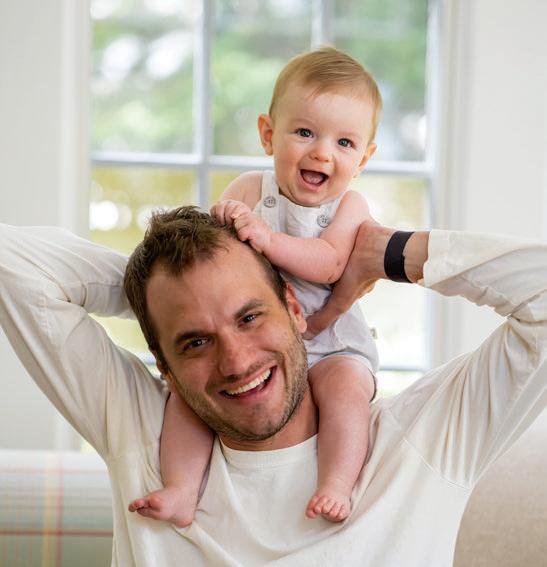
Today, Esiason and Emily Kramer-Golinkoff, a bioethicist who has cystic fibrosis, decried the fact that many states were failing to prioritize access to COVID vaccines for people with the pre-existing condition of CF, while smok ers were being sent to the front of the line. More recently, he torched the financial services firm Morningstar, arguing that its method of rating drug companies disincentivizes them from investing in rare-disease research.

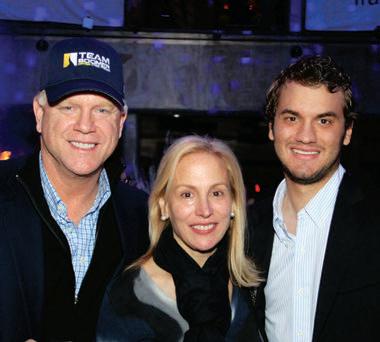
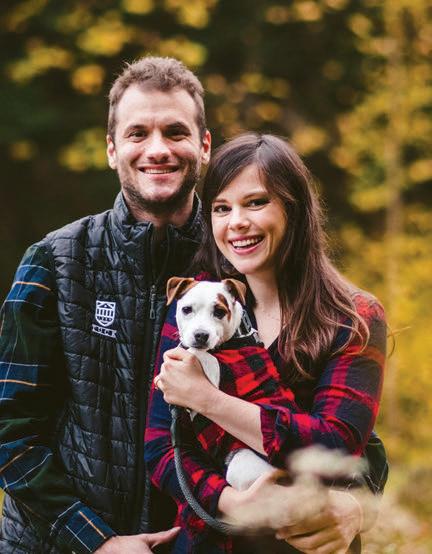
In the conference room, legislative leaders stepped up to the lectern to express their support. Sen. Michael Bennett, a Democrat from Colorado who co-sponsored the PASTEUR Act, said “the market is broken for antibiotics” and warned that antibiotic resistance “could become the leading killer in the world.”
House Minority Leader Kevin McCarthy and the Arizona Republican Congressman David Schweikert shared concerns over drug-resistant fun gal infections, another minefield for CF patients. Attention then shifted back to the panel and Esiason’s urgent desire for new antibiotics. “I want something new on the [phar macy] shelf that my provider can use at a moment’s notice
photos: Courtesy of the Esiason family; Sports Illustrated photo by Michael O’Neill;
clockwise from top left: Gunnar Esiason and his parents Boomer and Cheryl, in 2014; a magazine cover boy in 1993; with wife Darcy and their dog Blink in 2020; smiling with son Kaspar in 2022; posing with the CF drug that would change his life, Trikafta, in 2019.
32 bcm v fall 2022
when they need to,” Esiason said. “I want to go back to the feeling of reassurance that I had when I was twelve, thir teen, fourteen years old.”
A few days after the event, I spoke with Esiason over Zoom and asked him about building bipartisan consensus at a time when there is such a pronounced political divide in the country. “I don’t see myself as being in politics,” he said. “I don’t care if my ally is a Republican or a Democrat. I don’t care about party lines in that sense. It’s really just a matter of who is willing to help us at that moment.” There is a sense of urgency to everything Esiason does. After all, he knows that if there’s one thing people with a rare disease don’t have, it’s time to waste.
asked him to drink a small splash of anti-anxiety medicine. “There was no way in hell anyone was going to get me to drink that medication,” Esiason recalled.
Doctors, nurses, and his parents all tried coaxing him, but Esiason wouldn’t budge. Eventually an anesthesiolo gist who was short on bedside manner entered the room and bluntly said that if the boy wasn’t going to take the medicine, they would have to put him under because the procedure was “really going to hurt.” With those words, Esiason looked straight at his dad, yelled “you lied to me,” and sprinted out of the room and down the hallway. A moment later, the six-foot-five-inch Boomer Esiason, who had been the Bengals quarterback for the past decade and was arguably the most famous person in Cincinnati at the time, bolted upright and took off in a mad dash to catch his son.
Esiason, who was diagnosed with cystic fibrosis at age two, learned early on that sick people can wield enormous power. He had woken up early one morning in the first grade to go with his mom and dad to Cincinnati’s Children’s Hospital. He’d long since grown accustomed to mak ing frequent trips to see the hospital’s specialists. But he sensed something was different on this morning. His parents seemed tense and muted. Then, on the drive to the city, his dad turned around and blurted out “this isn’t gonna hurt.” Alarm bells went off in Esiason’s head and he, too, grew tense.
It was the mid-nineties, a time when the big question for many CF patients was whether they would die in their twenties or in their thirties. Parents and partners were
Boomer finally corralled him at the end of a hall. “But there was a handicap railing on the wall,” he recalled, “and Gunnar had the Vulcan death grip on that thing.” Unable to pry him loose and desperate to quell an awkward scene, Boomer turned to the time-tested parenting technique of bribery and promised his son whatever he wanted if they could just get the procedure over with. It was the first time Esiason’s disease had given him the upper hand at the bargaining table, and he knew exactly what he wanted: a Nintendo 64.
In the years that followed, Boomer and the whole Esiason family became prominent CF activists. They launched the Boomer Esiason Foundation, which has raised more than $160 million to help fund medical research, build support systems, and provide scholarships for those
having slogged through the labyrinthine trenches of American health care, Esiason wants to change the way companies, health systems, and legislators engage with patients.
trained to pound on the bodies of loved ones suffering from the disease to help loosen the mucus slathered in their airways. (This crude but effective approach is still common practice today.) There were medications to help manage the symptoms, but no real treatment existed.
Inside the hospital, Esiason and his family were led to the interventional radiology department, where the sevenyear-old learned that he was going to receive a peripherally inserted central catheter. Doing so required the medical team to snake a tube through one of his deep veins so it could be used as a long-term IV to deliver antibiotics when needed. Knowing that the young boy was nervous, the staff
navigating the disease. Being an NFL quarterback opened a lot of doors for Boomer, but there was nothing easy in those early days about explaining to the world that his son had a little-known disease that was likely to be fatal. “There were a lot of challenges. We had to be open, we had to be public,” Boomer said. “Gunnar had to be able to go on TV and talk about it at a very young age.”
Esiason fared relatively well through his teen years. His family had established a treatment routine from which they rarely deviated, and they could afford the best care. There were bouts of illness, but he was able to beat them back. He pushed himself physically, often against doctors’ advice, so
Alexsandra Wiciel (Gunnar & Darcy); Jaye McLaughlin
(Gunnar &
Kaspar)
fall 2022 v bcm 33
that he could play football and hockey, and he was strong enough academically to earn his way into Boston College. His acceptance letter was a milestone that both overjoyed and terrified the family.
spring and fall semesters while allowing him to take sum mer classes so he could stay on his timeline.
Mostparents who send children off to college fret about things like dirty laundry and raucous parties. Parents of children with cystic fibrosis have to worry about all that, plus much more pressing issues, like what happens if a round of treatment is missed, and where the nearest pharmacies and CF specialists are located.
“College is a transformational moment for people with CF,” Esiason explained. “It’s also historically been a place where we hit the health wall. You’re entering your twenties, which is a time when most people with CF start to struggle with progression issues.” His first few weeks in Chestnut Hill went swimmingly. Rather than hide his illness, Esiason was as transparent as could be. On one of his first nights in Gonzaga Hall, he found himself in a room full of guys crack ing jokes and getting to know one another. Esiason figured it was the perfect time to put on the high-powered vibrat ing vest that many CF patients wear to help break up their mucus, and to use his nebulizer to inhale his nightly treat ment. Some of the guys raised their eyebrows. Others joked about what exactly Esiason was huffing and whether he was going to pass it around. It was an unusual icebreaker, but it set the tone in the way that Esiason had hoped, and several of the guys in that room would become lifelong friends.
At the start of Esiason’s second semester, things took a sharp turn for the worst. He experienced his first pul monary exacerbation, a type of severe lung infection that
The plan came together over the next three years just as he’d hoped in terms of his college experience. In terms of his health, things were more or less a train wreck. A virus during his sophomore year put him in the hospital and badly diminished his lung function. He developed pancre atitis. He dropped to 130 pounds and had to have a perma nent feeding tube stitched into his abdomen. From hospital beds and living room couches, Esiason kept on top of his studies, but the hits kept coming. “My senior year basically was illness after illness,” he said. Graduation went from being a motivational goal to a finish line he was desperate to reach. I gotta get out of here, he’d tell himself. I have to get my health under control.
Esiason crossed the finish line in spring of 2013. But while his buddies were accepting their first jobs or opening acceptance letters to graduate programs, he was trying to figure out how to stay alive.
S
pend a life living with a disease and it affects more than just your health—it can con sume your identity. Patient advocates, especially in the digital era, face a “new domain of dilem mas for personal identity,” explained Aaron Panofsky, asso ciate professor at UCLA’s Institute for Society and Genetics, Public Policy, and Sociology. “Advocacy has opened up a new tension in individuals’ lives,” Panofsky said.
For instance, some people who beat breast cancer will paint their cars pink and put an I Survived Breast Cancer bumper sticker on the car. Others will gravitate toward the mindset of my cancer doesn’t define me
there is a sense of urgency to everything Esiason does After all, he knows that if there’s one thing people with a rare disease don’t have, it’s time to waste.
usually requires hospitalization and prolonged rest. “I was nineteen and trying to figure out whether to take medical leave or a medical withdrawal,” he recalled, “or if I should just go home for a few weeks and try to make up the course work.” The options were limited and Esiason was frus trated. His goal had always been to graduate in four years. After some tough talks with administration and professors, Esiason found an advocate in the dean’s office who mapped out a plan that would reduce his course load during the
The decisions most of us make in the years following college shape our personal and professional identities—we find our partners and chart the course for our careers. Esiason’s health was rocky during this period, but he was sharpening his voice as an advocate while networking with like-minded CF patients. They’d swap stories, share life hacks, and bemoan the logistical hurdles of participating in clinical trials. In his spare time, he’d read books on the ori gins of biotech or the economics of drug development.
34 bcm v fall 2022
“When I was super sick, CF was my identity,” Esiason said. He’d stay up in bed late at night responding in detail to the dozens of emails and social media messages he received from young patients and their parents looking for advice on things like how to manage CF while pursuing school. Responding to those queries and sharing lessons he learned at BC was an “extremely fulfilling” process in an otherwise bleak time, he said. “At that point in my life, when I was twenty-three, twenty-four, twenty-five and very sick, graduating college was my biggest accomplishment, and it felt like it was going to be my only accomplishment.”
Esiason finally caught a break on the morning of April 9, 2018, when he took an experimental medicine to kick off the first day of a Phase III clinical trial of a new drug. As part of the trial, he didn’t know whether he was being given a placebo or the actual drug. But within twelve hours, it was clear that whatever he was given was having an effect. “It was the most remarkable thing I could ever experience,” he recalled. The mucus that had gunked up his airways became thin and watery and poured out. The oxygen levels in his blood climbed to 99 percent, the first time they’d been that high in years. He coughed for three days. Afterward, it felt like someone had flipped a switch and turned off his CF. A few weeks into the study, he played in a recreational hockey game. Before enrolling in the trial, he could skate up and down the ice once before breaking into a coughing fit. Now

he felt like Wayne Gretzky. “I think that’s when it hit my dad that the drug we had been waiting for had finally come through,” Esiason said.
To celebrate this abrupt turn, Esiason and his girlfriend Darcy, who is now his wife, took a road trip. On the way home, they found themselves sitting in traffic on the New Jersey Turnpike. Darcy turned and asked, “well, what do you want to do with the rest of your life?” The question blew his mind. For the first time, Esiason realized that he had the luxury to think long term about the career he wanted, the family he wanted, the iden tity he wanted. He had a life to build, not merely to survive.
Soon after, he enrolled in a joint MBA-master of public health program at Dartmouth University. Having recently graduated, he’s turned his attention to exploring how and when health care companies engage with patients. He believes that patients have a rare understanding of operational inefficiencies in health care and can provide invaluable insights to companies as they develop products or design clini cal trials. “I believe firmly, and I will die on this hill, that if you can involve the right patients with the right qualifications at the earliest stage of company creation, you can create a culture inside that new company that will actually be patient-first,” he said.
Now Esiason has a chance to prove his theory: In September, he accepted a job leading patient-facing strategy at Florence Healthcare, a health-tech company that’s work ing to streamline clinical trials and expand patient access to them. Not long after taking the job, Esiason appeared as a guest speaker at a virtual breakfast hosted by NewYorkBIO, a trade group representing biotech companies, research institutions, and universities. After touting the work of his new employer, he discussed the work of the Boomer Esiason Foundation and launched into his pitch for the PASTEUR Act. “I desperately need new antibiotics,” he said.
The comment was a stark reminder of how vulner able Esiason remains despite everything he has already accomplished. It made me think of something he’d told the crowd in that D.C. conference room. A few years ago, right around Thanksgiving, he’d said, a good friend and fellow CF patient was admitted to the hospital because of an infection. “She had a last-resort antibiotic that she had leaned on for about two years, and it just suddenly stopped working and she was gone within a matter of days,” he said. “I can’t impress upon everyone enough the fear that you hold when you’re on your last antibiotic.” n
Chris Sweeney is a Boston-based writer and editor whose work has appeared in Men’s Journal, Popular Mechanics, and more.
fall 2022 v bcm 35
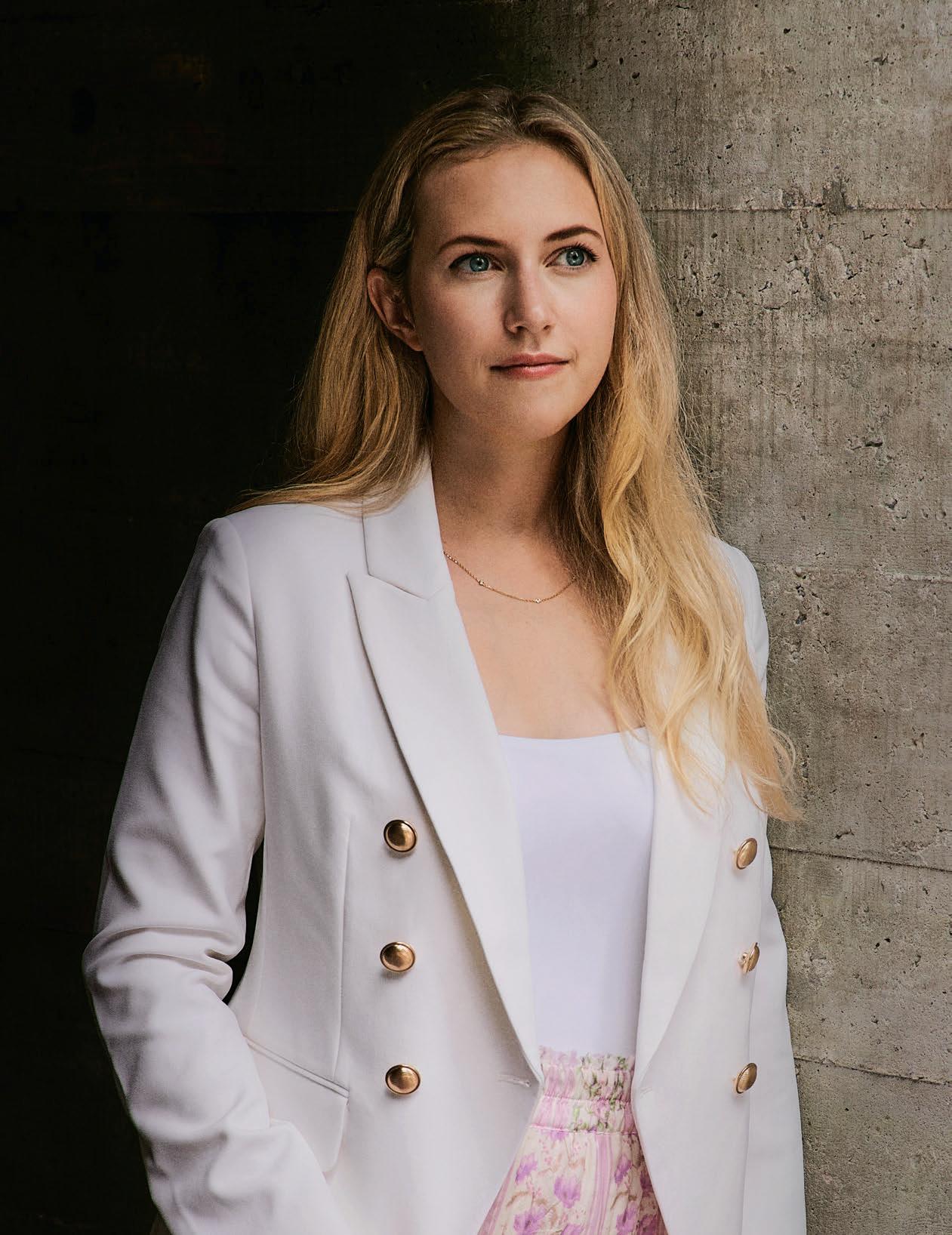
My Sister’s Keeper
In her haunting book ThePerfectOther:AMemoirofMySister ,
Kyleigh Leddy ’19 recounts the fear, anguish, and heartbreak of living with a beloved older sister whose mental health rapidly declined before she tragically disappeared.
BY ELIZABETH CLEMENTE PHOTOGRAPHS BY JAI LENNARD
fall 2022 v bcm 37
“Iknow
there are thousands, millions, billions of stories that my own will never touch. I also know that somewhere out there is a family suffering as ours did, voiceless and afraid,” Kyleigh Leddy ’19 writes in the introduction to The PerfectOther:AMemoirofMySister , which was released earlier this year. The book tells the story of Leddy’s older sister, Kait, who went missing in 2014 after struggling with schizophrenia, and who has never been found. Leddy chronicles her journey through grief—first over
Kait’s psychological decline and the loss of the sister she knew grow ing up in Massachusetts and Pennsylvania, and then over having to accept a tragedy that remains unresolved nearly a decade later.
Leddy begins by taking her readers through the years before she was even born. Kait, she would come to learn, prayed desperately for a little sister, desiring one in the way some children “want a puppy or the newest Barbie Dreamhouse.” Once Leddy came along, she and her sister formed a close bond. But their relationship became strained as Kait’s behavioral
issues began to emerge when she was a young teen, escalating through high school. Later, while Kait was in col lege, an accident left her with a trau matic brain injury and psychological symptoms that were determined to be the result of schizophrenia. Then one night in January 2014, when Kait was twenty-two, she took a taxi to the Benjamin Franklin Bridge in
Philadelphia. Surveillance cameras captured her walking to the bridge’s highest point, but nothing more. Her body has never been located.
The book started out as a compo sition that Leddy wrote during her senior year at BC for a “Modern Love” college essay contest in the New York Times. Leddy won the competition and soon heard from literary agents who believed her story had the makings of a powerful book. She began writing The Perfect Other in November 2019, not long after graduating from BC, and finished the book eight months later. During the nearly two years it took for The Perfect Other to be published, Leddy enrolled at Columbia University, from which she graduated this year with a masters in social work. She plans to one day author a second book about psychology. Her goal is to reduce the stigma around mental health. “I’m not grand enough to think that my book’s going to drasti cally change anything right away,” she said. “But I just hope people feel less alone.”
Following is an excerpt taken from The Perfect Other.

38 bcm v fall 2022
WE MOVED TO THE CITY OF PHILADELPHIA in 2003, when I was enter ing first grade and my sister was going into the seventh grade. Our father was frequently away on busi ness trips, designing and implement ing fiber-optic networks in new coun tries and regions. It was the age of the dot-com bubble, between the late ’90s and early 2000s. People were using the internet with increasing frequency, and the stocks boomed with the flux. The opportunities came fast and didn’t stay long. If you blinked, you could miss it, so—as we’d done a few times before, and would do again later—when my father received a new job offer that he couldn’t resist, he and my mom seized the opportunity, packing us up and leaving Marblehead behind.
Our new home in Philly was a brick townhouse in a residential neighbor hood of the bustling, winding down town Center City. I was six, and I learned to do cartwheels on the rough sidewalks, avoiding the rubbery gray spots of melted gum, first with two arms, then with one. Kait or Mom would spot me, guiding my legs over my head and planting them firmly on the ground.
We attended the same Quaker school that year. I would search for Kait’s face in the crowd. The moment I spotted her, my chest surged with pride. That was my sister, I thought. That tall, beautiful girl, that’s my sister. When she or her friends waved at me, I felt I had done everything in the uni verse right. I liked life in the city, but Kait didn’t. We had moved four or so times before Marblehead, and for Kait, each new school was growing harder to keep up with. I was too young for any change to matter, too innocent for it to make an impression. My life was a tiny universe consisting of my immedi
from top left: Eight-year-old Kyleigh sits atop Kait’s shoulders outside a Cape Cod restaurant; playing dress-up together; having fun on a merry-go-round.
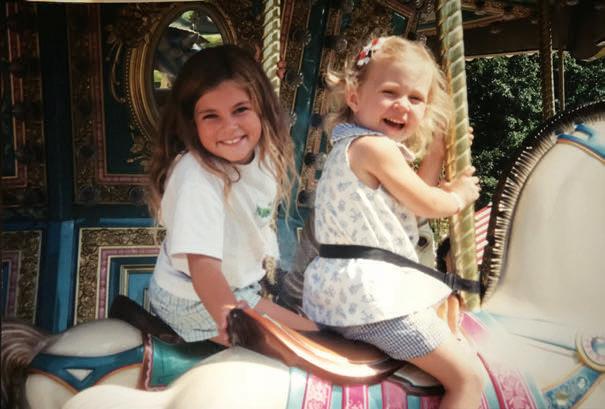
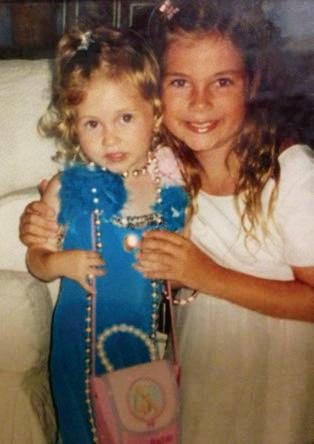
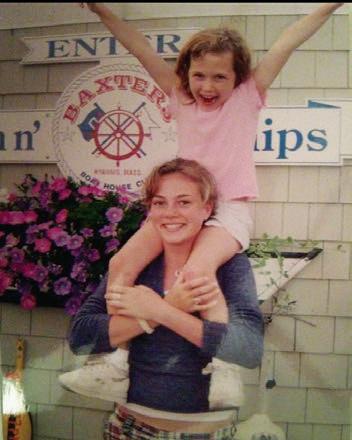
ate family, but Kait was older, more aware. She had to redefine herself in a sea of new faces with each move.
After all, how many times did my sister stand in front of a classroom and introduce herself to a room of strangers? How many times did she size up the students before her, decide who were the bullies and the victims, the mean girls and the boys who stuck pencils up their noses?
How many recesses did she stare at the asphalt and quickly scout out which of her classmates was the easi est to approach? Did it matter? At one school, was she one version of herself, and at the next, another? When the present unfolds like a slap, these are the questions you return to as prayer.
What went wrong? Could we have stopped it?
I wish I could hug a younger version of myself and tell her that any per ceived slight by Kait is unintentional: She was only trying to discover who she is. She was walking the first walk of adulthood with shaky legs, and she couldn’t have her little sister trailing after her wherever she went. I wish I could hug this younger version of Kait and tell her it’s all going to be okay, too. Tell her she’ll figure it out, grow into herself, become the person she’s meant to be, but then, wouldn’t that be a lie?
At thirteen, the cusp of adolescence, something was beginning to transform in my sister; a barely detectable ignition that sparked in the core of her being
photos: Courtesy of Kyleigh Leddy
clockwise
fall 2022 v bcm 39
clockwise from top left: Kait outside of a concert in her early twenties; in a 2010 modeling photo for Bergen County Magazine; posing for a selfie after a photoshoot.

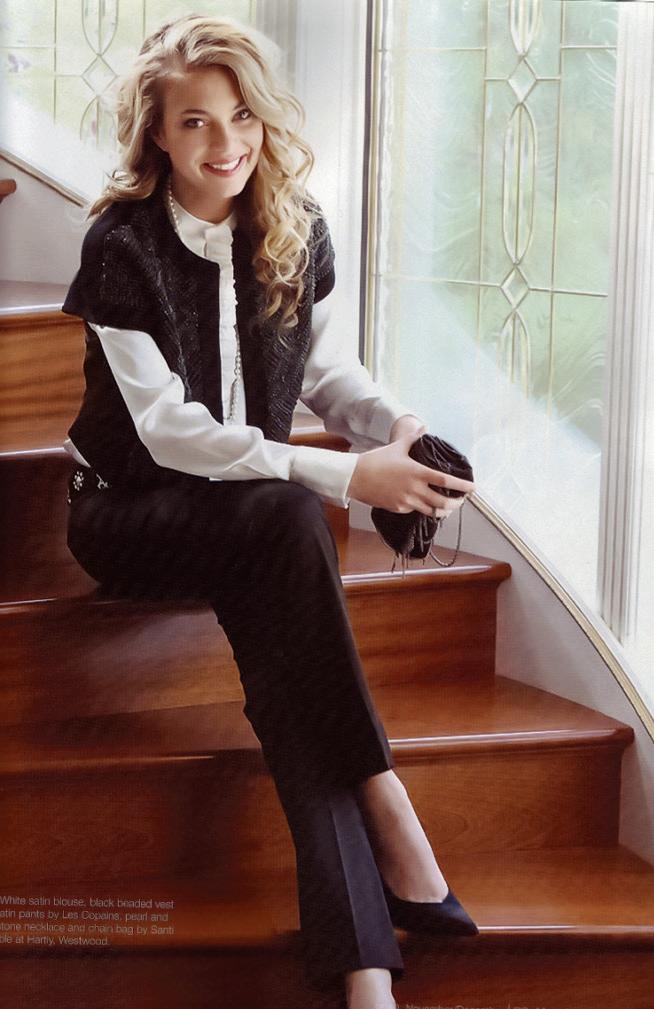
and snaked its way into every aspect of our lives. Even so, my big sister, the one who had so carefully cared for me throughout my childhood, was still there, at least sometimes.
That year, when my sister was thirteen, our mom was called into the principal’s office on more than one occasion to discuss her most recent spectacle. After a few months, we were ultimately asked to leave the school. My parents were already planning to eventually move to the suburbs, so that’s exactly what we did. It’s one of those moments you look upon in retrospect and see as a mile stone in the story, a sudden break, the earth’s crust unsettling from its shelf. But at the time, my parents weren’t sure how seriously to take it. My father didn’t believe in therapy; still, they took my sister to a doctor just in case. The child psychologist evalu ated her under careful scrutiny before proclaiming Kait a healthy and welladjusted preteen. And like that, the question was resolved and we moved on. Any conversation around a diag nosis was dismissed.
On my seventh birthday, blowing out candles on a cake with frosting doled out in thick white waves before me, I made a wish that I would come to repeat every birthday until my sev enteenth. “I wish my dreams come true, my family is healthy, and my sis ter gets better.”
KAIT SUFFERED FROM A TRAUMATIC BRAIN injury and was diagnosed with schizophrenia when I was only twelve years old. The chaos, the violence, the heartache of that time slipped through my developing, ado lescent brain. Here’s what I can recall:
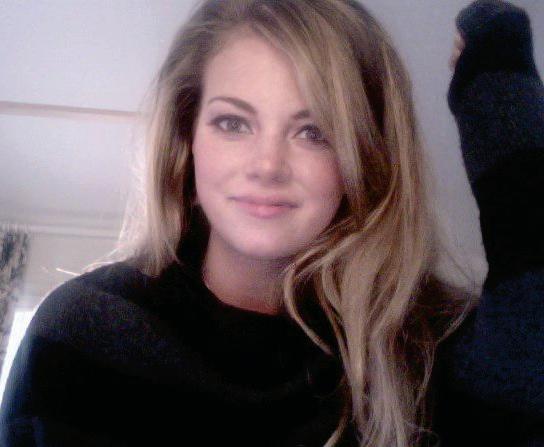
We pack bags. Mom and I shove emergency pajamas and overnight cosmetics—contact lenses for the morning, face wash, toothpaste— into hidden suitcases, tucked behind curtains, readily accessible in a rush. We memorize the closest exits, the quickest way out: Everywhere is a fire drill. When Kait is in between apartments, she stays at our family house and Mom prefers that I sleep in my parents’ room. There’s a balcony there. We could jump into the bushes if we needed to, if it got to that point. There’s comfort in this knowledge. When I sleep alone, I barricade my door with furniture; a chair or the bench at the end of my bed where my old American Girl Dolls are stored. The childhood objects weigh it down.
In psychotic bursts, Kait makes threats. She’ll burn the house down in our sleep, she says. We believe her. She knows where the knives are, and she’ll whip them out. We take to hid ing them. She thinks we’re trying to kill her, keep her captive. We’re out to get her. She’ll get to us first. All we can do is run. My sister hits my father in his sleep with a weight (there’s a photo of the bruise behind his ear, yel low and purple with inflammation).
Kait throws pottery at us—expensive Italian Deruta our mom has been collecting piece by piece for years. There’s a photo of the trail of shat tered pottery leading into our living room. In the background, you can see the teal of my rain boots. I thought Kait would appreciate the bright color,
photos: Courtesy of Kyleigh Leddy
40 bcm v fall 2022
but she was too far gone by that point to ever notice.
When I was younger, twelve, thir teen, even fourteen, my mom would tell me to run into my bedroom and lock the door when Kait entered into a delusional breakdown, and I would listen. I used to grab our two dogs and usher them upstairs with me, lock ing the door behind us and leaning against the wooden frame for good measure. I held their shaking bodies as they sat in my lap. “Shush,” I tried to comfort them while petting their soft fur. “Everything is going to be okay.” Shush, I tried to tell myself, too, every thing is going to be okay.
For a while, this worked. There seemed to be some limit Kait had drawn with me, holding me captive, making physical threats, throwing objects in my direction but never actu ally seriously harming me. Something stopped her every time from follow ing through; some part of the older sister who once shielded me from the world now was shielding me from herself, from the battle being waged inside her brain. But as I grew older, I could no longer bear being away from my family in these moments of crisis. I needed to be there to protect my mom (in reality, there was little I could do to help, but it’s impossible to surrender even the falsest sense of control in these moments). I contin ued to hide the dogs, to keep them away from any danger, but hiding was no longer an option for myself, and the more I challenged my sister, the more in danger I became.
Once she tried to push me off a balcony at a rental beach house we were staying at. Earlier that same day, she comforted me over my pubescent breakouts, letting me borrow some face wash and concealer. Now her hands reach toward me. She wraps her full hand around my wrists, squeezing them tight, holding me there as a prisoner with handcuffs of her own design. I try to fight back,
but it’s useless. As much as I writhe and wiggle, I am trapped, powerless. I have never felt so impossibly small in this world. Mom distracts Kait by call ing attention to herself long enough for me to escape. This is how we sur vive: taking turns in sacrifice, a game of diversion.
We escape in the middle of the night—in the morning, after school, before sports practice, at noon on an otherwise peaceful, quiet Sunday. The chaos has no bounds, no time frame, no workday hours. I grab my back pack, and I complete my homework in hotel rooms, in the public library, in the passenger seat of our car as we wait in a random empty parking lot. We eat a dinner of Chipotle in the front seat, but our stomachs never
rest long enough to enjoy it. Mostly, we go to a small, unexciting hotel chain near our home and I study for my exams by the dingy light of the room’s meager desk.
We called the cops—for what, the fourth? fifth? sixth time that month?—our familial drama spewed onto the front lawn, an open-air show for our quiet neighborhood. There was a restraining order left unfilled on the counter of my kitchen. Our mom was too heartbroken to ever follow through with it, but the appearance of its yellow, punched frame frightens me: so permanent, bureaucratic and official, an intruder in our home.
I devote myself to academics, tak ing as many Honors and AP courses as I can find, forcefully flinging myself into some future I can’t imag ine but hope is there when the smoke clears. I do everything you’re sup posed to do—I laugh on cue, I go to the parties and the dances, the sports practices (lacrosse, tennis, squash, and crew) and the volunteer clubs, and I present myself the picture of ease. When the whole world is upside down, sometimes the sanest place is closest to the ground.
Kait developed multiple personali ties, different versions of herself, and in their presence, I created my own. When the fighting escalates and I hide in my room, the miniature blue and yellow chair from my childhood blocking the door, or stand there and face my sister head-on, I try this coping mechanism: I think of my happiest memories with Kait, as if by concentrating hard enough I can cast the bad away, heal her from the inside out.
I think of us as little girls on the beach, the tide washing up clumps of thick seaweed the color of her eyes, the sand blowing in the breeze, picking up a wayward rope or an ocean-battered twig. I remember how we laughed that day in soft chimes, sharp yelps. Just as we already have
“It’s surprising how misrepresented schizophrenia is in our culture. The condition is either sensationalized for dramatic effect— straitjackets, muzzles, blaringly white walls of psychiatric units—or it is somehow lightened, made a joke out of.”
fall 2022 v bcm 41
everything inside us to hurt, so too do we have everything we need to redeem ourselves. I do my best to focus on the light.
IN THE HOURS OR DAYS WHEN HER TURMOIL settled, Kait would come back to herself. On May 6, 2010, only a few months after her head injury when Kait’s schizophrenic symptoms were skyrocketing, she sent me the following message at 2:16 a.m.
I wish your face was little still so I could squeeze it and tell you that I will be the best sister in the entire world to you! I’m not nice to you I’m not fair to you I have so much happiness that I owe you! It’s all my fault, I never want you to see me again with the capital L on my forehead haha you’re perfect and you’re perfecting everything that I couldn’t!!! . . .
I act like a tough guy and I’m so sorry for being embarrassing . . . I sure hope I get to laugh at myself when I’m a little bit older.
Will you let me know what you want me to do to help you forgive me? I love you more than anything in this world you’re my life. . . .
If you have any questions or are con fused ask me immediately because I’m just remembering who I am . . . and HATING who I’ve turned into! I’m promising this to you so we don’t have anything but the best loving relation ship that we can . . . will you do that with your LOOPY sister? <3<3
She sent me the message immedi ately after one of her episodes, where she had screamed and threatened me. I remember opening the noti fication on my Facebook page, see ing the familiar lines of my sister’s name, feeling that flash of hope and love. And then, in the next moment, being unbelievably tired. Here was the vibrancy of her personality in her word choice (“loopy,” she said, as if
to downplay the severity of the situ ation). Here was the sister I knew so well, the childhood protector, the silly playmate, but by this point I also knew too well that it was only a matter of minutes before she left me again. How could I allow myself the hope that today would be different, that this time she would stay?
This was Kait’s routine: After an episode, she would apologize. It was a near impossible apology to reject. Her face was a winning combina tion of demure regret—eyes cast down, delicate nose pointed toward the ground—and a slight tinge of mischief. The routine would follow with my sister leaving Post-it notes in my binders or textbooks, hidden between pages.
“I’m sorry,” I saw when I flipped the book open in class. Or, “You’re the prettiestttt ever!!!!” Some days even, “You’re the best little sistaaa in the world!!”
I crumpled the neon squares in anger and disbelief, throwing them in a trash can only to retrieve the paper and carefully smooth the edges, press it between heavy pages as if to pre serve a dying flower.
What I’m trying to say is that sometimes Kait came back to herself. What I’m trying to say is that I wanted her to stay. She never did.
IT’S SURPRISING HOW MISREPRESENTED schizophrenia is in our culture:
The condition is either sensation alized for dramatic effect—strait jackets, muzzles, blaringly white walls of psychiatric units—or, it is somehow lightened, made a joke out of. I cannot count how many times I have witnessed otherwise intelligent, informed, and well-intentioned people misunderstand psychotic disorders.
In 2014, when I was sixteen and my sister twenty-two and in the deepest throes of her battle, the popular child star Amanda Bynes made headlines for a series of odd Twitter rants, lash ing out at family, friends, and other celebrities. The media response was quick and cruel. She became a joke. Even after she admitted to being diag nosed with bipolar affective disorder and manic depression, I watched as my high school friends poked fun at her in our group chat or over our sandwiches at lunch. What would they think of my sister? I thought. How can I ever make anyone understand?
Other questions followed: Would my friends’ parents let them hang out with me if they knew my sister was potentially dangerous? Would they blame our mom? Would they be wait ing for me to snap, too? Would any sign of weakness, of emotional volatil
“The doctor described my sister’s brain as a pinball machine: ‘Information goes in and then it bounces around and comes out different.’ I imagined a tiny metal ball banging against the edges of her brain tissue. An idea taking flight and then twisting unrecognizably.”
42 bcm v fall 2022
ity—getting in an argument, crying over a boy, fighting with another girl in our group—be used as proof that I was “unwell,” “unstable,” too? I remained silent.
Even though in the last few years, time and advocacy work have lessened mental health stigma enormously, par ticularly within the diagnoses of anxi ety and depression, psychotic disorders remain largely underrepresented in public discussions. And all of these tiny moments breed further silence: a thou sand microaggressions eating away at any hope for empathy or change.
of a ball entering the slot—“and then it bounces around a bit and comes out different.” I imagined a tiny metal ball banging against the edges of my sister’s soft brain tissue. An idea taking flight and then twisting unrecognizably.
During one of her stays home, Kait heard the noise of a nearby party. “They’re talking about me,” she told our mom, her eyes hurt and accusa tory. “My friends are out there, and they’re all talking about me.” Her voice became angrier, frustrated.
collected at the edge of the sound, changing its form.
Kait could no longer distinguish between what was in her head and what was outside of it. But she was also aware of her own unsteadiness, aware she was no longer “normal.” Her friends were getting jobs, gradu ating from college. She was in and out of rehab centers and mental hospitals. She was falling behind, left on the sidelines, watching her classmates pass her by.
THE DOCTOR AT PENN MEDICINE DESCRIBED my sister’s brain as a pinball machine. “Information goes in”—she motioned the movement
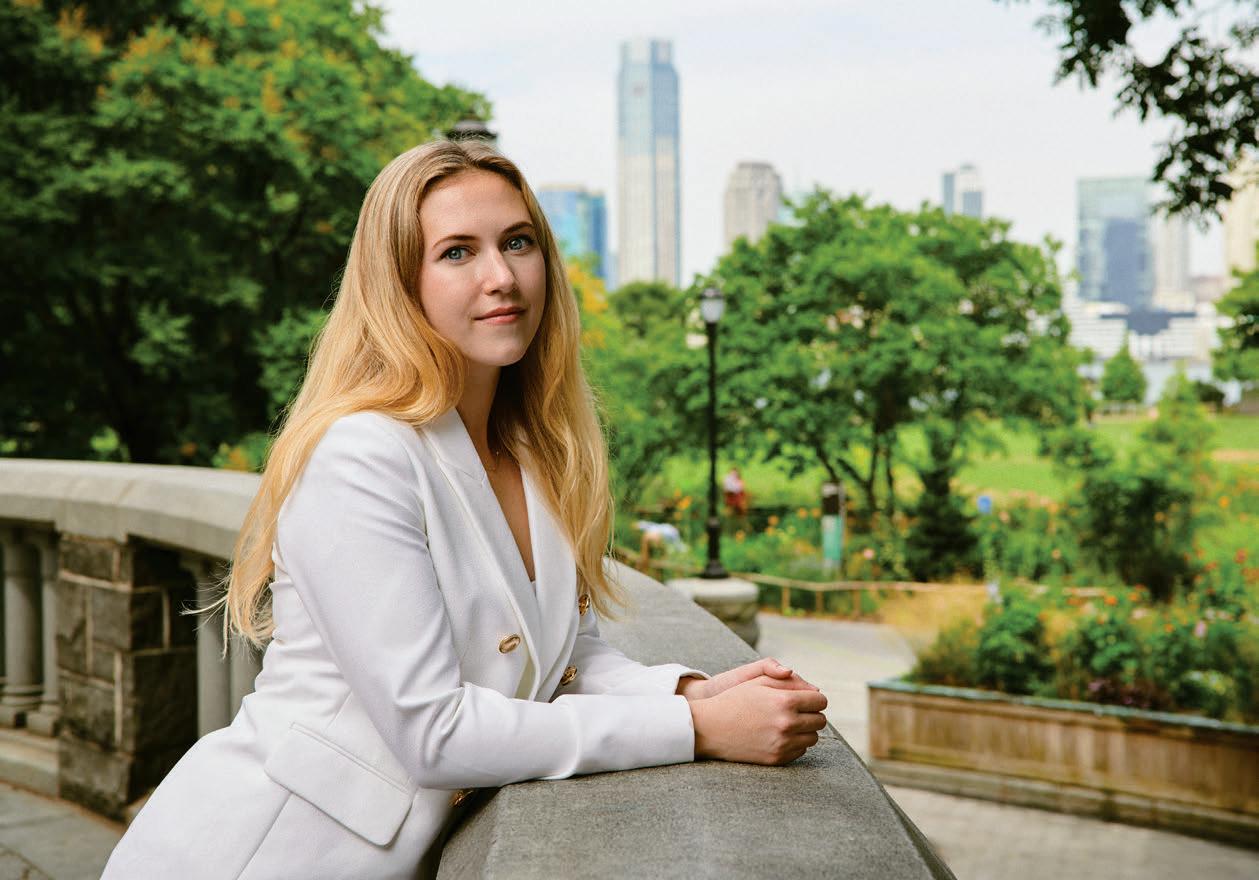
“That’s just the sound of a party, Kait,” Mom said, trying to soothe her. “It’s not your friends. No one is talk ing about you.” Kait didn’t believe her. The noise of the party had entered her brain, bounced around, and emerged again as something different—per haps her internal worries and fears
Our mom drove her around the neighborhood until they located the source of the noise, gesturing at the party to Kait through the car’s window. “See, it’s just strangers. Not your friends. They’re not talking about you.” Kait nodded, but there was no way to know if she really understood. n
fall 2022 v bcm 43
Meet the newest BC Alumni Board members and vice presidents!
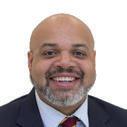

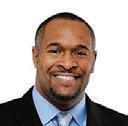
As volunteer leaders of the Boston College Alumni Association (BCAA), the Alumni Board of Directors strengthens relationships among more than 200,000 Eagles worldwide by engaging alumni interests and generating meaningful opportunities around them. We are thrilled to welcome five new members to the Board and elevate three new vice presidents. See a full list of members at bc.edu/alumniboard
NEW VICE PRESIDENTS
NEW MEMBERS
Career Connections for BC Women
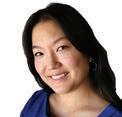
The Council for Women of Boston College BC Connections Mentoring Program provides students one-on-one relationships with alumnae, offering support for the student’s professional and personal goals. Facilitated through Eagle Exchange, BC Connections allows users to initiate conversation online and create conversation with anyone anywhere in the world. Currently, 198 students and alumnae take part in the program, creating nearly 100 mentorship matches and underscoring BC’s commitment to the complete education of women.

BC Connections has a strong and long tradition of helping others, and many students have found support through it. Former mentees are now becoming mentors themselves, which speaks to the program’s success.
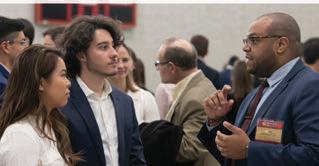
I have been a mentor for 20 years and maintain relationships with all my mentees—the bonds formed are truly special. The program is near and dear to my heart, and as chair of BC Connections, I’d like to help even more students and alumnae connect worldwide.”
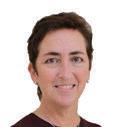
Diane Green ‘82
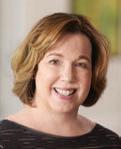

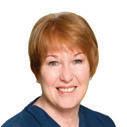
In partnership with the BC Career Center, Eagle Exchange is an exclusive online networking platform connecting the global BC community through lifelong, professional conversations.
users
sent
Student users
rating of alumni-student connections

Class Notes // Alumni News & Notes
James A. Lizzul ’09 New York, New York
Dane O. Fletcher ‘94 Milton, Massachusetts
Gloria “Glori” Alvarez ’88, P’16 Guaynabo, Puerto Rico
Wynndell G. Bishop ’00, MBA’07 Cheverly, Maryland
Cathy Savage-Eysie ‘85, P’24,’26 Medfield, Massachusetts
Ann R. Finck ’66, H’14, P’93,’95,’96,’06,’08 Chair of the Past Presidents Council Nyack, New York
Christina M. Sliwa ’93, MBA’00 Newton, Massachusetts
Spotlight on:
Go to eagleexchange.bc.edu Alumni
10,214 Average
4.7/5
4,329 Messages
47,422
“
Hannah Cho ’09 New York, New York
44 bcm v fall 2022
Alumni Class Notes
Theater in the North End. James gets out for lunch a couple of times a week, usually at Caseys off Broadway Street in Somerville. He wishes all his former BC classmates a healthy, safe 2022.
NC 1956
STAY CONNECTED
Submit your news and updates for inclusion in Class Notes at bc.edu/classnotes
Follow us on social media bc.edu/socialmedia
View upcoming chapter, class, and affinity group events at bc.edu/alumni
To get the latest info on programming and to stay in touch with your BC family, update your profile in our alumni directory at bc.edu/update
Some alumni notes have been edited for length and clarity. To view the full notes, visit bc.edu/bcmnotes or scan this code

Barbara Lowe Eckel reports on a mini reunion in Toronto with friends from her NYC days in the ’60s. The reunion included our Jamaican Newtonite Pamela Hutchins Mordecai ’62 , a great fan of Mother Maguire. Pam is now a nationally known writer in Canada and recently had a poem published in Harper’s Magazine. She was also mentioned in the New York Times Review of Books and has published a book of poetry with New Directions.
NC 1957
Ellie Pope Clem reports that their English grandson visited the States, including a trip to the beach with his father, Mike, and an Alaskan cruise. Dave and Ellie are well but opted out on the beach and cruise like armchair travelers these days.
received a medal from FAPA. // Marjorie George Vis enjoyed the lakes in northern Michigan and Wisconsin. // Julie Saver Reusch spent two weeks recovering from a broken leg. // Rosemary Stuart Dwyer and Rhonda Raffi Meegan worked on the next AASH. // Patty Peck Schorr’s grandson graduated from St. John’s Prep. Her grandson Matt was married. She took a pilgrimage to Israel. Class correspondent: Patty Peck Schorr // dschorr57@verizon.net
1958
65th Reunion, June 2023
1954
Bill Kenney’s third book of haiku, keep walking, (Red Moon Press, 2021) has been granted a Touchstone Award as distinguished book of the year by The Haiku Foundation. Class correspondent: John Ford // jrfeagle1@gmail.com
1956
James W. Melloni retired after 22 years with the DoD-USAF and still resides in Somerville with his grandson, Jim III. He is a big help since James suffered a torn oblique tendon and walking is a bit difficult. Somerville is also handy for Jim III, since he performs at the Improv
// In June, Diane Russell McDonough and her two daughters; Lucille Saccone Giovino; Joan Hanlon Curley and husband Neil from Naples, Florida; Carol Ann Burke Ryan; and Connie Weldon LeMaitre attended a lovely Mass of Newton reunioners (including two Sacred Heart nuns and a Jesuit presider) in the Trinity Chapel on the Circle. They then moved across to the Stuart Lawn for an outside luxury buffet brunch with their own table, music, and lots of conversation. Unfortunately, Carol McCurdy Regenauer had to cancel at the last minute. Class correspondent: Connie Weldon LeMaitre // lemaitre.cornelia@gmail.com
NC 1958
65th Reunion, June 2023
Jo Kirk Cleary partied on the Cape with family members. // Judith Young Runnette visited Eileen Mahoney and Tanglewood.
// Peg Keane Timpson’s granddaughter Elizabeth was married and granddaughter Olivia moved to Singapore. // Sue Fay Ryan’s granddaughter Penelope Ryan will attend Rollins College, and Amelia will attend Howard University. Sue’s book Trusting Your Child’s Teachers
To submit your note, visit bc.edu/classnotes or email classnotes@bc.edu.
Betty Sweeney Minaissian had an excellent education at BCSON. She was an instructor and professor of nursing at various schools of nursing. Later in her career, she was recruited by the Joint Commission Accreditation of Hospitals as a surveyor. She participated in surveys in over 550 facilities all over the US, including Hawaii, Alaska, Puerto Rico, and Germany for 17 years. Her three children are married. She has four grandchildren, a step-grandson, and three great-grandsons. Her dear husband, Saro, passed away. She has had a great life. // Mary Ann and John Dooley manage to maintain their Florida-Virginia lifestyle while still obeying medical mandates. Keeping track of their loved ones remains a full-time occupation. John was saddened to learn of the death of his friend, Larry Bohan, MD, earlier this year. // Bill Shook has retired after a career in public health and municipal work. He is active in board work with agencies providing comprehensive services for clients with substance abuse issues and serves on the board of corporators of a regional hospital system. He is married and has a step-daughter, Diane, and a son, Norris, who lives in Massachusetts with his wife Jackie. // Now that Sheldon Daly has finally retired, he and Nancy are really enjoying their golden years. They are still living in their Hingham home. Sheldon sends greetings to all his BC sports-mates.
// Mary Bryson, Dottie Tully, Margaret Molloy Vasaturo, and Joan Downing
Lachance still make the effort to get together monthly to share lunch and news. // Marian Bernardini DeLollis recently enjoyed a Norwegian cruise in Alaska. The trip brought back happy memories of the 2008 Norwegian cruise to Bermuda that was one of the highlights
fall 2022 v bcm 45
of the class’s Golden Eagles 50th reunion. Class correspondent: Marian Bernardini DeLollis // mdelollis58@comcast.net
1959
Thomas Halpin finally retired from being a professor of obstetrics and gynecology at the University of Massachusetts School of Medicine. He is enjoying retirement with his wife of 58 years, Pat, and his nine grandchildren. Also enjoying relatively good health! // Sr. Ruth McGoldrick, S.P., is retired and lives at Providence Place, an independent retirement residence in Holyoke. She still serves on committees and a board and enjoys current events and keeping up in the field of spirituality. // Jane Gillespie Steinthal is happy to say the Steinthals in general are well and thriving. As for their 16 grands, they are enriching her life and bringing her joy, as 14 are now in their 20s and are bringing their “forevers” to visit. In March, the entire family of 30 was in Texas for their granddaughter Courtney Kent’s wedding. However, last October her Jack had two strokes. Jane is happy to say he is doing just fine. // George Giersch received a call from Jack Harrington ’58 that Ted Lyons passed away. Ted was instrumental in helping BC make the NCAA tourna ment in 1958. Ted was a gentleman and super teammate. May Ted rest in peace. // Jim Gosselin reminds us that ours was the first class of students in the new dormitories. After graduation, Jim joined his father in the family commercial laundry and dry cleaning business. His father had a heart attack six months later, and Jim ended up running the business at age 22, along with his younger brother Tom ’63. They refocused the business to a healthcare clientele and had customers in eastern New York and four other states. Jim retired to Vero Beach. In recent years, his focus is being a caregiver for his wife, Nancy. They have three children, five grandchildren, and five great-grandchildren. Class correspondent: William Appleyard // bill.appleyard@verizon.net
NC 1960
Seventeen classmates made it to the Newton Campus on June 4 and 5 for the postponed 60th Reunion. Above is
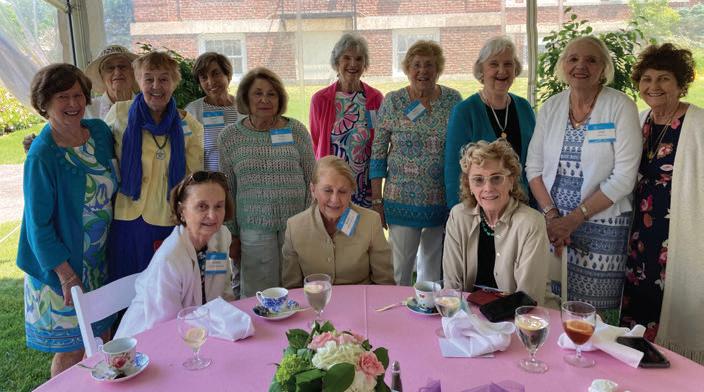
the picture at the Saturday Luncheon. Class correspondent: Patricia Winkler Browne // enworb1@verizon.net
1960
Leo Shea published Our Family Roots 1775–2020: Shea, Hurley, Carmody, Hannan. In 420 pages, he tells the family history of his four grandparents. // Edward A. Hutchinson, MD passed away December 21, 2021. // John Walgreen has been enjoying retirement since 2008, dividing his time between Massachusetts and Florida. // Michael Celata continues to live in North Reading although his house was sold in May 2020. He has four grandchildren. //
Pauline Fogge Leonard’s first husband, Gordon, passed away at 57 in 1990. They had four children. Her daughter Ann Marie had two children and passed away a few years ago from metastatic breast cancer. Pauline’s oldest son, Joseph, has two children, and her next, Beth, has a daughter. Her son Bill has three children. Pauline remarried 18 years ago to her husband, Bob. They have been very happy, retired, and enjoying life. They sold their house and moved to senior living at The Atria in Barrington. Two years ago, they adopted a four-year-old dog named Koto. // Allan Solomon JD’60 was awarded the Pioneer Award by the state of Mississippi and inducted into the Mississippi Gaming Hall of Fame, having been involved with
nine casinos in the state employing 10,000 people. Class correspondent: John R. McNealy // jmcnealy@juno.com
1961
Robert (Bob) Rooney of Kennebunk, Maine, died at his home on February 12, 2022, surrounded by his wife of 60 years, Sara (Sally) Manning Rooney ’62, and his three children. Upon graduation, Bob was commissioned a 2nd Lieutenant in the U.S. Army. Following his service in the Army, he taught math for 15 years in the Acton-Boxborough school system. He then went on to a successful career in the technology industry while also operating a swim club on Lake Boone in Stow for over 20 years. Bob was a quiet and gentle man, but he also loved to have fun. He was the “fun uncle” that all the nieces and nephews adored. He will be remembered by all who knew him as a wonderful, loving, and caring man and will be greatly missed. // In the past two years, Henry Quinlan has given over 100 talks to retiree/senior groups on various topics regarding retirement-age issues. His most popular talk is “Don’t Forget to Bounce the Last Check.” // Hector Reichard, former attorney general of Puerto Rico, is still practicing law and is a board member of the Pontifical Catholic University of Puerto Rico. He is married to Wanda and has five children and 17 grandchildren. He is Consul General for Korea and continues to play the guitar as he did when he was
To submit your note, visit bc.edu/classnotes or email classnotes@bc.edu.
Class Notes
46 bcm v fall 2022
COURTESY OF NC’60
at BC with the Shades: Gerry Hamel and Pat Sabatino Class correspondent: John Ahearn // jjaeagle@hotmail.com
NC 1962
Maura O’Neill Overlan and Gini Goggin McGinn played in the Wanumetonomy Golf and Country Club (Rhode Island) member-guest for the 15th year. Nancy O’Neill NC’61 was also part of the foursome. // Judith Bishop is hosting a podcast, “More on the Story,” available on all major platforms.
1962
Ed and Peggy Connelly will celebrate their 55th anniversary in November, with their three children and seven grandchil dren at their home at the Westlake Golf and Country Club in Jackson, New Jersey. As sunbirds, they spend the winter months at their Seaside Park, New Jersey, residence. Ed retired in 2006 after a 23-year career with Pathmark Stores and 14 years with IBM. On the other hand, Peggy left her nursing profession only last year. Ed sends a thank-you for Tom O’Connor’s history of 1962. // Anthony J. “Tony” Agostinelli, a retired university professor, keeps active at 89 while residing at Atria Aquidneck Place in Portsmouth, Rhode Island. He is editing his second novella, “The Priest Was Dead”; hosting and producing a public access TV program called Jazz Bash; teaching a course for the Circle of Scholars at Salve Regina University; and is an ambassador for his Atria senior residence, helping to ease new residents to senior living. // Paul Apholtis announced that his youngest daughter, a BC grad, was married at Lake Winnipesaukee on Memorial Day weekend. // Sam Fardy continues his active participation in the BC band since undergraduate days. He proudly reports that on July 17, the BC Community Band performed a free concert at the Hatch Shell. // Kevin Doyle celebrated his company’s 40th anniversary. Kevin started his company when he was 40 and now does business in 40 states. Now Kevin’s favorite number is 40. // Bill Novelline arranged for classmates to tour the Harrington Athletics Village, home of the Pete Frates Center and baseball and softball stadiums. After
the tour, the group enjoyed a lunch graciously hosted by Bill. Eileen Novelline, Paul Deeley, Eileen Faggiano, William Lundregan, Joyce McDevitt , Jack MacKinnon, Mary McNamara , Kevin Duffy, Ronald Dyer, John Shea , Robert Capalbo, and Sam Fardy attended. // Bill Lundregan hosted a group of alums and several wives at the Corinthian Yacht Club. // Joan Mullahy Riley, assisted by Jane Sheehan, celebrated the 60th reunion with a luncheon at her home for 20 classmates. It was a wonderful day of renewal of friendships and remembrance of those who have died. Class correspondent: Eileen Corazzini Faggiano // efaggiano5@gmail.com
NC 1963
Mary Droney Reynolds and her husband Frank are happily retired. Their oldest grandchild, Maura Letendre, is a senior at the Boston College Connell School of Nursing. Her younger sister, Shannon, jumped ship and is now in her second year at Holy Cross, but Mary and Frank forgave her. Mary will never forget her dear classmates at Newton, nor will she forget the professors who stimulated them daily. She loved her career teaching English, but she had no idea how to produce a coherent paper until she encountered Mother White. Class correspondent: Colette K. McCarty // colette.mccarty@gmail.com
1963
60th Reunion, June 2023 Bob Uek, who has a Naples, Florida, place in Pelican Bay, welcomed a new neighbor—Jim Norton has purchased a snowbird house there. He closed up shop and is back in Massachusetts until cold winds blow. // Friends of Wayne Budd have inaugurated the Wayne Budd Scholarship at BC Law. A highly respected attorney, community leader, and former BC Trustee, Wayne has been a role model for many younger Boston lawyers and folks in business. //
Philanthropist Jack Connors was chair man of Massachusetts Gov. Charlie Baker’s re-election campaign in 2018. //
Last May, the periodic ’63 gabfest took place with lunch at Lewis’ Grille in Norwood. Attending were Bob Arbing, Frank Carney, John Cuneo, old friend
To submit your note, visit bc.edu/classnotes or email classnotes@bc.edu.
George Finn, Paul Hardiman, Mike Lydon, Jim Norton, Bob Parks, Tom Quirk, and Ed Rae // Bob Smith attended a special luncheon to honor a fallen teammate, John (Hoof) Flanagan ’64. Traveling from Cape Charles, Virginia, Bob reflected not only on John, but also on the additional 19 gridiron mates from 1963–64 that have taken their final snap. The team misses John and all of their brothers—thanks to Harry Kushigian ’64 for his relentless effort to keep them together. // Hard to believe, but Mary Landrigan ’64 and Philip Landrigan have now been back in Boston for more than four years, and Philip is starting his fifth year on the BC faculty as director of the Program for Global Public Health and the Common Good. The program graduated its first full cohort of 51 students last year. // Ed Rae reports he coached four sports, years back. Ed officiated as well most of his adult life. He is still, to a lesser degree, active as referee in soccer and boys’ lacrosse. In these roles, he gladly encountered classmates or their sporting offspring. Among them were Gene Durgin, Dick Gould, Paul Hardiman, Bill Harmon, Jim Norton, Joe Quinn, Tom Quirk, and Joe Shevory // Francine Bonnano Dionne and her husband have now downsized, giving up the beautiful water view for a little cement in town. They went to Scotland in May. They are looking forward to their next trip to Boston. // Tom McCabe is proud of Sarah, his oldest grandchild, who is a 2017 Brown graduate, received a PhD in chemical engineering from MIT, and works in biotech in Cambridge. His middle grandson, Chris Cowles ’22, labors in the Big Apple with a coterie of classmates and peers. His youngest grandchild, Margaret (Meg), will begin at Brown this fall. // Paul Hardiman hosted a Cape Cod lunch bunch at his Falmouth house. Attending were: Carol and Jim Norton, Tom Quirk, Kay and John Golden, Brian Sullivan, Oky Goldman, Judy and Frank Carney, Bob Uek, and John Cuneo. Longtime friend Monsignor Frank Kelley graced the group’s engaging conversation. Class correspondent: Ed Rae // raebehan@verizon.net
NC 1964
Mary Lou Mullen and her husband, Pete Mullen ’61, attended the 2022 Women’s
fall 2022 v bcm 47
National Collegiate Club Water Polo Championship in Huntsville, Alabama, this spring. Boston College represented the New England Division. They drove from Notre Dame, Indiana, to Huntsville to enjoy seeing their two granddaughters swim for BC. Audrey Mullen ’22 is a senior and captain and Elise Mullen ’25 represented Boston College very well. Class correspondent: Priscilla W. Lamb // priscillawlamb@gmail.com
1964
It is with great sadness we report the death of Ronald Moravitz, who was a proud graduate of Brooklyn Prep. His wonderful laugh will be missed. // Joseph deNatale is living in the north east section of Linden, Texas, hometown of Don Henley of the Eagles and Scott Joplin. His oldest son, Joe, Jr., is lead designer of the Bronco, and his son Luke is senior analyst for Wells Fargo. Joseph put out a YouTube video of his year in Vietnam as a combat surgeon, titled “Quang Tri 1970–1971,” sort of like a medical Top Gun // Carol Tye is begin ning her 63rd year of service in the Revere Public Schools. She was a teacher of English (and sometimes Latin) for 35 years at Revere High School before she became assistant superintendent. Shortly thereafter, she was promoted to superin tendent, in which she served for five years until she retired in 2001. Still eager to serve, Carol ran successfully for a two-year term on the Revere School Committee; she won and was re-elected 10 more times, for a total of 20 years. She is grateful for the privilege of spending her life in a world that is always young.
1965
Betsy O’Neill Jones recently published her memoir, Answering the Call, now available on Amazon. She recounts that after graduation from BC she initially responded to a sense of a spiritual call by spending a year in Jamaica as a lay missionary. Thereafter her search led her to a different, unexpected calling, one to a life of dedication in a new religious movement. Ultimately, this would bring her to a life of caring not only for her own five children but also for individuals and families throughout the nation and to a multi-faceted global involvement
with peace-making. This book is the story of her surprising journey. //
Fred Grannis returned to Long Beach, California, from a 37-day road trip across Canada and the Deep South, including a visit with Betty and John Weis in Chapel Hill, North Carolina. Fred retired as emeritus clinical professor of thoracic surgery at City of Hope National Cancer Center but is still active in lung cancer screening research and advocacy. He is planning a trip north to Kentfield, California, to hang out with Carole and Ed Harkins Class correspondent: Patricia McNulty Harte // patriciaharte@me.com
NC 1966
Catherine Beyer Hurst reports that 20 classmates were present at the 55th (plus one!) reunion in June. Cocktails at the Marriott Friday night, an invigorating class discussion (with three breakout groups) on Saturday morning, and a class party Saturday night shared with the other classes of 55 years or more—though the Class of 1966 was by far the largest group and the only ones dancing—were highlights of the weekend. The class acknowledged their deceased classmates at Sunday morning Mass at the Chapel. // Susi Marion Cooney’s husband, Jim, died on February 22 of Alzheimer’s disease. Jim had lived in Lowell most of his life, taking over his father’s insurance and real
estate agency and leading it as president until his retirement in 2015. Jim and Susi are the parents of four daughters and the grandparents of seven. // Gail Lavin Reardon died on February 21. After graduating from Newton, Gail pursued graduate studies at Simmons School of Social Work. She worked in counseling and in fundraising at Harvard and at Beaver Country Day School and then started her own experiential education consultancy, Taking Off. Gail leaves behind two daughters and three grand children. // Mary Donahue Stearns has developed a course entitled “Engineering Forensics,” which she teaches in the Tufts University Human Factors Engineering program. Prior to teaching at Tufts, she was chief of the Human Factors Division at the Volpe National Transportation Systems Center in Cambridge. // Susan Korzeneski Burgess recently exhibited a number of new paintings at two art shows. Her work was part of an exhibit of “Landscapes, Oceanscapes, Cityscapes” at the Galleries at Lynn Arts. She also showed paintings in a special exhibit of works by long-term members of the Marblehead Arts Association in August/ September. All of her paintings in both shows were painted (either entirely or mostly) “en plein air,” a process she reports that she never learned at Newton! Class correspondent: Catherine Beyer Hurst // catherine.b.hurst@gmail.com
To submit your note, visit bc.edu/classnotes or email classnotes@bc.edu.
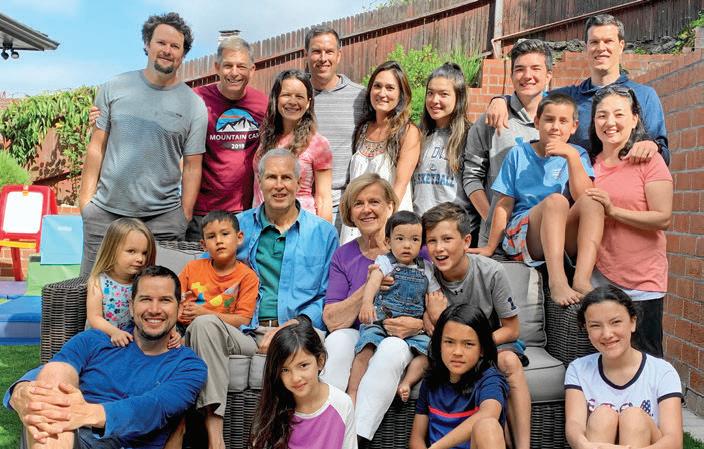
Class Notes
48 bcm v fall 2022
COURTESY OF BETSY O’NEILL JONES ’65
1966
Two months after graduation from BC, Stephen Arlinghaus entered USAF Officer Training School and was commis sioned as a 2nd Lt, followed by his marriage to Eileen Riordan on October 29, then off to University of Oklahoma for one year of meteorology and then three years as a weather officer stationed in the UK. Steve has been fully retired for several years, and a season ticket holder for BC men’s hockey for 14. // Dan Madden lives in Sun City Center, Florida. After a career in economic development consulting, he has turned back to his love of history. He wrote three books that are available on Amazon, two on the American Revolution and another on his Greco-Roman heritage. He and Judy live with a disturbingly precocious and entertaining lovebird. They have two other children and two grandchildren. His co-president of the ’66 BC International Club, Pradeep Nijhawan ’68, also lives in Sun City Center. They have a blast together. // Claudia Sheila Daileader (Collins) passed away on July 15, 2022, in Williamsburg, Virginia. She is survived by her husband, Philip Henry Daileader, Sr // Peter Veneto continues to volunteer with SCORE as a mentor to people who want to start or grow a small business in the Lowcountry of South Carolina. Peter finds this a very rewarding way to give back to the community and to use the business skills he learned at BC and in his work experience to help people live their dreams of being in business.
NC 1967
The 55th reunion in June was enjoyed in person by Faith Brouillard Hughes, Margaret Glynn, Maria Vitagliano, Anne Caswell Prior, Barbara Gada Wells, and Marianne Ciuffo Stineman with her husband. It was a good time to chat and catch up. Faith and Margaret also shared a BC dorm room with two other NC younger grads. Margaret said “it was fun being back in a girl’s dorm again,” which allowed even more time to visit. On Sunday some came back and joined the other 12 NC classes at the reunion for the annual Mass and time to remember our deceased alums. NC ’67 has 26 on that list. // Paula Lyons, Maureen Daley Young, Kathleen
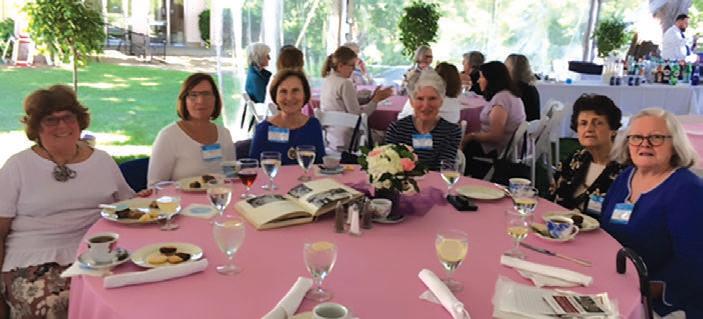
Hegenbart , and Christina Crowley got together in the Berkshires for a belated mini reunion in mid-June. Coming from Massachusetts, Pennsylvania, and California, they rented a beautiful house in West Stockbridge for four days and spent time reminiscing and catching up while they cooked, hiked, pampered themselves with a spa day, and enjoyed Bonnie Raitt at Tanglewood. // Marcie Cormier Clarke sent in a solid recom mendation for a new musical, Anne of Green Gables, based on the novel by L. M. Montgomery. She and her husband saw it at the Goodspeed Musical Theater in East Haddam, Connecticut. // Connie Murphy Hughes has a granddaughter graduating high school, now en route to BC. The oldest granddaughter is already a student at Holy Cross. Three grandsons are in middle and high school and a fourth was born in September 2021. Connie will be busy with their school and athletic events for some time to come. Luckily, she can get out of work–yes, she is still working–to attend their events. Class correspondent: M. Adrienne T. Free // thefrees@cox.net
1967
In the most recent Boston College Magazine (Summer 2022) it was errone ously reported in the Class of 1967 section that Richard F. Powers III (“Dick”) had passed away. This was most regret table as Dick, a former Boston College Trustee and president of the Morgan Stanley Client Group, is living in Palm Beach and Cape Cod, remains active with BC, and is a professor at The Naval War
College where he teaches “Business Perspectives for Military Leaders.” // Anne and Gerry Baker give the BakerArrupe Lay Scholarship to a student BCSTM yearly. The foundation helps advanced students realize the goal of theology-based service. They must demonstrate intellectual prowess, financial need, volunteerism, and plan to enter a service profession. // Peter Ciampi hosted a group of his 1967 classmates. Boston College is very special to Peter because his family has seven screamin’ Eagles! The alumni Eagles started with a visit to the BC McMullen Museum. In attendance were Janet Rogers, Kathleen (Harrington) Bell, Lynda Butt , Joe Hill and Allison Chase, Bill Gavin, Bill Sandberg, Ken and Mary Ellen Tucker, and John Crowley // Charles and Mary-Anne Benedict have recently been to a number of wakes and funerals of classmates. At Jack Gurry ’s wake, they met with Mary Kane, Paul Galvin, James “Fuzzy” Selvitella , John Keenan, Roger Croke, Sal DiMasi, and Gene Canty ’68. It was followed a few weeks later by Pat Keating’s (wife of Jack Keating ) passing. Attending were Cindy and Al Butters, John Hart , John Casey, Harry Gallagher, Ed Minor, Len Doherty, Peter Marto, Marty Paul, and Don MacDonald // JoAnne Regan Frey Howland, who earned her BS in Nursing and her PhD in Education from BC, has passed away. She was a professor of obstetrical nursing at both the University of Hawaii and BC, as well as a professor of nursing at UMass Boston. She was predeceased by her two husbands, Donald Regan and Albert Frey. //
To submit your note, visit bc.edu/classnotes or email classnotes@bc.edu. fall 2022 v bcm 49
COURTESY OF M.ADRIENNE T. FREE NC’67
Bob Hamilton still resides in Arkansas, but after losing his first wife in 2016 and undergoing cancer surgery and radiation treatment in 2016 and 2017, he reports that he recently celebrated continuing to be cancer free, becoming a greatgrandpa, and, best of all, celebrating three years of remarried bliss with his wife Catherine in their new home in Rogers. Bob and Catherine both enjoy photography. // The Class of 1957 55th reunion luncheon had over thirty classmates breaking bread together. Attending were Charles and Mary-Anne Benedict, Al and Cindy Butters, Don and Kelly MacDonald, Joan and Vin Iacono, Carolyn Whooley, Paula Edmonds, Mattie Keaveney, Liz Kudzma , Marty Kane, Roger Croke, Bitsey Kelley Smith, Janet Crimlisk, Carol Genereux, David Gay, Rob Wilde, Jack Keating, Tony Tortorella , John Keenan, Fuzzy Selvitella , Bill Marshall, Bob Galibois, Jack Lambert , Marty Paul, Roger Keith, and Jim Peters Class correspondent: Charles and Mary-Anne Benedict // chasbenedict@aol.com
NC 1968
Jeanie Sullivan McKeigue died in March after a courageous 18-year battle against mantle cell lymphoma. A private family Mass of Resurrection was celebrated earlier in the year in the Newton Chapel. At the celebration, photographs of the significant adventures and events in Jeanie’s life were displayed. Prominently shown were pictures of Jeanie’s Newton years. Joe, Jeanie’s caring husband, thanked all for their friendship and support while mentioning that Jeanie’s wonderful obituary printed in The Boston Globe had been written by her niece, Dominica. // Please remember in your thoughts Marcy McPhee Kenah, whose husband, Larry, died unexpectedly in June. // Margaret Connorton Reilly, her four daughters, and their families vacationed together in Jackson Hole. Margaret’s grandson, Ryan Schaefer, started his freshman year at BC this fall. Ryan’sdorm assignment is on Hardy first floor. Could it be 104 where Margaret and Kathy Hastings Miller roomed together as freshmen 58 years ago? Class correspondent: Jane Sullivan Burke // janeburke17@gmail.com
1968
55th Reunion, June 2023 Richard Sumberg and his wife, Lolli, have lived in Andover since they married in 1969. He started a financial planning and investment management business in 1992. He sold it to his partners over a 12-year period and left the business at the end of 2021. Retirement means more time to spend on three charitable boards: Essex County Habitat for Humanity, Essex County Community Foundation, and Edgewood Retirement Community and more skiing, sailing, and golf with kids and grandkids. // Ann Murphy Bellotti, MSW’68, is now retired, as is husband, Michael Bellotti, MSW’67. Ann was assistant director of personal counseling and special lecturer at Providence College before retiring in 2007. Michael was director of training at the Rhode Island Department of Social Welfare and special lecturer at Providence College. Their oldest son, Stephen Bellotti ’92 , is a lawyer in Washington, D.C. // Kathleen Salat Widger is celebrating her 50th wedding anniversary in Newport Beach, California, with friends and family. Her granddaugh ter went to the BC camp for basketball and was voted Eagle of the Week for her performance. // Ken Hackett’s memoir of his time as U.S. Ambassador to the Holy See: Vatican Code, American Diplomacy in the Time of Francis, came out this fall. Class correspondent: Judith Anderson Day // jnjday@aol.com
1969
The Honorable Joseph M. Navin died at his Marlborough home on April 27, 2022. Joe had an extensive career in public service, both in elected and appointed offices across Massachusetts. Joe first served as a councilor-at-large and later as state representative. After leaving public office, Joe served in the office of the treasurer and receiver general as bond director and later served as the manager of finance for the MBTA. After his retirement, Joe became a realtor with Dora Naves & Associates. Joe was married to his devoted wife, the late Maria, for 37 years. Joe is survived by his three children: Maura, Bridget, and Sean. // David Dolan has decided to move back to Massachusetts after living
in Florida for 15 years. He and his wife, Regina, are building a house in an over-55 community in Wilbraham to be closer to family. They have three children, five grandchildren, and two great-grandchildren. // Timothy O’Toole ’69 and his wife, Elaine ’70, were crowned 2022 bocce champions at the Landings Country Club, Savannah, Georgia. The O’Tooles emerged victorious after a grueling competition involving over 75 matches. // Jerry Ragosa , Jim Littleton, and Joe Marzetti attended the grand opening for the renovated sport medicine center for BC football, which was named after classmate Barry Gallup Barry announced his retirement in early July after 46 years with BC football as a player, coach, and administrator. Barry also served as the head football coach at Northeastern for 10 years, three of which he also served as the department’s athletic director. Barry and his wife, Victoria, reside in Wellesley where they raised their three children, Darren, Lisa, and Barry, Jr. Barry and Victoria welcomed grandchild number two, Darren David Gallup, on January 24. Class correspondent: James R. Littleton // jim.littleton@gmail.com
NC 1970
Steph Del Giudice McEvily and her husband Chuck celebrated their 50th anniversary by returning to the site of their honeymoon in Mont Tremblant, Canada. As the co-chair of the capital campaign for a local charity called CAST, Steph has assisted in raising 93% of the $3.1 million goal to purchase their new home in Southold, New York.
1970
Kevin Wall continues to practice as a CPA and attorney. He is also a lecturer at Northeastern University Law School and Boston University Law School. He is a proud, first-time grandfather to Charlotte Lou Downey Wall. // As chairperson of the 50th Reunion, Mike (Mingo) Mingolelli says that the mates who attended, particularly the Saturdaynight gathering, had a marvelous time. Observers would have been very impressed to see this group of 73- and 74-year-olds pounding and swinging on the dance floor! Wow! All looking forward to the 55th! Sorry for those who
To submit your note, visit bc.edu/classnotes or email classnotes@bc.edu.
Class Notes
50 bcm v fall 2022
missed this reunion! // Charles Reagan enjoyed attending his 50-year “Golden Eagle” celebration and seeing classmates who he has known for over 56 years! It was a great weekend looking back and remembering all of the fond memories spent on Chestnut Hill. // Bob Bouley is happily retired and enjoying his new home and many new friends on Daniel Island (South Carolina). Class correspondent: Dennis Berry // dennisj.berry@gmail.com
1971
John Mashia celebrated his 50th wedding anniversary with his wife Janet, whom he met while at BC. Helping celebrate the event were classmates Charley McBride, Tom Henneberry, Russ Pavia , and Paul Higgins // Robert Thacker reports that he is still serving the public as the most popular lawyer in Framingham. He and his current wife have three wildly successful children and seven beautiful and brilliant grandchil dren. He is also rich, famous, temporarily healthy, and blessed beyond his wildest imagination because of his association with Boston College. // Rick Simms retired from the practice of law in 2015. He enjoys babysitting his six grandchil dren. // In 2018, Dennis Doyle and his wife Judy sold their home in DeSoto, Missouri, and moved to Blaine, Washington. They rent from their neighbors, their daughter, son-in-law,
and two grandchildren. They are so thankful they made the move. While BC is 3,140 miles away, they love hearing about the doings of fellow classmates. //
James Crowley, IV has now decided to retire from the practice of law after 45 years in the areas of Ohio worker’s compensation, Social Security disability, personal injury, and sports law. As he approaches his retirement date, he is investigating the possibility of writing a book based upon his experiences and those of fellow lawyers, judges, court reporters, and bailiffs in Cincinnati. // After David LaCivita graduated from BC, he obtained his law degree from Cornell Law School. He recently retired as a senior partner after 40 years as a trial lawyer with a Washington, D.C., law firm. He and his wife Cynthia now split their time between their family home in Potomac, Maryland; Sanibel Island,
NC 1972
The Newton College Class of 1972 50th Reunion was a beautiful, intensely warm, and totally enjoyable sharing of commu nity and Newton spirit. It started with a graceful pinning ceremony and a lovely reception honoring all 50th Reunion classes. Ruth Erikson and Nancy Brouillard McKenzie were on stage to receive specially designed Newton 50th Anniversary pins. Kathy Hickey Barry moderated “Coffee and Conversation” on the Newton Campus. Frances de la Chapelle, RSCJ, joined the discussion and later the class picture on the Stuart steps. Vibrant conversations continued at lunch under the tent next to Stuart. The class party dance floor opened with an engaging band leader whooping all into a frenzy. Joan Kilcarr Dannenberg showed never-seen dance moves. Other notable dance standouts were Gail Hegarty Fell, Cathy Connor, and Georgia Murray. Finally on Sunday, all joined together for Mass at the beautiful Newton chapel, had a generous Sunday brunch buffet, and one more chance for class pictures before saying goodbyes.
Florida; and visiting their children on the West Coast. // Mike Morris has moved back to Massachusetts after departing the state 46 years ago to pursue his teaching career. On July 1, his wife, Nancy Niemi, became president of Framingham State University. //
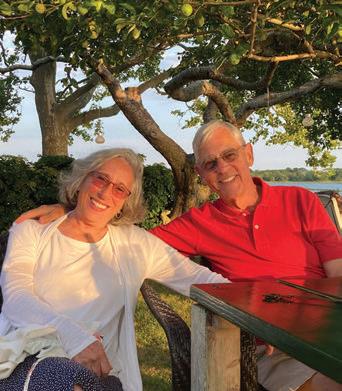
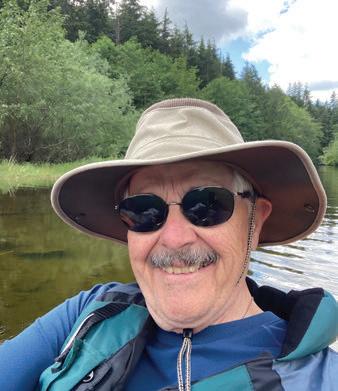
Tom W. Burke has donated 225 pints of blood to the Red Cross; just over 28 gallons! Class correspondent: James R. Macho // jmacho71@bc.edu
The Reunion was a success due to the hard work and careful planning of the committee, including Mary Sullivan Tracy, Mary-Catherine Deibel, Ruth, Nancy, and others. // In 2015, MaryMargaret “Beany” Verdon retired from her school psychology career and her private clinical psychology practice. Then she and her husband, Richard, moved from Long Island to Greenville, South Carolina. After 37 years of marriage, Richard sadly passed away in October 2019. Beany relocated to beautiful Hilton Head Island, South Carolina, and welcomes a call from classmates who visit the area. // Marilyn “Penny” Price Nachtman celebrated the arrival of her twin granddaughters in February. Penny is an adjunct faculty at Touro University in California, where she coaches new school administrators. // Maureen McGowan wore her “885” reunion cap extensively on Cape Cod during the summer and was surprised how many people asked her about it. In 2021, Maureen retired from her position as the faculty director of the specialized studies master’s degree program at the Harvard Graduate School of Education. She has now turned her attention to lots of new
To submit your note, visit bc.edu/classnotes or email classnotes@bc.edu. fall 2022 v bcm 51
COURTESY OF DENNIS DOYLE ’71
COURTESY OF STEPH DEL GIUDICE MCEVILY NC’70
interests, including buying a historic condominium in Denver so that she can visit her children and her granddaughters more often. Class correspondent: Nancy Brouillard McKenzie // mckenzie20817@comcast.net
1972
John Morin retired from his role as vice president and chief corporate counsel at John Hancock Investments. He teaches saltwater fly fishing for Orvis at Chatham Bars Inn and built a home in Chatham after tearing down his old cottage. A third grandchild has arrived, and he enjoyed seeing Mike Coyne, Tom Finn, Jim Dunn, Walter Kelly, and RoseMary Daly at the Golden Eagle celebration. // Brian Creedon has five children: four boys and one girl. His oldest, Mark, passed away in 2001. He has 11 grandchildren. // Marian Moyston Peters’s granddaughter, Kyla Coren, graduated from Bridgewater State University with a BA in criminal justice. // Larry Edgar was one of the marshalls at the BC Commencement ceremony on May 23. Among the other members of the class were Charley Mundhenk, a retired psychologist in Hingham who is the class’s only living member of the Hall of Fame; John O’Neil, who has returned to Massachusetts after a career in San Diego as the controller of a Qualcomm Corp. affiliate; and George Davis, a retired actuary. Among those at the head of the Commencement parade was Prof. Jim O’Toole of the history department. Class correspondent: Lawrence Edgar // ledgar72@gmail.com
NC 1973
Ellen O’Neil Helman retired from her work as a psychoanalyst last year. She and her husband, Jamie Helman ’74, sold their home in Miami Beach and moved to a condominium nearby. They are enjoying life with their daughters, sons-in-law, and grandchildren. // Jane Kennedy reported that she and her husband, Dave, are still living in Albuquerque and are about to celebrate their 30th anniversary. One of Jane’s current clients is a Massachusetts affordable housing organization for whom she began working with prior to 2006. Jane also shared the passing of classmate Patty Kamlin, on May 11,
2022, after a brief illness. She had been living and working as a fiber artist in St. George, Maine. Class correspondents: Kathy Dennen Morris and Mimi Reiley Vilord // kathymorris513@gmail.com // mimivi@optonline.net
1973
50th Reunion, June 2023
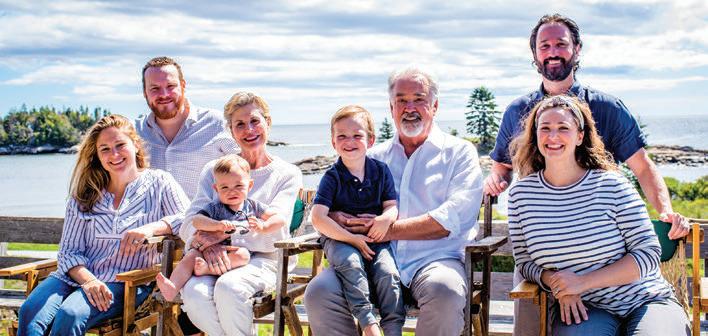
Jim Duffy has been retired for several years and has been traveling: Europe, South America, the Canadian Rockies, Australia, and New Zealand are among the highlights of the last ten years. He was planning a five-week European tour in late summer where he would visit Norway, Sweden, Poland, Germany, Denmark, Portugal, and Spain. // Myles Falvella retired. // Joyce Dains, DrPH, JD, APRN, FNP-BC, FNAP, FAANP, FAAN stepped down after serving as interim chair for the department of nursing at MD Anderson Cancer Center in Houston. // William Atkins is retired from 40-plus years of medical practice, including six years of active duty in the Army, and now continues to do volunteer work in his specialty. Class correspondent: Patricia DiPillo // perseus813@aol.com
NC 1974
Brigid Coles Guttmacher, Madeline Sherry, Sharon Byrne Kishida , Jude Hannaway, Mary Lou Maloney Buckley, Sue Sullivan, Catherine Meyer Tracy, and Margot Morrell have been “meet ing” via Zoom for their book club since April 2021. They’d love to have you join
them. If you’re interested, send an email to Margot at shacksway@icloud.com. Class correspondent: Beth Docktor Nolan // nolanschool@verizon.net
1974
Marty Kofman has been an emergency foster parent for many years. This year, he was awarded foster home of the year for his district. // John Nucci and his wife, Peggy, just saw the arrival of their fourth grandchild, Riley Rosey Nucci. She joins Michael, Benjamin, and Olivia as part of the growing Nucci clan. Meanwhile, John, who is senior vice president for external affairs at Suffolk University, was just reappointed to a second seven-year term as a member of the MASSPORT board of directors. // Bob Rosenthal is entering his 40th year on the faculty of Suffolk University and 30th year as department chair. His wife, Rita, is the director of public speaking at BC. // Cheryl McEnaney moved from Boston to L.A. 20 years ago while working for EMI Music. Since then, she has worked for various labels and as a VP of a concert promotion company. Unlike many of her classmates, she has no plans to retire and loves working independently, helping a very diverse group of talented international musicians. Class correspon dent: Patricia McNabb Evans // patricia.mcnabb.evans@gmail.com
NC 1975
Mary Ellen Quirk celebrated the 45th (+2) Reunion weekend with classmates
To submit your note, visit bc.edu/classnotes or email classnotes@bc.edu.
Class Notes
52 bcm v fall 2022
COURTESY OF ELLEN O’NEILL HELMAN NC’73
Eileen Amy, Mary Ann Eagan, Helen Fox-O’Brien and husband Dana, Jo Ann Hilliard Holland, Deborah Joyce-Drake, Justine Osage Laugharn, Kimberly Marshall, Mary Jehling Meehan, Beth Reifers, Elizabeth Alexander Stevenson, Donna Stimpson, Melanie Byrne Thomas, Ann Vernon, and Mary Elizabeth Simpkins Wells Jo Ann, along with Lee Costello, did an incredible job orchestrating a wonderful weekend // Beth Reifers hopes to see many more of the class in three years at the 50th Reunion. The weather was perfect and the Four Points Sheraton was only a mile from the Putnam Art Building on campus and Newton Centre. Points to Mary Beth for remembering the name of our former shopping haunt: Hit or Miss! // Jo Ann Hilliard Holland was thankful that the reunion was graced with beautiful weather and a great group of classmates happy to be together to celebrate our class and each other. On Sunday, Father Penna celebrated the Newton College Reunion Mass at Trinity Chapel followed by the Garden Party Brunch. The offertory collection bene fited the Society of the Sacred Heart and Sister Frances de la Chappelle accepted it on their behalf. Many got to catch up with Sister de la Chappelle, who was also part of the Class Conversation and Tea Party Luncheon on Saturday. Class correspondent: Karen Foley Freeman // karenfoleyfreeman@gmail.com
1975
Kevin Short is still practicing law in Minnesota and welcomed his fourth and fifth grandchildren this year. He is ecstatic that his fifth daughter, Emily, entered BC this fall as a member of the Class of 2026. So far she is resisting his entreaties that she attempt to graduate in three years so that she can attend reunions with the Class of ’75. // Michael J. Moore retired after 40 years in the investment business. Michael and his wife, Kimberly, live in Winnetka, Illinois, and Hobe Sound, Florida. They have three daughters. Michael and Kim have established two scholarships for under grads at BC: the Robert J Moore Class of 1944 Fund to benefit students from Dorchester attending BC, and the Father Francis J Murphy Fund to benefit students interested in pursuing a classic

liberal arts education. // Nancy Bailin is enjoying life at her homes in Pine Point Beach, Maine; Kailua, Hawaii; and Naples, Florida. She is retired from being an attorney but still enjoying a nursing career. Five grandchildren and one great-grandchild make life sweet. // Kathie Cantwell McCarthy was a recipient of a Framingham Senior Awards. She was honored for her volunteer efforts in health/healthcare related to her work with the Medical Reserve Corps (MRC) for 14 years. She volunteers for numerous MRC deploy ments such as: shelter operations, Patriots Day medical tent, National Drug Take Back Day, flu and COVID-19 clinics, first aid tents for 5K events, Earth Day, and Metrofest. // Sheila Harrington is proud to announce the birth of her new granddaughter, Maya, born in Pangbourne, England, to her daughter Michelle Micherone ’10 and her husband. They enjoyed a wonderful family vacation together in Maine this past summer. // After 42 years of residing in Shrewsbury, Jayne Saperstein Mehne and husband Chris ’74 have moved to Upton. // Janette Racicot ’75, MBA’79, and Sheila Harrington are looking forward to attending BC football and hockey games together again this year. Jan’s daughter, Vittoria Buerschaper ’09, blessed her with a grandson, Luke, who hopefully will attend his first tailgate at the Heights this fall! Class correspondent: Hellas M. Assad // hellasdamas@hotmail.com
1976
Coral Grout, MEd’76, was elected the national secretary of the American Legion Auxiliary and will continue to serve the organization during the 2022–2023 year. // Kevin and Elizabeth Marra Worgul welcomed their first grandchild, Easton Blake, last fall. Such a bundle of joy for parents Michelle (Worgul) and Gary Krupa, residing in Port Jefferson Station, New York. // Bert Keith begins his retirement career as a singer-songwriter. You can find his music on Spotify. Class correspondent: Gerald B. Shea // gerbs54@hotmail.com
1977
Thomas J. Sullivan is a proud grandparent of his first grandchild, Zoey Elizabeth. //
To submit your note, visit bc.edu/classnotes or email classnotes@bc.edu.
Karen Grace-Baker was recently recognized by UCLA Extension with the Distinguished Instructor Award. // Paul H. Vier recently retired after 15 years as CFO of Safe Flight Instrument Corporation in White Plains, New York. Paul continues to volunteer as CFO & treasurer of Corporate Angel Network (CAN). CAN is a charitable organization utilizing empty seats on corporate aircraft, annually arranging over 2,500 free flights for cancer patients to travel to treatment centers across the country. Paul keeps in steady contact with his former Mod 38B roommates: Jim Foley, Paul Stafford ’76, Jack Walsh, Steve Verille, Frank Ferrara ’78, John Clark, and Bill DeSante. // Sharon Doherty, Sandy Chevrette Hughes, and Arlene Burke Sullivan attended the Kelleher Award Ceremony during the Connell School of Nursing Reunion. The event was held in the new 245 Beacon Street building, ironically on the footprint of the old Cushing Hall, former home of the School of Nursing. Class correspondent: Nicholas Kydes // nicholaskydes@yahoo.com
1978
45th Reunion, October 2023 Mary Rice-DeFosse is the mace-bearer as a senior member of the Bates College faculty. She is the first woman to bear the mace. She has also been awarded as a Chevalier des Palmes Académiques from the French Republic. // Joseph T. Hobson is married to Pamela Hobson and continues to practice law in Pinellas
fall 2022 v bcm 53
COURTESY OF ALBERT KEITH ’76
County, Florida. Joe and Pam have three grandchildren: Gavin, Kieran, and Ellie Goar. Joe writes every morning with Bapst Library as a laptop screen back ground and sports his BC tie, especially when appearing before fellow alums who are on the bench: the Honorable Liz Jack ’91 and the Honorable Dianne Croff ’97 // Carol Snow Tesconi, Mary Mulroney McLemore, and Michele (Mickey) NeJaime-Barry met for lunch after not seeing each other for over 30 years. A wonderful day was had by all, talking about memories of living together for three years and where their lives are now. // Betsy Thompson Bakhaus is thrilled to announce the birth of her first granddaughter. Lillian Kearns Satterfield is the most beautiful baby anyone has ever seen. // Jim McGuire hosted Joan Dunville Joshi, Kathy Whyte Broderick, and John Thompson ’79 at his home in
8A modmates sent her a BC garter to sport on the day. Class correspondent: Julie Butler // julesbutler33@gmail.com
1979
Provincetown for a fun-filled Cape Cod mini reunion. The group is happy to report that no lobsters were harmed during the proceedings, but many grapes were sacrificed for the libations that were flowing. // Julie Butler of Jackson, Wyoming, married Chris MacMillan, also of Jackson Hole, on July 21 at sunset on a hillside in the Bridger-Teton National Forest overlooking the Teton Range. The couple serves as volunteer camping ambassadors for the Bridger-Teton for five months in the spring/summer/fall. This is their second year of service. Butler’s
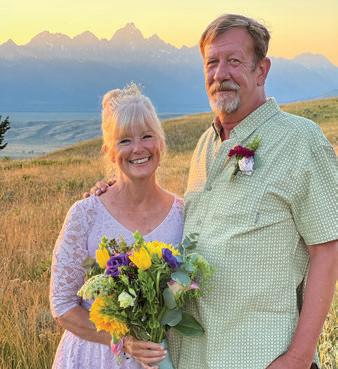
McGlinchey Stafford, PLLC is pleased to announce that member Rudy J. Cerone has been recognized in the 2022 edition of Chambers USA: America’s Leading Lawyers for Business. Rudy received a Band 2 designation for his work in bankruptcy/restructuring. // Alicia Connors embarked on an epic journey to the Peruvian Amazon in February. Volunteering with the non-profit Trees and Seeds in Woodstock, Vermont, she joined 13 high school students and 10 adults, partnering with local agronomists to help restore edible plants to increase food production for the indigenous peoples of the Amazon outside of Iquitos, Peru. // Larry Costello retired after 36 years at Textron and four years in the finance department of the Pine Street Inn. He is happily married with three children (one a BC grad) and one grandchild in North Dakota, who he enjoys visiting in the summer. // Gene Reineke is working on a master’s degree at the University of Chicago focusing on ethics and leadership, in addition to his current position as chairman of the public relations firm Hawthorne Strategy Group in Chicago. // David Brown completed his career change from wholesale flower distributor to Coldwell Banker realtor serving Boston’s North Shore. // Rob Migliaccio announces the birth of his first grandchild, Rory Joseph Fowler, who was born on August 20, 2021. Rory is the son of Emily Migliaccio ’11, and her husband, Andrew Fowler. // Jane Mullaney Glennan passed away at her home in Venice, Florida, on July 16, 2022. // Grace Ann Pisano Baresich launched a production company, Mermaids Soul Productions, dedicated to creative entertainment in film. She has several projects in development for feature films. Class correspondent: Peter J. Bagley // peter@peterbagley.com
1980
Besides continuing work as an actress and the co-founder and editor of insidewink.com with her business partner, Jean Trebek (wife of Alex
Trebek), Alison Martin is starting a podcast with Jean this fall. Alison’s husband, Dan Hagen, and their children, Em and Brady, will be behind the scenes helping with graphics and sound. Hope you will keep an eye out for it! // Mike Murphy and Julia Hagan greeted their first grandchild, Thomas Richard Baird, in July. Mike, a special education teacher and clinical social worker, anticipates retiring from the public school system after his upcoming 65th birthday. // COVID-19 put an end to David Dionne’s 34-plus-year career with American Express Global Business Travel. After a few months puttering around the house, he is now enjoying a semi-retirement job as a brewer’s assistant at Stark Brewing in Manchester, New Hampshire. // Mary E. Friel will be celebrating her Diamond Jubilee as a Sister of Notre Dame de Namur in 2023. She is a volunteer in the Three Sisters Garden, a 501(c)(3) organization and community farm in Ipswich, working to make local food accessible to all. Class correspondent: Michele Nadeem-Baker // michele.nadeem@gmail.com
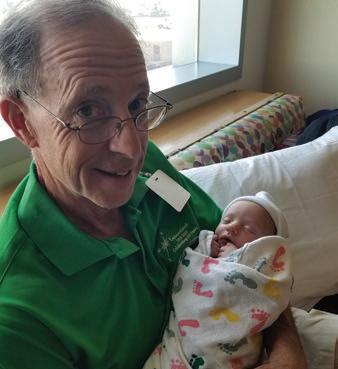
1981
Phyllis Bewick (formerly Stebbins) completed her training in the OrtonGillingham structured literacy program. She was inspired by having a dyslexic son who responded well to this approach. This will be a second career of sorts, a chance to impact reading skills and
To submit your note, visit bc.edu/classnotes or email classnotes@bc.edu.
Class Notes
54 bcm v fall 2022
COURTESY OF JULIE BUTLER ’78
COURTESY OF MICHAEL MURPHY ’80
inspire hope for students struggling with learning differences. // Neil Dineen is loving retirement. He works part-time as a driving instructor and school bus driver and enjoys traveling, camping, and skiing. // Mark Erba pivoted his profes sional endeavors to the Hampshire Regional YMCA in Northampton as director of development, following a 40-year business development career in the private sector. // Greg Bowerman, Peter Hoyt , John Graham, and Jim Reilly went on their annual fly fishing trip to Idaho and Montana in June 2022. // Trish Dunne O’Kane hosted Cathy Mallowes Mariner, Barb Foote Willwerth, Jylanne Smith Dunne, and Meg McGrory Kelleher. The ladies had a blast with golf, wineries, dinner, and lots of laughs and catching up! Meg and her husband, Pat, hosted the second event with Daryl Dimeola , John Lucke, Patty Bardwil, John Dudzik, JT Fucigna , and Julie Westerman Bostwick and her husband, Pete. George McGoldrick and his wife Mary were also able to join them for dinner. Class correspondent: Alison Mitchell McKee // classnotes@bc.edu
1982
Mark Perdigao and his wife, Lori, are thrilled to announce that their daughter, Julie Perdigao ’14, married Matthew Linquist ’15, son of Richard Linquist ’82 , at the Ashford Estate in Allentown, Pennsylvania, on September 18, 2021. It was a wonderful Boston College event with many alumni in attendance! // Carol Vadimsky published True Tales of Ghosts as co-author with Carolingian Press. Another alumna from the class is the source of one of the included tales of a mysterious encounter. // Elisa Speranza gave a talk on her novel, The Italian Prisoner, at the Adams Street Library in Dorchester. The well-attended community event included: Marie Richards, Grace Cotter Regan, Susan Tracy, M.E. Malone, Mary McAleer O’Brien, Monica Morrell ’83, and Jeanne Conley ’89, MEd ’96 // John “Foo” Feudo had his seventh book published recently by the Council for Advancement & Support of Education. John is the vice chancellor for university advancement at UMass Lowell, where he was also recently named interim vice chancellor for university relations. He teaches a class
Joanne Caruso ’82, JD’85, P’16, LP’25
A Double Eagle reflects on living the BC motto, “Ever to Excel”
Joanne Caruso didn’t set out to be the first woman president of the Undergraduate Government of Boston College. But when the candidate she’d campaigned for was disqualified just two weeks before the election, his team turned to her to carry their platform forward. Shut out of the debates and left off the ballot, they none theless mounted a successful write-in campaign and secured her place in BC history.
Now a top executive at Jacobs, a multinational professional services firm, Caruso says that what worked at BC is the same thing that’s propelled her career ever since: work hard, take risks, and use your success to serve others.
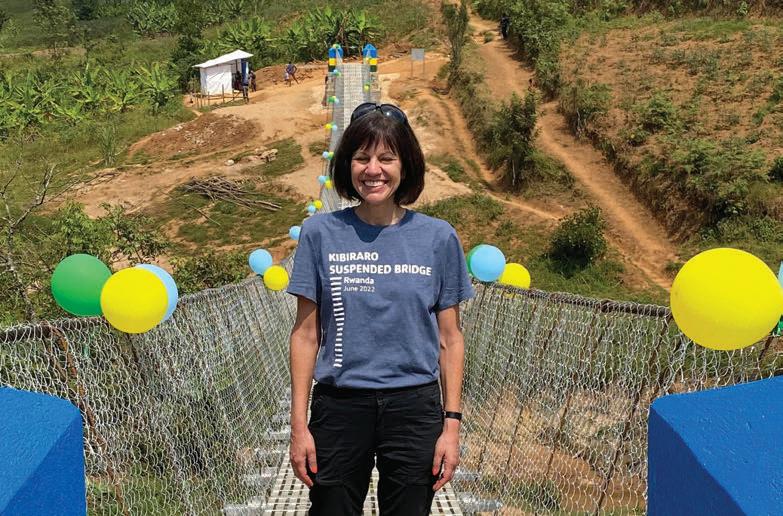
“I’ve always looked for challenges and for opportunities to work with great people who want to make a difference,” says Caruso. “That’s what I found at Boston College and what I’ve gravitated to ever since.”
As president, Caruso was a formidable voice for the student body, advocating for new diversity programs and student representation on the Board of Trustees. Along the way, she developed strong—even though occasionally contentious—relationships with University leaders, learning invaluable lessons in how to lead and to serve.
Her dedication to service has continued, both as an active BC volunteer and throughout her career. As an attorney, Caruso took on pro bono cases on behalf of homeless, disabled, and other marginalized people. Now the first woman executive vice president at Jacobs, she amplifies her impact by using her seat at the table to advance diversity and inclusion, humanitarian aid, and social justice initiatives. Most recently, she joined a team of Jacobs engineers and others to build a suspended bridge in southern Rwanda that provided much-needed access to clean water, schools, and clinics.
“BC was really a transformational part of my life. Not only the education, but also, and probably more significantly, the Jesuit values and the people I met there,” says Caruso.
“Whenever I think about BC, it’s ‘Ever to Excel’, ‘men and women for others.’ Those things are with me all the time.” Read more about Joanne Caruso’s journey at bc.edu/caruso
To submit your note, visit bc.edu/classnotes or email classnotes@bc.edu.
fall 2022 v bcm 55
Joanne Caruso on the suspended bridge she helped build in southern Rwanda.
in professional communications at the Manning School of Business. Class correspondent: Mary O’Brien // maryobrien14@comcast.net
1983
40th Reunion, October 2023
John Lakin resides in Southern California and operates a consulting business in the Laguna Beach area. // Carol Ann Goldberg-Aydin has retired and moved back to Massachusetts after living on the Upper East Side of Manhattan for 32 years. // Franz Garcia de Paredes lives in Southern California with his family and has a thriving financial advisory practice. He is an active member of the community (Rotary, Catholic Parish, Valley Industry Association) and enjoys the sunny SoCal weather. // Jeanne Hunter Zarrilli continued her Jesuit education and completed a master of arts in spirituality from Loyola University in Chicago in May 2022. She welcomed her first grandbaby at the end of June! // Kenneth Lakin is celebrating the 30th anniversary of Lakin Law Firm (Boston, Miami). // Martin Romanelli and Lynn DeRosa Romanelli ’84 celebrated the marriage of their son Jimmy Romanelli ’14 to Sarah Bender ’14 on a beautiful day overlooking the harbor in Huntington, Long Island. Attending the celebration were Dr. Brian Lussier, Jimmy Clinton, Kevin Bagnasco ’79, and 30 members of the Class of 2014. // Rear Admiral Robert Duncan, former judge advocate general of the U.S. Coast Guard, recently completed his elected term as president of the Judge Advocates Association. // The Class of ’83 crew from Mod 18A ( Donna Bennett Hall, Michele Cebron Diamond, Nancy Roach LeRoux, Karen Santaniello Edwards, and Sandie Visconte Powers) are so saddened by the death of their roommate and friend Chris Hanson Sokol. They met Chris freshman year on Hardy 1st floor and lived together for the next three years in New Dorm, Hillsides, and the Mods. Chris is part of all of their best BC memories, and they will never forget her. Their thoughts are with her parents, brothers, and daughter. // PJ Brooks, PhD, won the Sonia Skarlatos Public Service Award from the American Society of Gene & Cell Therapy. Dr. Brooks developed funding opportunities to support innovative approaches to
delivering genome editors to target cell types. He is interested in accelerating clinical trials in rare diseases by moving beyond “one disease at a time” approaches. // Gina Bough Sisti and her husband moved to Palm Beach, Florida. Gina is currently a broker associate for Brown Harris Stevens, Palm Beach and is licensed in New York and Florida. //
Anne Brennan Mason is the proud parent of Laura Mason ’21. Laura is continuing her nursing studies at Sacred Heart University in the doctorate nurse practitioner (DNP) program. Laura is also working as a registered nurse in Connecticut. Anna’s daughter, Julie, started the DNP program at Boston College this fall. Class correspondent: Cynthia J. Bocko // cindybocko@hotmail.com
1984
Elizabeth Cronin graduated from Boston College with a BA in speech communica tion. She continued her education at the Harvard University Graduate School of Education, receiving an EdM in June 1992, and earning a PsyD from William James College in August 2009. She recently published her first book, Mindfulness Journal for Mental Health // Terry Curtin is happy that his older daughter (Micaela) has graduated from Michigan State University and will embark on her advertising management/ media planning career in Chicago with MediaCom. His younger daughter (Chiara) is starting her freshman year at Hobart College. // Tom Egger retired from the Emergency Physicians Professional Association. // Michael Sellers has returned to Brookline and has a view of Gasson Tower from his apartment building after spending 30 years in New York in various jobs related to technology and marketing and the final six years as an artisanal bread baker. He is now working as marketing manager for Johnson String Instrument, the northeast’s largest supplier of rental stringed instruments for school music programs. Michael is in contact with Brian McCann and other 1984 grads, many of whom spent a formative year together as freshmen in Hardey Hall on the Newton Campus. // Last April, Nancy Wilkins-Diehr and her husband ran the Boston Marathon. Nancy and four of her BC roommates got together
on Cape Cod to catch up. Chris Maclean Garner hosted a terrific dinner and Gina Libro Marksteiner put everyone up in the new home she designed on a lake in Marlborough. Also in attendance were Laurel Holmes and Michelle Russo ’85
// Steve Rosenblum and husband, Eric Rudy, married in 2019 and live in Saratoga Springs, New York. They celebrated the marriage of their daugh ter, Laina, along with her two moms, with whom Steve co-parented for over 28 years. Steve is partially retired. He works part-time for the Steffens Scleroderma Foundation; volunteers for the Saratoga Book Festival and Saratoga Pride group; is on the executive board for Opera Saratoga; was a special education teacher in Natick; and had a 24-year career in IT and HR at John Hancock in Boston. He has also managed the Learning Conferences for Masie Center. Eric is the general manager of Home Made Theater in Saratoga Springs. Class correspondent: Carol A. McConnell // classnotes@bc.edu
1985
During a recent trip to Boston, Jennifer Jones, PMC’85, attended her high school reunion. She serves on the Pine Manor College alumnae board and had the chance to meet with classmates and fellow alumnae. Back in Los Angeles, Jennifer provides executive coaching and mentoring for women in small businesses. // Robin Corey has been a realtor with Compass for the past five years in the beautiful San Francisco Bay Area. She has two boys who have finished their freshman year in college, but sadly no Eagles. If any of you need real estate help in California or anywhere else in the US, she’d love to hear from you. If she can’t help you herself, she can connect you with someone awesome in your neck of the woods from her national network of business partners. // John Hanlon and his wife, Janet, have been busy over the past few years coming back to the BC campus. Out of their four children, their two daughters chose Boston College. Gabrielle graduated from CSOM in 2017. Kendall ’23 is entering her senior year and is captain of the BC field hockey team. // Scott Harrington passed away. Scott was captain of the BC 1985 football team and was a key contributor
To submit your note, visit bc.edu/classnotes or email classnotes@bc.edu.
Class Notes
56 bcm v fall 2022
to its success, culminating in the win at the Cotton Bowl. Scott was an active BC alum. Scott met his wife Kathy Schiliro ’87 at BC and asked her to marry him before her senior year even started. They were married two months after her graduation in 1987. Scott leaves behind his wife Kathy and sons John (Jack) and Scott Jr (Scooter). // Gail Schrimmer, a clinical psychologist, published “Group Therapy En Plein Air: Promoting Agile Resilience Through Ecotherapy” in the NJ Psychologist (Spring 2021). In August, she was invited by the American Psychological Association to present her paper at their 2022 national convention. She continues to practice in Chatham, New Jersey, performing psychotherapy, evaluations, and supervision. Class correspondent: Barbara Ward Wilson // bww415@gmail.com
1986
Leigh Ann Steinbrink Yuen lives on Martha’s Vineyard, where she raised her family with her husband, Richie. Leigh Ann is the founder and director of Garden Gate Child Development Center, a non-profit school that recently formed a partnership with Featherstone Center for the Arts in Oak Bluffs. // Eileen Neas O’Connor moved to Colorado last October to be near the grandkids. // Fred Damon just finished his 31st year of teaching mathematics and coaching football and basketball at Rockland High School. He was the part-time dean of students but will start full-time next year. He has been busy with his five children and five grandsons. Class correspondent: Leenie Kelley // leeniekelley@hotmail.com
1987
Classmates of JR Beretta , who passed away in 2020, have recently established the JR Beretta Scholarship Fund in his memory. The fund is growing fast, with nearly $250,000 in charitable donations that will provide financial aid to BC students. // Martha Cohen Stone retired after nearly 18 years as the executive director of Cross Roads House, a homeless shelter in Portsmouth, New Hampshire. Martha and her husband Eric have two children living in the Boston area. // Andres Hurwitz has been living in LA for 32 years but gets back
to Boston regularly. His father, Irving Hurwitz, who was on the BC faculty (SOE) for many years, passed away in 2020. Andres is still practicing law and trying to travel as much as possible while he still has the energy. He is starting to think about retirement. // Frank Sarra attended the BC–University of North Florida baseball game in May during spring break. His oldest child, Ashley, got married on June 12, so regrettably Frank had to pass on the 35th Reunion. Work took him to Newport, Rhode Island, in June and he spent the Fourth of July on the Cape. // In recognition of her body of work, Elizabeth Burgess Dowdell, PhD, RN, FAAN, professor and coordinator undergraduate research at Villanova University, received the Research Award from the Nightingale Awards of Pennsylvania. She is a national and international expert in child internet safety, and is a pioneering nurse scientist identifying the interrelationships among various forms of cyber-aggression using technology, including cyber-bullying and sexting, and has studied sleep texting in children and adolescents. // Robert Sarazen received a master of science degree from Columbia University in occupational therapy in 1996. He has been working as a pediatric occupational therapist in New York City for most of the last 27 years. // Brian Cardoza was recently promoted to lead claims trial counsel for Southern California Edison Company. He has also been invited by the California Attorney General’s Office to speak at the annual Yosemite Environmental Conference on the topic of wildland fire litigation. // Michael Hickey, MDiv’86, is publishing a new book, Holy Silence, with the Hamilton Books division of Rowman & Littlefield..
// Peter Roberts recently contributed a chapter to the latest edition of the Business Bankruptcy Practice Handbook, an annual publication by the Illinois Institute of Continuing Education.
1988
35th Reunion, October 2023
Ivan Brown ’84, PhD’88, has published
Learning to Sail: Life-Changing Encounters with Strangers, available on Amazon, under the pen name Lukas Johnson.
Learning to Sail shares the personal story of learning to live—the author’s struggle
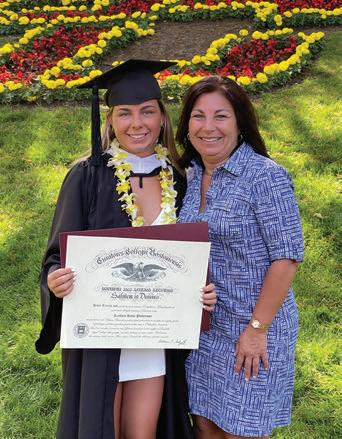
To submit your note, visit bc.edu/classnotes or email classnotes@bc.edu.
to become a better person—a transfor mative process that started when a bully nearly caused him to drown while taking sailing lessons at age 11. Johnson eventually learns to sail 28 years later, but only with the gracious help of strangers. // Sherman Leland caddied at the American Century Championship in Lake Tahoe this summer. It was a fantastic “made for TV” celebrity event! Sherman had former Red Sox player Shane Victorino in his group one day. The next day, Kathryn Tappen joined the group. // Jean Crescenzi Patterson’s daughter Kaitlyn Rose Patterson ’22 graduated from the Morrissey College of Arts and Sciences with a bachelor of arts degree in economics and minors in marketing and philosophy. After a family trip to Europe with fellow Eagles mom; grandmother Linda Crescenzi ’64; aunt Marianne Balfour ’92; and sister Caroline ’25. Kaitlyn will begin working at BCG in Boston as a knowledge analyst-digital marketing. Class correspondent: Rob Murray // murrman@aol.com
1989
Mark Berg was hired in May 2022 by the Walker Art Center in Minneapolis as donor research and management associate. Class correspondent: Andrea McGrath // andrea.e.mcgrath@gmail.com
fall 2022 v bcm 57
COURTESY OF JEAN CRESCENZI PATTERSON ’88
1990
Maura Lynch will be moving to Khartoum, Sudan, to be the chief of staff in the United Nations Transition Assistance Mission (UNITAMS). // Friends from freshman year on Cushing Second, Steve Dolce, Sean Sheehan, Jim Petrie, Matt Murphy, John Ventola , and Jay Rooney took a trip out to Snowbird in Utah to enjoy some spring skiing for a week. // Kara Corso Nelson has taken a new position in the Office of Student Life at Trinity College. Kara lives in Glastonbury, Connecticut, with her husband Scott and their sons. // Missy Campbell Reid and her husband, Scott, have officially become empty nesters, with their youngest, Emily, headed off to the Isenberg School of Management at UMass Amherst. Missy is headed into her 22nd year of teaching, which includes being a lead teacher and mentor for new teachers. // After 28 years in Phoenix, Stephanie Parkinson Briguglio is embarking on a new adventure, returning to Boston as an empty nester with three kids off on their own. She is looking forward to experiencing city life for the first time in Back Bay. Fellow Eagles, please reach out, as connections are welcomed and so very important! Class correspondent: Missy Campbell Reid // missybc90@comcast.net
1991
Karen O’Malley accepted the Reproductive Rights Champion Award from her client Reproductive Equity Now on behalf of her law firm, Goulston & Storrs, in recognition of all of the pro bono work that they do to support women’s autonomy and equality and access to abortion care. It was a particu lar honor to have had the opportunity to speak alongside Mayor Michelle Wu and Senator Maggie Hassan. // Elaine (Lockhart) Antonellis and Michael Antonellis live in Michael’s hometown, Watertown, and just celebrated 27 years of marriage. Michael is currently the vice president of marketing and commu nications for the Myasthenia Gravis Foundation of America. // Donna Crilly, MTS’91, has been appointed to the board of directors of the Xavier Society for the Blind. Donna is senior academic editor at Paulist Press, where she has worked in a
variety of editorial positions since 2009. Passionate about publishing, she serves as secretary on the Association of Catholic Publishers’ board of directors. Class correspondent: Peggy Morin Bruno // pegmb@comcast.net
1992
Laura Toner, MD, finished her 10th medical mission trip with Waves of Health, where she is president of the board of directors. // After concluding her 26-year career in college campus ministry, Christine Marie Eberle shifted to freelance writing, public speaking, and retreat facilitation. She is the author of two books of daily meditations based on true stories and grounded in Ignatian spirituality: Finding God in Ordinary Time (Green Writers Press, 2019) and Finding God Abiding (Woodhall Press, 2022). // Steve Courtiss is currently living in Irvine, California, with his wife Beth and two children, John (15) and Katherine ’25 (19). It has been a joy to be back on campus multiple times this past year to visit, and Steve is looking forward to many more over the next three years! //
Cat Del Buono is heading to Naples, Italy, on a Fulbright! She will conduct art-based research at the University of Naples Federico II focusing on the uptick of domestic violence during the COVID19 lockdowns. Her project will consist of filmed interviews with domestic violence survivors and a video installation and
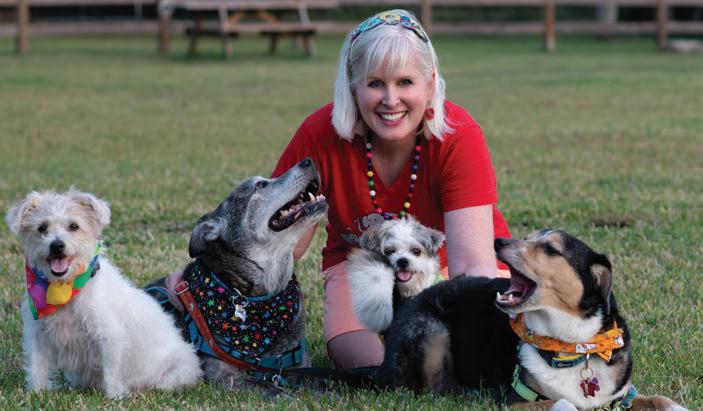
panel discussion that will be presented to the community in Naples this fall. // Brian and Melissa Fournier celebrated their 20th wedding anniversary. Brian’s law firm also celebrated its 15th year in business, but the most momentous milestone involves their oldest son, Christopher, who is off to college at George Washington University. Class correspondent: Katie Boulos Gildea // kbgildea@yahoo.com
1993
30th Reunion, October 2023
Christopher Kubala ’93, MBA’00, is relocating from Charlotte to San Jose, California, to begin work as a space manager for Google’s Bay Area real estate portfolio, managing 220+ buildings in seven cities and serving more than 50,000 employees. // Amy D. Gagliardi has received the Connecticut Dental Health Partnership’s Oral Health Hero award for exemplary service to families. Amy is married to Peter Gagliardi ’72 and they spend their time between their homes in Middletown, Connecticut, and Celebration, Florida. They have recently welcomed their fifth grandchild. // Matt and Tracy (Monaco) Lawlor put together a meetup last year in Falmouth at the end of July to celebrate 50. Many laughs, old memories, and new ones were shared by: Laura Beck, Kristin (O’Connor) Golden, Tiffany (Juliani)
Class Notes
To submit your note, visit
bc.edu/classnotes
or email classnotes@bc.edu.
58 bcm v fall 2022
COURTESY OF SHANNON MCDEVITT SPRING ’94
Zides, Beth McBride, Lisa (Ferrari) Dunn, Jennie (DePeters) Buckley, Christine Fahey, Kathleen Haley, Laurie (Brown) LaRusso, Ali Gianinno, Laura Bete, Jeff Teeven (and kids), Dan Walsh, Mike and Tina Greene, Mike and Sue Pouliot, Maz Yacoub, Doug Schobel, and Tom (Rusty) Thein Class correspondent: Laura Beck ‘93 // laurabeckcahoon@gmail.com
1994
Art Swift was recently appointed by Mayor Muriel Bowser of Washington, D.C., as chief communications officer for the Department of Insurance, Securities, and Banking. Swift leads all communica tions for the agency, in addition to serving as a spokesman, overseeing the budget, and managing a team. // Shannon McDevitt Spring lives in Sarasota, Florida, in a colorful cottage near the water with her rescue mutts. She created Just Humor Me™️ Laughter & Learning for the Fun Inspired & Fun Impaired as a professional humorist, leading humor retreats and team building since 2000. She is also the founder of Mayor Puppypants Unleashed. She is writing her first book, Open Mic. For the Animal Kingdom: It’s a Funny & Furry Life! Hello to Bobby Gilman ’92 if he sees this. // Bob Cameron, MA’94, has published a second collection of original tunes for bagpipes and other instruments, “From Other Shores, Vol. 2.” Bob is a professional musician and bagpiper in the Boston area. // In June, Ann Marie OKeeffe completed 31 years in the field of ELL programming and instruction. Class correspondent: Nancy E. Drane // nancydrane@aol.com
1995
Deborah McCarter is on sabbatical from her professor job at Saint Anselm College and is living in Atlanta for the academic year ’22–’23 and conducting nursing research on interventions for postpartum depression. // Cheryl (Pederson)
Maguire is married and the mother of twins and a daughter. She is a freelance journalist based in Massachusetts. Her writing has been published in The New York Times, The Washington Post, The Boston Globe, National Geographic, AARP, Healthline, Parents Magazine, HuffPost, Discover Magazine, and many other
Alex ’95, P’25 and Chris Noon ’95, P’25
The Noons’ PULSE journey comes full circle as their daughter studies under Chris’s old professor
When Chris Noon met the woman he’d marry, Alexandra, on the 51 bus to the first day at their PULSE placement, he wasn’t in the mood for chatting. Clunky ’90s headphones clamped to his ears, hood pulled over his head, he was savoring a reprieve from the chatter of his seven roommates.
That is, before Alex pulled his headphones off and told Chris he was being rude. Or, as Alex remembers it, “I said, ‘we’re riding this bus together every Thursday all year, you can’t just go silent like that.’”
Chris took the hint, and over the course of the year they became close friends while mentoring disadvantaged youth. Drawn to the PULSE service learning program by the way it connected their philosophy and theology lessons to the gritty realities of poverty and social injustice, they were profoundly affected by their experience. “It really brought to life what we studied in the classroom,” says Chris, who continued mentoring his “little brother” and kept in touch with his PULSE professor, Fr. Jim Weiss, for the rest of his time at Boston College.
After graduating, they moved to Alex’s hometown of Chicago and mar ried in their mid-’20s, deciding soon after to start a real estate construction business informed by their experiences in PULSE. With a deep emphasis on community involvement and local philanthropy, they’ve volunteered at and fundraised for much-needed after-school programs, women’s crisis centers, and more. Giving back, serving those in need, and contributing to the greater good became central to how Alex and Chris operate their business, live in the community, and raise their three children.
When Lauren Noon ’25 enrolled at BC, her parents’ countless PULSE stories were top of mind. She ended up in Fr. Jim’s PULSE section, and the rest is history. “She had a fantastic service experience and really loved learning from Fr. Jim the same way I did,” Chris says.
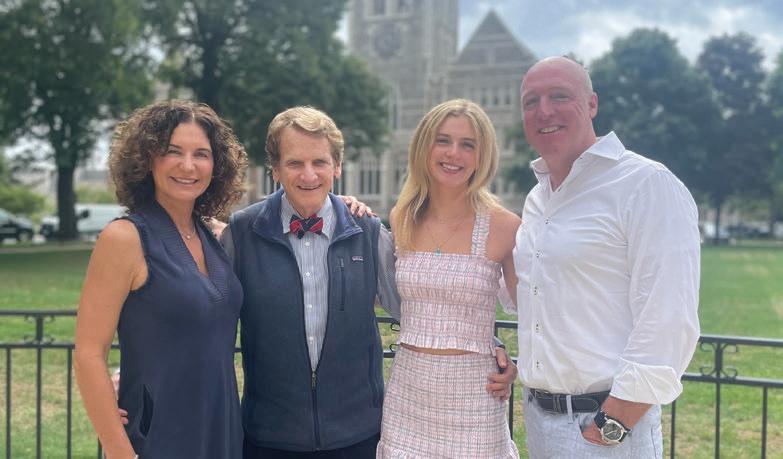
It’s deeply edifying for Fr. Jim to witness the intergenerational nature of the program and its tendency to generate long-term relationships with students. “The great reward of teaching PULSE is seeing the impact it makes on students,” he says. “I don’t just know it—I see it.”
To submit your note, visit bc.edu/classnotes or email classnotes@bc.edu.
fall 2022 v bcm 59
Students either come into the course as generous people, or they become generous by taking PULSE.”
—Fr. Jim Weiss, PULSE professor for 30+ years
“
Alex Noon, Fr. Jim Weiss, Lauren Noon, and Chris Noon during BC move-in weekend, August 2022
publications. // Lauren Foley Preston and her husband Bill moved from Maryland to New Hampshire. She began a new career as vice president of customer care for Liberty Utilities. // Melissa Celata Cacciapaglia has been busy with her high-school-aged kids, Hannah and Matt. Hannah graduated in June and will be a freshman at the University of Wisconsin-Madison in the fall studying political science. Matt is a rising senior and has BC as his top choice of colleges to attend. Melissa will be starting her 9th year as a math coach at Framingham Public Schools in Massachusetts. // Matt Ducsik serves as the vice president of cardiovascular for the Providence health system, covering seven states and over five million unique patients. // Roshan Rajkumar was voted in as the managing partner of the Minneapolis office of Bowman and Brooke LLP. On June 1, 2022, he celebrated 21 years of practice with his firm. And he was recently named board president for a youth empowerment nonprofit, Encircled. Class correspondent: Kevin McKeon // kmckeon@gmail.com
1996
Marc Lombardi has joined the law firm of Shipman & Goodwin as the leader of its privacy, cybersecurity, and data innova tion practice group. Most recently, Lombardi served as deputy general counsel at Yale New Haven Health System. // Julia Taylor started kindergarten the same year that Alice Taylor, JD’96,
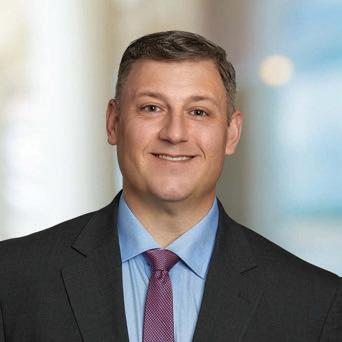
started at BC Law, and she spent some quality time with the kids of other older law students in the basement of what is now the “new” library. Last month, she married Sean Dandrea at First Parish UU Church in Waltham. // Dawn Marie O’Brien was excited to serve as co-chair of the 25th Reunion committee and to join classmates for the much-anticipated in-person event. She is proud to share that her oldest daughter, Faith, is a member of the BC class of 2026, coming to campus this fall as a theater major also pursuing a minor in dance. // Ed Moffitt, MBA’96, is currently working as first vice president-investment officer with Wells Fargo Advisors in Beverly. He is looking to connect with fellow MBA grads from his year that include: Mike Bakas, MBA’96; Chris Tomasini, MBA’98; Darren Wizst, MBA’96; Sue Foley Layne, MBA’96; and Cris Leonard and hopes they can plan a get-together soon! // Stephen Healey joined Cambridge College to serve as provost and vice president for academic affairs. He had served previously as provost and then interim president at the University of Bridgeport in Connecticut, where he also was a tenured faculty member. // Nampeera Lugira started at the Academy of Pacific Rim Public Charter School as the high school principal. She is dedicated to providing high-quality educational experiences to students in the City of Boston.
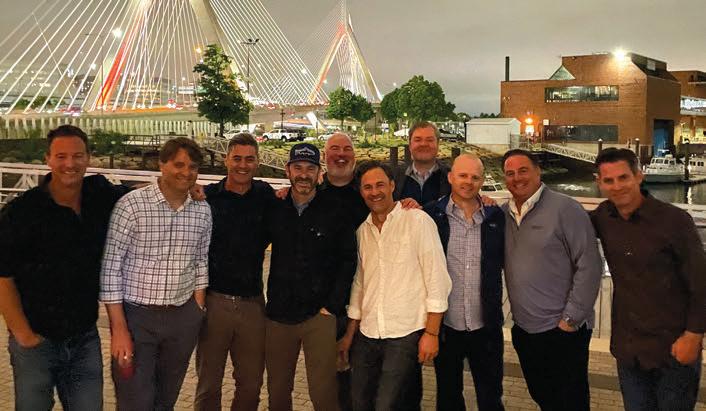
1997
Rich Corner was promoted to brigadier general in the army and assumed division command of the 85th Army Reserve Support Command located in Arlington Heights, Illinois. Rich commands a unit of over 4,100 soldiers who are in support of army mobilization operations. In atten dance were Rich’s wife, Nicolle, their four children, parents, sister, and in-laws. // Dr. Cassandra Lewis, MA’97, was appointed chancellor of the College of Information and Cyberspace, National Defense University, the premier joint professional military education institution for military and national security leaders. // Kim (Santillo) Meninger is proud to share her recent TEDx talk: “How to Bring Your Diverse Voice to the Workplace,” aimed at empowering professionals to overcome impostor syndrome and embrace their unique value. // Roommates from Mods 5A and 5B put their 25+ years of friendship to work. Matt Wolfe, Michael Burke, Bobby Facundus, Sean Lyons, and Kevin Murphy, launched the 5A5B Foundation to provide underprivileged students the opportunity to receive a quality Jesuit education. They held a kickoff party in Boston’s West End during the June reunion weekend and raised over $15,000. Class correspondent: Margo Rivera Gillespie // margogillespie@gmail.com
Class Notes
To
submit your
note,
visit bc.edu/classnotes or email classnotes@bc.edu.60 bcm v fall 2022
COURTESY OF MARC LOMBARDI ’96
COURTESY OF BOBBY FACUNDUS ’97
1998
25th Reunion, June 2023
Marissa Lopez Bisbe has enjoyed a rewarding medical career as director of obstetric anesthesia at Steward Holy Family Hospital in Methuen for the past 12 years. She married Jose Bisbe, who she met at Genzyme Co., in 2002. They are celebrating their 20th wedding anniversary this summer in Chile, where they got engaged. They have two beautiful daughters, 12 and 15, a Bernedoodle, a hedgehog, and a fish. //
After beginning his career working in corporate law for Am Law 100 law firms, Jason Campbell founded Charlestown Law Group in 2018. Charlestown Law Group is a general practice law firm located in the landmark Schrafft’s Building in Sullivan Square. Substantial discounts are offered for BC students and alumni. // Jessica (Passaretti) Kemp has started her own special education consulting and advocacy business, Key Special Education Group. She and her business partner are excited to be helping parents and families navigate the special education process. She lives with her husband Karl Kemp and their three children in Medfield. // After 11 years working with Xylem, the last nine based in Switzerland, Lou Corapi has taken a new position as CFO for Gulf Cryo and is moving to Dubai with his wife and youngest son. // Max Engel is the co-author of a new book, On the Eighth Day: A Catholic Theology of Sport, published by Cascade Press, which explores the intersection of Catholic theology, religious faith, and sports. Max is an associate professor in the education and theology departments at Creighton University. Class correspondent: Mistie P. Lucht // hohudson@yahoo.com
1999
Danielle (Walther) Rangel passed away in August 2020 in Pasadena, California, after a long-term battle with congestive obstructive pulmonary disease. She is survived by her parents, Robin Jane Walther and James Remy Walther, her step-grandmother, and numerous aunts, uncles, and cousins. After graduating, she worked as a preschool teacher and studied to become a social worker. She is remembered by her parents, relatives,
To
and friends as a sweet, loving, and caring daughter, granddaughter, cousin, and friend. // Amelia Dunlop, MDiv’98, chief experience officer at Deloitte Digital, was recently featured in an interview for the CJBS Perspectives video series. Amelia talks about her recently published book Elevating the Human Experience: Three Paths to Love and Worth at Work Class correspondents: Matt Colleran // colleran.matt@gmail.com; Emily Wildfire // ewildfire@hotmail.com
2000
Melanie (Rooth) Gross has been appointed as a Distinguished Fellow of Casino and iGaming by UNLV’s International Center for Gaming Regulation. Additionally, she is a recent recipient of iGaming Business’s “10 Most Influential Women in iGaming,” honor, which recognizes female leadership worldwide. // Sean Byrne published his first work of literary fiction, The Psychopomps, by Loyola University Press in April 2022. He wrote it during his summers off as an English teacher in the Baltimore area. // Afrika Afeni Mills, an alumna of the Lynch School of Education, published Open Windows, Open Minds: Developing Antiracist, Pro-Human Students. The book helps educators to equip themselves and students to grapple with racial identity and crucial questions about race and to use literacy instruction to provide more windows to racial awareness, antiracist thinking, and pro-human action in the classroom. // Jim W. Murray was elected by the board of trustees to serve as vice president of Leadership Ohio, a non-profit organization that cultivates experiences that elevate leaders’ knowledge, perspec tive, and connections from a community to a state-wide level. Jim was also recently appointed to serve as an assistant governor for Rotary International District 6600. Jim and Anna Marie live in Huron, Ohio, with their three children. // Louis Lehot, JD’00 co-led a team of 15 lawyers that combined with Foley & Lardner LLP in Palo Alto and San Francisco to relaunch that firm’s corporate presence in northern California. Lehot was the founder of boutique startup law firm L2 Counsel, and continues to host a popular podcast series on YouTube called “Ask A Silicon Valley Lawyer.” Class correspondent: Kate Pescatore // katepescatore@hotmail.com
or email classnotes@bc.edu.
2001
Congratulations to Sandi (Birkeland) Kanne and Jess Pignataro ’99 for winning their Board of Education elections in the Bayport-Blue Point School District (Long Island, New York). Sandi and Jess are following in the footsteps of recent BOE Trustee Daniene Byrne ’89, showing what it means to be Eagles For Others. // Tom Griffin published his first book, a memoir of his 35 years in parish ministry, which began as a very private journal about clergy abuse when he was 11 years old. // Charles Reilly has had a pint of beer in all 32 counties of home and all 15 towns of the Cape. He still sells hotdogs at Fenway. // Dana Keane and her partner, Brad Morrison, welcomed a son, Declan William Keane Morrison, on March 1, 2022. Declan joins older half-brother, Parker; doggy sister, Tiger; and cat siblings, Finnegan and Niamh. Dana and her family live in Sarasota, Florida. She currently practices family law with Keane & Keane and served as Sarasota County Bar president for the 2021–22 Bar year. Class correspondent: Sandi Birkeland Kanne // bc01classnotes@gmail.com
2002
Rick Klein married his husband, Andrew, under the chuppah in front of friends and family. Winter weather at Logan snarled some travel plans, but classmate Meagan Kenny Moll flew in from Texas and
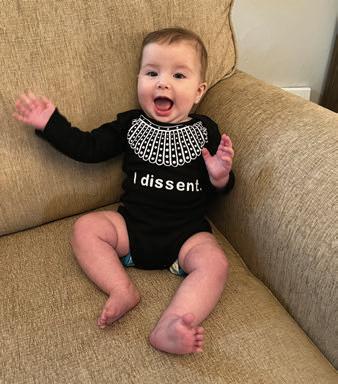
submit your note, visit bc.edu/classnotes
fall 2022 v bcm 61
COURTESY OF LISA (KAHLE) KAHLMAN ’02
represented the Eagles at the event in Ft. Lauderdale. They spent their honeymoon in Bora Bora. // Lisa (Kahle) Kahlman and her wife, Jessica, welcomed their first daughter, Allison Bader Kahlman, on December 21, 2021. Allison is named after Allison (Cahill) Burke, who passed away in 2015, as well as the former Supreme Court Justice Ruth Bader Ginsburg. // Urban Hudlin graduated from the Institute for Religious Education and Pastoral Ministry. He was a psycho analytic psychotherapist working at St. Catherine Counseling Center in Dublin. Urban has returned to his native Trinidad, where he continues to practice in the psychoanalytic field. He is the principal consultant at Veritas Consultancy and isinterested in contextuality and organizational development in this time of uncertainty. // Bro. Paul D. Crawford, MSW’02 , was elected president of the board of directors of the Franciscan Action Network. // Keri Jean Sullivan Cote ’02, MS’07, and Matthew Cote welcomed the birth of their fifth child, Allyson Jean Cote, on November 22, 2021. She was named after the late Allison (Cahill) Burke Class correspondent: Suzanne Harte // suzanneharte@yahoo.com
2003
20th Reunion, October 2023

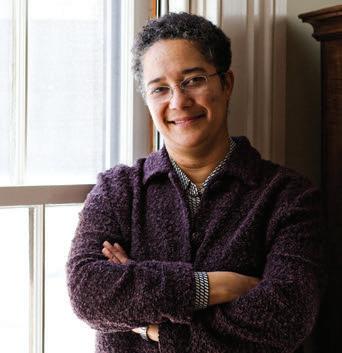
Rob Cristiano produced a film called Down with the King that was released by
Sony’s Stage 6 Films division on digital and video on demand on June 28. It premiered at ACid Cannes in 2021 and won the top prize at the prestigious Deauville Film Festival the same year. It had its US premiere at the Austin Film Festival and has screened in more than 25 festivals around the world. // Jennifer DiFranco has been selected as director of development at Worcester Academy, one of the country’s top independent schools. Previously, she was the longtime alumni and parent giving director at the College of the Holy Cross. She held prior roles in advancement at Beth Israel Deaconess Medical Center and at Boston College, where she was associate director of the Boston College Fund. // Gary Tripmacher and his wife, Julie, welcomed their son William George Tripmacher on November 9, 2021. All are doing well. They reside in Washington, D.C. // Curran Gaughan joined the Ignatian Volunteer Corps (IVC) as director of the program’s San Diego region. // Sara Burnett is thrilled to release her debut poetry collection, Seed Celestial. Winner of the 2021 Autumn House Press Poetry Prize, the timely, relatable book is about living and raising children in uncertain times while fostering the human capacity for hope and change. // Tricia Yaw Magee and John Magee ’01 welcomed Kieran Robert Magee on December 10, 2021. Kieran joins big brother Jack, who is wild about the newest addition to the family!
// Heather Liermann and her husband, Jakob, welcomed daughter Clara Jane Liermann on September 30, 2021, in Frankfurt, Germany. // James Coogan shared that his law firm changed its name to Coogan Gallagher. Over the years, he has been a personal injury attorney and trial lawyer. He has tried cases before civil juries in Cook County, Will County, and McHenry County in Illinois, representing injured people and families in wrongful death claims. // Rubenstein D24 and D25 ended their three-year hiatus from annual reunions with a sublime time in Minnesota.
Stephanie Rust and Emily Byrne, both residents of St. Paul, hosted Katherine DellaPorta , Margaux Pena , Torry Katsiroubas, Keri Badach, Corinne Badach, Natalie Van Kleef, Jennifer Saville, and Bethany Rossi ( Kate Sorgi, you were missed!). This group of roommates is now raising a total of 22 future Eagles! // Ravi Ramnarain, CPA and his wife, Devyn Ramnarain, recently celebrated their five-year wedding anniversary. The Naples, Florida-based couple also recently celebrated the seven-year anniversary of their CPA firm, Ravi Ramnarain, CPA, LLC.
2004
Henry Hagopian, MS’04, MBA’07, was promoted to senior vice president, finance and treasurer at Organogenesis Holdings, Inc. in Canton. He is proud to report that his daughter, Margaret ’21, has followed in his footsteps. Margaret
Class Notes To submit your note, visit bc.edu/classnotes or email classnotes@bc.edu.62 bcm v fall 2022
COURTESY OF DOLITA CATHCART ’04
COURTESY OF RICK KLEIN ’02
graduated magna cum laude from the Carroll School with a BS in finance and data analytics. // Robert Orthman was recently named deputy general counsel for the Commonwealth of Massachusetts Department of Early Education and Care (EEC). He comes to EEC after over eight years as an attorney with the Boston Water and Sewer Commission. Rob lives in Roslindale. // Dolita Cathcart was hired to teach one class at Wheaton College during her second year in her doctoral program in American history. This year, she is taking a leave of absence from Wheaton to work as the chief program officer for the College for Social Innovation in Boston, running their Semester in the City program. // After working for 17 years in federal affairs for Trust for Public Land in Washington, D.C, Daniel Chapin accepted a new job with the Compatible Lands Foundation. He is now the director of military partnerships for the organiza tion. At TPL, Dan worked with Congress and federal agencies to secure funding for land conservation projects nationwide. // Lauren Spirig joined The Markup, a tech-focused digital newsroom, as the inaugural director of development. She is charged with building and executing strategies for sustainable fundraising. Her expertise in major gifts and development strategy is grounded in collaborative and mission-driven work.
Class correspondent: Allie Weiskopf // allieweiskopf@gmail.com
2005
Jose Lopez was appointed by Boston Mayor Michelle Wu to serve as the deputy director of the Office of Labor Relations. They continue to live in Roxbury where they are neighbors to three other Eagles. // Jane (Balas) Bortz and husband, Andrew, welcomed their second child, Ethan Michael, on May 27, 2022. Older brother William is settling into his new role nicely and is a big help with the baby. Their yellow lab, Ellie, has spent more of her time with William, who doesn’t cry as much. The family resides outside of Philadelphia.
Class correspondents: Joe Bowden // joe.bowden@gmail.com; Justin Barrasso // jbarrasso@gmail.com
2006
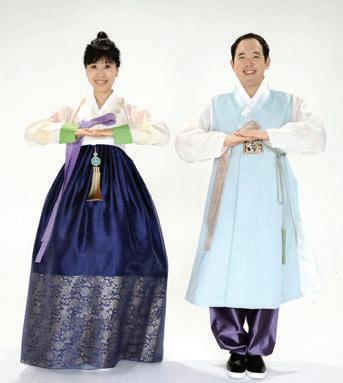
Cristina Velocci and Jesse Hochkeppel ’05 welcomed their second child, Emily Lucia Hochkeppel, on November 28, 2021. She joins big brother Ryan, maltipoo Remy, and newly adopted bichpoo Mazie in the “chaos crew” that keeps mom and dad on their toes. // Dave Levy and Liz Levy ’05 welcomed their second son, Theodore “Teddy” David, into their family on June 29, 2022. He joins his older brother, Charlie, at their home just up Comm. Ave. in Newton, and he’s looking forward to superfandom. // Bora Song McCutcheon and her husband Seth Patrick McCutcheon welcomed baby boy Charlie Daehan McCutcheon on Earth Day: April 22, 2022. // Kevin Galligan (son of Marty Galligan ’77 and Nancy (Stevens) Galligan ’78) and Danielle Naugler were married in Newport, Rhode Island, on December 31, 2021. Anthony Nunziata and Lacey Upton sang, Marianne (Tierney) Fitzgerald said grace, and Meg (Fahy) Galligan ’78 did a reading.
“KG” & “DNaugs” were supported in their nuptials by BC grad bridal party members Casey Galligan ’08, Mary (Naugler) McDonough ’14, Ryan Naugler ’10, Will Nunziata , Jen (Marsh) Tate, Dr. Michelle (Bradley) Gorgone, Bill Galligan ’01, Jonathan McKenna , Chris Fell, Reed Hatch, Sam Browne ’07, Kyle Kelly, and honorary Eagles Bob Vaillancourt and Chris Brethel. // Laura Montgomery Malone works as an
assistant district attorney in Suffolk County and she and her husband had their second child in June. His big sister is very proud of her new role. // Shen Chen has recently joined the board of trustees at Career Ready alongside her professional career in corporate and investment banking at Bank of America in London. Class correspondent: Cristina Conciatori // cristina.conciatori@gmail.com
2007
Kevin Sheridan became assistant principal at Saint Ignatius High School. // Peter Fehn has been promoted to SVP, head of data and analytics (NYC/ATL region) at Digitas, a Publicis agency. // Ariane Lenis Salmon and her husband, Bill, welcomed their second daughter to their family, Rose Charlotte Salmon. They and her loving older sister, Maddy, are overjoyed! // After their original wedding plans were canceled in 2020 due to the pandemic, Sam Kim and Soyoung Joo got married at City Hall in New York City on Tuesday, August 9, 2022. // Peter Cavanaugh; Lou Manzo ’06, MA,’07; Brendan Downes; Alexander Neckles; Peter Boogaard; Christopher Leuchten; Patrick Downes ’05; and some others competed in the annual Creekside Cup this year. Lloyd Liu was unable to defend his title due to COVID-19 symptoms. Chris Leuchten, against all odds, won the Cup this year. Class correspondent: Lauren Faherty Bagnell // lauren.faherty@gmail.com
2008
15th Reunion, October 2023 Dave and Ellen (Westley) Brace welcomed their third child, Aiden Mark Brace, on June 14, 2022. Aiden joins other future Eagles recently welcomed by Kevin Foote (daughter Avery) and Bryan Irace (daughter Winter). Dave, Kevin, and Bryan all lived in Mod 20 their senior year and look forward to sharing (some) of those memories with their new additions. // Christine (Friedrich) and Daniel Grimm welcomed Peter Isaiah Ardens to the world on May 29, 2022. // Jeffrey Trant, MSW’08 earned a PhD in social work from the University at Albany, State University of New York. Dr. Trant is the director of the Office of Safe Environment and Victim
To submit your note, visit bc.edu/classnotes or email classnotes@bc.edu. fall 2022 v bcm 63
COURTESY OF SAM KIM ’07
Assistance for the Roman Catholic Diocese of Springfield. // Sadie Holdridge and her husband, Emmett Maguire, welcomed a baby girl, Maisie, on June 7, 2021. // Brendan and Kaitlin Lang proudly welcomed their third boy, Chase Sullivan Lang last October. Big brothers Ben (5) and Adam (3) are so excited! // Susan O’Neil has retired from the position of deputy superintendent in the Worcester Public Schools after 42 years as an educator in the district. // Abigail Hasebroock ’08, MAT’10, married Daniel Mousel on April 22, 2022, in Omaha, Nebraska. The wedding was attended by several alumni, including Kelsey Johnson Jeannes, Kristin Whalley, Allison Anderson Cooper ’07, Lia Krautmanis ’07, Dorota Niemcewzska Larkin ’07, Vanessa Careiro, Julia Walsh Frances, Mary Taber, Beth Auffenberg Hasebroock ’09, David Hasebroock ’10, Andrew Hasebroock ’12 , and Ashley Hasebroock ’15 // Mark Sirota is entering his eighth season with the Jacksonville Jaguars, having served as the chief financial officer since 2020. // Tim and Catherine (Clark) Johnson welcomed their second child, Grace Josephine, on October 7, 2021. She joins proud big brother Patrick (3). Class correspondent: Maura Tierney Murphy // mauraktierney@gmail.com

2009
Kristen and Evan Henderson welcomed their third child this year. Based in
Madison, Wisconsin, Kristen has put her oncology nursing and healthcare IT experience to good use as a systems analyst at University of Wisconsin Health System for all pediatric oncology care delivery. Evan will be finishing his second master’s degree (MSW and MBA) this December while working as the VP of products at findhelp, a software firm focused on rebuilding the social safety net. // Christina Hudson (Reynes) and her husband, Matt, welcomed their son, Graham Gabriel, on January 28, 2022. // On July 5, Betsy Fountain became the executive director of Mustard Seed Communities USA, an international nonprofit that cares for kids and adults with disabilities. // Joshua Darr, associ ate professor of political communication and associate dean for research & strategic initiatives in the Manship School of Mass Communication at Louisiana State University, is one of 28 national recipients of an Andrew Carnegie Fellows Award. // Megan DeLaney, MEd’09, married Brad Deaton on June 4, 2022, in Toledo, Ohio. Many alumni of BC’s Urban Catholic Teacher Corps (UCTC) were present to celebrate.
Class correspondent: Timothy Bates // tbates86@gmail.com
2010
Colin Kunzweiler and Danielle Lozier met the first week of their freshman year at BC and were (finally!) married in Maui on April 19, 2022. // Matthew Maslow was recently promoted to directorship at
Deloitte Canada. // Rev. Sandra Dorsainvil published a book entitled Beacons of Hope. It was released February 13, 2022. This book is a 12-Day devotional that juxta poses a historical perspective of the women lighthouse keepers and unnamed women of the Bible. // On Easter Sunday, Kevin ’10, MA’13, MBA’16, and Caysie Harvey ’10, MEd’11, welcomed their first child, Maximilien Justice Harvey. // Kevin Keegan received his PhD in ecology and evolutionary biology from the University of Connecticut in 2021 and now manages the insect collection and curates the moths and butterflies therein at the Carnegie Museum of Natural History in Pittsburgh.
2011
Nikoleta Hatzis started a new job as site coordinator with the Kidsborough company, headquartered in Hopkinton. // Daniel Berkowitz has become the chair of the Chicago Bar Association Young Lawyers Section for 2022–2023. Class correspondent: Brittany Lynch Pruitt // brittanymichele8@gmail.com
2012
Jose A. Reyes MBA’12 and his wife, Lucia Balcazar, are pleased to announce the birth of their second child, Julian Reyes, born in December 2021. // Allie Minogue married Gil Dionne in a Catholic ceremony in Chicago in July. They celebrated with fellow BC Eagles Michelina Pallone, Jeffrey Portu, and Brianna Nassif Portu ’13. BC roommate Kathy (Samley) Cronin and younger sister Jill Minogue ’14 were in the bridal party. // Kevin Hall has been a marketing specialist with engineering consultant Mott MacDonald since January. He is responsible for drafting case studies, new hire announcements, and social media posts. He also was hired to teach technical writing at NJIT for the upcoming fall and spring semesters. // Morgan and Andrew Bardetti welcomed their first son, Mason Luciano, last fall. They are enjoying life as a family of three in their new home in Plymouth. // Kathryn Mulcahy returned to BC and completed an MBA in spring 2022, just in time for the 10th Reunion. Class correspondent: Riley Sullivan // sullivan.riley.o@gmail.com
To submit your note, visit bc.edu/classnotes or email classnotes@bc.edu.
Class Notes
64 bcm v fall 2022
COURTESY OF KAITLIN DUNN LANG
’08
2013
10th Reunion, June 2023
Steven Candido ’12 and Caroline Candido (Sasso) welcomed their first child, Alice Sofia Candido, on March 30. The family lives in Bedford, New York, with their English Springer Spaniel Annabelle, who is already a great big sister! // Chelsea Duck and Edward Pompili were married in an intimate family ceremony in Santa Barbara County, California on June 6, 2022. // As a single mother of three kiddos working far too much, Kadian James is proud to say that she was able to launch her own psychotherapy private practice, Freedom Happy Counseling, LLC, during the pandemic. Through her practice, she has been able to turn her own emotional pain into purpose–helping others to heal and finding her own healing through witness ing clients’ stories. // Gunnar Esiason and his wife Darcy welcomed their son Kaspar to the world on Christmas Eve, 2021.
Gunnar also graduated from Dartmouth College with an MPH in June. // Deven and James Murphy are pleased to announce the birth of their daughter, McKenna, in May 2022. // Matt Peterson was recently promoted to general counsel of the New Jersey Senate Majority Office. Matt is a member of the senate president’s senior staff, the top legal advisor to senate leadership, and lead staffer for the Senate Judiciary Committee. // Amanda Brennan and Keith Brown met after graduation through mutual Boston
College friends when they were living in Manhattan. After six years of dating, they married on May 21, 2022, in Philadelphia. Class correspondent: Bryanna Mahony Robertson // bryanna.mahony@gmail.com
2014
Louis Fantini and his wife, Emily, joyfully announce the birth of their first daughter, Flora Jean Fantini. // Elizabeth (Lizzy) Bayoff and Peter Rothmeier were married on May 14, 2022, in Dearborn, Michigan. They celebrated with friends and family, including several roommates from Mods 31A and 5B. Lizzy also recently earned her MBA from the University of Minnesota in May 2021. They live outside of Minneapolis. // Mary and Cameron McDonough welcomed Claire this past October. A very special ’06 grad, Mary’s sister, is Claire’s godmother. Claire can’t wait to attend her first tailgates this fall with Hannah and Ricky Andrade, Mike and Marisa Nardi, Kyle Brown, and Valerie Volbrecht ’16! // Lauren Ruvo Caroll and Matt Caroll are thrilled to announce the birth of their son and future Eagle, Oliver Lawrence Ruvo Carroll. // Hannah Swaim and Daniel Griffiths tied the knot on June 11, 2022, surrounded by friends and family in Jefferson, New York. // Andrea Stanton, MA’14, completed the Camino De Santiago (French route) from St. Jean Pied de Port to Santiago de Compostela on foot from May 31–July 3 along with STM classmate Fr. Robert Jones, S.M , MA’12. They walked over 500 miles, and Fr. Bob even got to concelebrate in the cathedral! They met five BC girls on the trail, some who are currently studying and others who just graduated! // 2022 has been a big year for a group of best friends from the Class of 2014! Claudia Treacy married Matt Wagner ’15 in April and started a new job in marketing in New York City. Cecily Doonan and Michele Romer also started new jobs in San Francisco and Megan McKean started a new job at Dartmouth Hospital in New Hampshire. Meghan Kiley and Diana Cote both got promoted in their respec tive jobs in finance, and Danielle Treacy and Kara Marciscano are both pursuing graduate degrees in nursing and business. None of this would be possible without the support of Brianne Shannon, NYC’s best third grade teacher! // Katherine
Donahue, TJ Broderick ’21, Robert Lemone ’20, Chelsea Garvey ’21, and Derek Heltzel, JD’17 hosted a first-time homebuyers seminar for fellow alumni at the Boston College Club in June. They want to thank all of the fellow Eagles who attended and made the evening of homebuyer education such a success! // In July 2021, Alycia Da’Loia-Moore ’14, MA’15, married Adam Weinstein, JD’15, in Westbrook, Connecticut. Adam recently joined the legal department of Candela Medical, a Massachusetts-based medical device company, as litigation and compliance counsel. Alycia is a recently tenured school social worker in the City School District of New Rochelle, New York.
2015
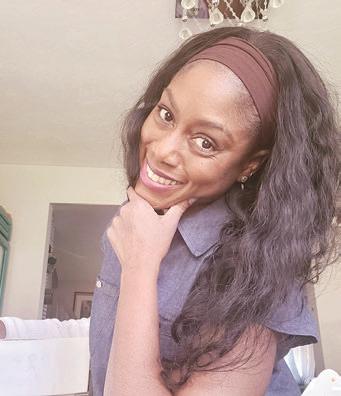
Tyler Wilkinson married Mary Kate Cervin, MA’18, in February 2022, surrounded by many friends they made at BC. // Annie Weber married James Lizzul ’09, surrounded by family and many BC friends. // Lauren Lavin welcomed Goldie Jo Lavin on January 25, 2022. Her dad is an ND alum. It will be a battle to see which school she will be a superfan of in the future. // Max Christiana was named lead portfolio manager of two publicly traded Transamerica mutual funds. // After multiple COVID-19-sponsored delays, Kristina Rex and Daniel Lococo finally tied the knot in Meredith, New Hampshire, on Lake Winnipesaukee.
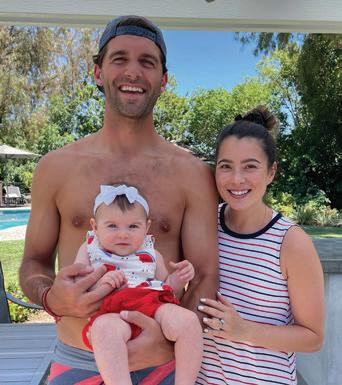
To submit your note, visit bc.edu/classnotes or email classnotes@bc.edu. fall 2022 v bcm 65
COURTESY OF KADIAN JAMES, MSW’13
COURTESY OF LAUREN FIELDS LAVIN ’15
Four of their college roommates were bridesmaids and groomsmen in their wedding, and a big BC alumni crowd was in attendance. // Jessica Opila married Joseph Thwing on June 11, 2022, in Detroit, Michigan. Andrea Heller and Veronica Chen were in the bridal party, and Amy Miethke (Yeung), Emily Prast , Jamie Keller, and Jess Cupo attended. // Jacquelyn O’Connor ’15, MSN’21, married Sean Poueymirou ’16 on July 9, 2022, at Saint Ignatius Church at Boston College. There were several Eagles in the wedding party, including Jennifer O’Connor, MA’03, PhD’ 06; Michael O’Connor ’03, MBA’06; James Cody ’16; Jake Miller ’16, MSF’17; Jonlyn Englert Glenn ’15, MSN’22; and Colleen McGauley’15, MSN’19. The mother of the bride, Madeline O’Connor ’71, is also an Eagle. Class correspondent: Victoria Mariconti // victoria.mariconti@gmail.com
2016
Doyle D. Calhoun graduated from Yale University in May with his PhD in French. Doyle received the Marguerite A. Peyre Prize for outstanding dissertation at graduation and now heads off to Trinity College in Connecticut as an assistant professor. // Maggie Mullins, former captain of the BC Women’s cross-country team, finished fourth in the Sugarloaf Maine Marathon with a time of 3:00.43, qualifying for the Boston Marathon. It was Mullins’ first marathon. // Molly Shine and Ryan Cooney got married at
the Spring House Hotel on Block Island in June 2021. They were surrounded by friends and family, many of whom attended Boston College. // Michael and Lindy McKie welcomed Charlotte Louise into the world on February 11, 2022. // Jana Jeffrey married Stuart Hopson at the Episcopal School of Dallas on December 18, 2021. // Sarah Kalny started her own private practice in May 2022. Sarah is a licensed mental health counselor in Massachusetts and offers virtual individual therapy for adults struggling with anxiety and grief. // Nicole (DeFonzo) Viola married Timothy Viola on June 5, 2021, in Sparta, New Jersey. Nicole and Tim have made their home in Summit, New Jersey. // Carolyn O’Connor MS’10, MSW’16, founded Cape Senior Services, LLC to provide comprehensive services to aging adults and their family caregivers on Cape Cod. // Lisamarie and Dan Flaherty married on June 25, 2022, at the Peabody Essex Museum in Salem, surrounded by family, friends, and plenty of BC alumni! They are moving to New York City following their marriage.
2017
Adam Ehdaie ’17, MA’19, is a double Eagle of the Lynch School of Education. His company, Dream School Test Prep, offers financial aid for just about anyone because Adam knows that the SAT or ACT can profoundly change the opportunities in a young person’s life. //
Armen Grigorian graduated from Boston College Law School, becoming a triple Eagle. // Mitchell Wolfe married Dr. Megan Lang ’16 in Wilmington, Delaware, on July 9, 2022. Armen Grigorian, Esq., and Grant Neil were groomsmen, and Erin Ducey ’16, MSW’17 and Ingrid Marquardt ’16 were bridesmaids. Over 20 Boston College alumni attended the event. Mitchell and Megan are now living in Fort Collins, Colorado. // Anie Jamgochian Tarabishi married Omar Tarabishi last year in May, and they just purchased their first home together in Baltimore. // John A. Paradiso married his high school sweetheart, Rosa Cuppari, on May 28, 2022. They live together in Durham, North Carolina, and will be opening a bar/cafe in early fall 2022. // Ako Walker was appointed pastor of Sacred Heart of Jesus in Baltimore. // Alexandria Bouchard, MSW’17, has been promoted to coordinator of North End Counseling in Manchester, New Hampshire. // Lexie Pereira graduated from the JD/MBA joint degree program in May. While studying full-time, Lexie also worked full-time on the legal team at Consigli Construction, an ENR top 100 construction company. Following graduation, she will be joining Pillsbury Winthrop Shaw Pittman LLP, an Am Law top 100 international law firm as a litigation associate in their Washington, D.C., office. // Aliza Perez is in her fourth year of medical school at
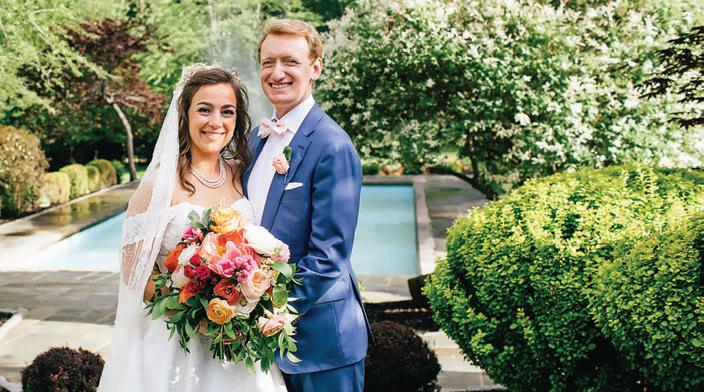
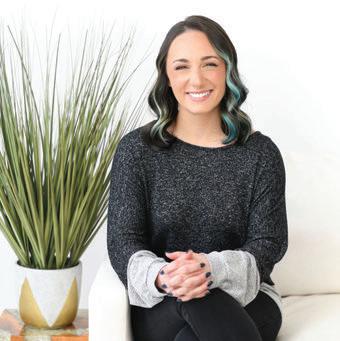
Class Notes To submit your note, visit bc.edu/classnotes or email classnotes@bc.edu.66 bcm v fall 2022
COURTESY OF SARAH KALNY
’16
COURTESY OF JOHN PARADISO
’17
Philadelphia College of Osteopathic Medicine. During her free time, she mentors students who are applying to medical school by preparing them for interviews, editing essays, etc. // Madeline Cortés and Tyler Smith ’14 were married on June 4, 2022, at United Parish in Brookline. They celebrated with their friends and family at a reception in Central Square in Cambridge. Many thanks to their BC friends, several of whom were by their side as brides maids and groomsmen on the big day. // Dante Keeler and Katie Daniels were married at Dahlgren Chapel in Washington, D.C., on April 30, 2022. Among the wedding guests were Alexander Cavanaugh, Alyssa Rogowski, Jacob Martz, Brigid Rooney, Ellen Daly, Ryan Short , Emily Dinkelacker, Eileen Corkery, JP Neisewander ’18, Izzy Mueller ’18, Camille Oemcke ’19, Kyle Gangi ’21, and Tess Daniels ’21.
Class correspondent: Joshua Beauregard // joshf94@charter.net
2018
5th Reunion, June 2023
Shannon McNall and Jonathan Losche married in Kennebunkport, Maine, on June 4, 2022. They had five other BC Eagles in the wedding party: Shauna Wassmus, Jessica Tiber, Victoria Mulkern, Chris Maione, and Tyler Raymond, and a ton of BC Eagle wedding guests! // John A. Monaco and his wife, Marilynn, welcomed their second child. Luke Anthony Monaco was born on May 21, 2022, in Pittsburgh. //

Trevor Prince is starting at The Wharton School of the University of Pennsylvania in pursuit of his MBA. // Tooba Fatima started a co-working and community space for mental health and wellness practitioners called The Safe Space in Lahore, Pakistan. You can see more of the space at safespacepk.com. // Matt Mahoney married Keeghan Hughes on June 4, 2022, in Ipswich.
2019
Get It Together, a new play written and directed by Michael Quinn and starring Hadley Durkee ’20, ran this summer at the Zephyr Theater in West Hollywood. The show is stage managed by fellow alumna Ally Lardner ’21, and David
Bruin ’09 served as a script consultant. An earlier form of Get It Together was originally produced as a one-act at Boston College as part of New Voices 2018, directed by Scott T. Cummings. // Bernadette Darcy graduated summa cum laude from Rutgers Law School. She will begin her legal career at Lowenstein Sandler this fall.
2020
Emma Llosa completed her two-year program with Teach For America and is returning to her placement school to undertake a new role as early literacy interventionist. // Clayton Scot is now a Teach For America and Boston University alumnus! He first heard about TFA at the BC Career Fair. He is equally as excited to announce that he is returning to the Heights as a law student this fall. // Mark D. Aparece accepted a new position as assistant professor of instruction in the chemistry department at Northwestern University. // Alex Benoit is teaching high school English at Greenfield School in Wilson, North Carolina, where he is also the director and developer of the online student center. // Mark Leonhard Jr., JD’20, is an employment attorney with Foley & Foley, P.C., a national practice based in Massachusetts. // Alex Gruber, MTS’20, entered his third year of employment at his undergraduate alma mater, St. Norbert College, this fall. Alex remains deeply grateful for the education and formation he received at the STM and
for the opportunity to further both in his faculty and staff roles at SNC. // Alexander Hung started school at the New York Institute of Technology College of Osteopathic Medicine. // John Reim joined Baird Capital’s Venture Capital team as associate.
2021
Chaplain (Major) Stephen Echols was recently assigned to Fort Benning, Georgia, as the ethics instructor and writer at the U.S. Army’s Maneuver Center of Excellence (MCoE). // Haleigh Creamer, MA’23, married Michael Karam, MA’23 (both Lynch School graduate students) at The Dunes Club in Narragansett, Rhode Island, on June 26, 2022. // Peter De-sybel Mvondo, S.J., ThM’21, sends greetings to BC and all those at STM. They are currently rounding up their academic year at the Catholic Engineering University of Central Africa in Douala, Cameroon, uncovering new talents from the student body (1,500 young engineers).
CORRECTION:
In the spring issue, it was erroneously reported that Richard F. Powers III ’67 (“Dick”) had passed away. The Boston College Alumni Association regrets the error and apologizes to Mr. Powers.
To submit your note, visit bc.edu/classnotes or email classnotes@bc.edu. fall 2022 v bcm 67
COURTESY OF HALEIGH CREAMER ’21, MA’23
1930s
Priscilla Ruml PMC ’39
1940s
Bat Ackard PMC ’43
Lib Green PMC ’43
Edward Smith ’43
Rhea Hollar PMC ’45
Robert Varnerin ’46 STL’58
Nancy Fletcher PMC ’47
Hilario Lim ’47
Charles Dunn ’48 MA’49
Nancy Negley PMC ’48
Virginia Payne PMC ’48
John Benham ’49
Francis Publicover ’49
Robert Regan ’49 S.T.B.’60
Robert Sheehan ’49
Michael Toohig ’49 MS’51
Jack Turner ’49
1950s
John Buckley ’50
Louis Mullen ’50
John Regan ’50
Donald Terrio ’50
Robert Barrett ’51 MEd’54
James Bertelli ’51 MA’52
Francis Brawley ’51
James Broderick ’51
Santo Cataudella MS’51
Betsy Coakley ’51
Malcolm Coven ’51
Jack Dawley ’51 MA’56 JD’62
John Fahey ’51
John Holland ’51
William Horne ’51 MA’53
David McIntyre ’51
David McNulty ’51
James Verme ’51
Beatrice Olivieri Ames ’52
Vincent Beninati ’52 MSW’54
Bill Bond ’52
Robert Gallagher ’52
Robert Gaughan ’52
Eugene Giroux ’52 JD’57
Richard Maloney ’52
Louise Blais Ross MA’52
Joseph Wesner ’52
Richard Buckley ’53
Dennis Cronin ’53
Robert Cunningham ’53 MBA’67
Joseph Donovan ’53
Leo Grace ’53 JD’56
Quentin Hughes ’53
Robert Irons ’53
Stanley Karp ’53
Epifanio Labrad STL’53
Thomas Maher ’53
Albin Wozniak ’53 MEd’55
Robert Brebbia MS’54
Joseph Brennan ’54
Norman Brodeur ’54
William Connolly JD’54
Joseph Eisenmann ’54
William Kirchner ’54
Joan Sullivan Rees ’54
Charles Shishmanian ’54
William Slyne ’54
Patrick Walsh ’54
Edward Capasse JD’55
Cis McHenry Clay PMC ’55 John Crane ’55
Dick Drew ’55 Donald Kiley ’55 Dick Murray ’552 John Narsiff ’55
Conal Owens ’55 MA’63
John Vozzella ’55
Joseph Bellofatto ’56
Carol Rock Dobbyn ’56 MS’58
Thomas Doocey ’56
Joseph Fiore ’56 JD’60
Paul Leclaire ’56
Bernie Ryan ’56
Lita “Squeaky” Wangensteen PMC ’56
Mary Wiedl MEd’56
Norma De Feo Cacciamani ’57
Jean Carroll MEd’57
Lawrence Glynn ’57
Richard Kelleher JD’57
William McKenney ’57
Eddie Miller ’57 MBA’68 D. ED.’90
Daniel Noonan ’57 MBA’63
Joseph O’Neil ’57
Charles Ray ’57
Eileen Fagan Chahrouri ’58
Bill Creighton ’58
Joseph Doorley JD’58
Margaret Crowley Fitzgerald ’58
Joan Foley Kennedy ’58
George Krain ’58
Geraldine Coghlan Lynch ’58
Ted Lyons ’58
Leon-Paul Madore ’58 MA’87
Bernard Mahoney ’58 MS’60
Joanne Welch Mente ’58
Robert Moore ’58
Paul Sanroma ’58
John Vancini ’58
Ellen Vanszl MA ’58
Mary Zeady ’58 MA’66
Paul Broughton ’59
Charles Brusard ’59 MA’62
Thomas Carey ’59
Maryjane Mulvanity Casey ’59
Robert Crowley ’59
John De Bettencourt ’59
Jerome Havrda ’59
Franklin Kennedy ’59 Frank Lane ’59
Robert Manzelli ’59
Edward Mulkern ’59 MBA’67
Robert Pollock ’59 MEd’61
1960s
Stephen Concannon ’60
Nancy Fernandes Concholar ’60
Peggy Massman Freeman NC’60
Edward Hutchinson ’60
Bob Muldoon ’60 PHL’61 MA’61 LLB’65
John Mullen ’60
Joseph Nadeau ’60
Joseph Rabbitt ’60
Robert Robicheau ’60
Robert Staffier ’60
Richard Stanton ’60
Marie McCabe Stebbins ’60
James Bishop ’61
John Costello ’61
Robert Flaherty ’61 MBA’65
John Galvani ’61 MA’62 BD’68
Lawrence McCabe MS’61
James Pardy ’61
Suzanne Trayes PMC’61
Joan Walsh MA’61
Barbara Fortunato Brenneis NC’62
Frank Farrell ’62
Michael Walker ’62
Paul Anderson MS’63
Alfred Ausiello ’63
Nancy Bennett PMC ’63
Paul Daly ’63
James Dougherty ’63
Richard Hanusz JD’63
Kevin Herlihy ’63
Peter Lodewick ’63
Charles Matteo ’63
Nancy Matthews MEd’63 Louise Majewski Dun-leavyCasagrande NC’64
William Fitzpatrick ’64
Arthur Gray ’64
Mary Kelly MEd’64
Edward Krygier ’64
Paul Naumann MA’64 STB’64
Frederick Rimmele ’64
Kay Dennis Sacramone ’64
Peter Savage ’64
Bob Smith ’64
Bruce Thompson ’64
Aldona Venckus ’64
George Anthes JD’65
Mary-Ann Bellatti PMC ’65
Ralph Cadwallader ’65
Jim Curley ’65
Richard Finney ’65
Bernard Foisy ’65
John Hedstrom ’65
Gene Hunt ’65
Anne Kiely MS’65
Lorraine MacFarlane MEd’65
Paul McGuinness MSW’65
Prudence “Tink” Neubert NC’65
Joseph Smiroldo MBA’65
Joseph Sullivan ’65
Robert Walsh ’65
Peter Wilson ’65
Gerard Burke ’66
Claudia Collins Daileader ’66
Janet Gallup ’66
Mary Garry MA’66
James Good MBA’66
John Leonard ’66
Maxine Nieder ’66
Paula Revier ’66
Paul Segal MSW’66
Joan McAuliffe Walsh ’66
Edward Bené ’67
Elaine Piazzi Boudreault MSW’67
Shirley Zastaury Dutton ’67
Gerald Geagan ’67
Dennis Griffin ’67
Mate Gross ’67
Paul Hamel JD’67
Dick Keegan ’67
Mary Lammon Nitsche NC’67
Joseph O’Rourke ’67
Phil Palmer ’67
Sara Silbernagel MA’67
John Spinney ’67
Walter Sweeney ’67 Richard Titilah ’67 Nicholas Tzimopoulos MS’67 PhD’71
Tad Archambault ’68 John Doyle MSW’68
To submit your note, visit bc.edu/classnotes or email classnotes@bc.edu.
68 bcm v fall 2022
Class Notes // Fond Farewells
Leo Guilfoyle ’68
Sharon Howe MSW’68
Larry Kenah ’68
John Long ’68
Peter Morrissette JD’68
Susan Mulroy NC’68
Richard Neumann ’68
Tom O’Brien ’68
Tanny O’Karma NC ’68
Thomas Pacynski ’68
Janet Boodro NC ’69
John Chalpin ’69
William Collins MA’69
Rick Comandich ’69
Robert Cummings MSW’69
Joseph Garreau MA’69 PhD’72
John McCafferty ’69
Dorothy McMahon MS’69
Dauna Delany Musick MSW’69
Joseph Navin ’69
1970s
Edward Bader MA’70
Mary Hanner ’70
Anthony Lalli MA’70
Ellen Clifford McGuire NC ’70
Charles Ryan ’70
Paul Zane MEd’70
Patricia Donahue ’71
Larry Ferreira ’71
Richard Hansen MA’71
Robert Kiggins ’71
Ed Wade ’71 MS’16
Steve Derby ’72
Dennis Ingersoll ’72 MS’75
Richard McDonald ’72
Daniel Shaughnessy JD’72
Robert Brown JD’73
Thomas Graham ’73
Patricia Kamlin NC ’73
William McArdle MBA’73
Stuart Meyers JD’73
Gregory Mish ’73
John Munnelly ’73
Andrew Stollar PhD’73
Eileen Ward MSW’73
Edward White JD’73
Kenneth Darga ’74
Mary Lou Curley Donadio ’74
Paul Glynn ’74
Edwin Goff PhD’74
Dick Hayden MBA’74
James King ’74
Betsy Lee Merry ’74 MEd’76
Dorothy Murray THM ’74
Maureen O’Donnell MSW ’74
Francis Quinn ’74
Susan Cruse Bohrer MEd’75
Carmen Greene ’75
Nancy Hindlian MEd’75
Mary Manning Kennedy MEd’75
Joan Kitsis MEd’75 CAES’78
PhD’88
John Lynch ’75
Ronald Markoff JD’75
Nancy Rosenberger ’75
David Black ’76
Evelyn Houlihan CAES’76
Joanne Montagna ’76
John Robinson ’76
Maurice Splaine PhD’76
Barbara Lamb Urban ’76
Karen Edlund ’77
Robert Fritz ’77
Doris Dermarderosian Jafferian MEd’77
Katherine Martelon ’77
Laura Melancon MEd’77 CAES’77
Rose Mitchell ’77
Anne Prall ’77
David Reilly ’77
Joanne Cuccurullo-Simpson ’78
Emmanuel Fontaine ’78
Francis Xavier Hubbard ’78
Francis Ursoleo ’78
Jane Glennan ’79
Rodney Mackenzie MBA’79
John Manley JD’79
Catherine O’Malley MCP’79
1980s
Nora Bottino ’80
James Clair ’80
Claude Maluenda ’80
John Pito ’80
Frank D’Amore ’81
Ellen Scannell MA’81
Aimee Angeli ’82
James Lucia ’82
Kenneth Drinkwater ’83
Cindy Hudson Gaudreau MS’83
Rosemary Keane MA’83
James Riley ’83 MBA’87
Kevin Sweeney ’83
Nancy Watson JD’83
Robert Ebrom MEd’84
Mark Waterhouse ’84
Karen Bradley MA’85
Scott Harrington ’85
Colleen Kinney MSW’85
Carol Shu ’85
Gisela Robeck MS’86
Meredith Strode PMC ’86
Virgine Elking MA’87
Kathleen Osbelt MA’87
Lisa Tzianabos ’87 MS’95
Ruth Cunningham ’88 MA’93
George Skogstrom JD’88
Christopher Bellonzi ’89
Mike Franchi ’89
Heidi Henson ’89
Lorna Kaufman PhD’89
Rich Kennedy MBA’89
1990s
Ann Holleran MSW’90
Marjorie Rohde PhD’90
Maryellen Gunn Coffey ’91
MEd’92
Janice Tangney PhD’91
Richard Blackwood ’95
David Burke ’95
Richard Stanton CAES ’95
John Farricy ’96
Diane Berry MS’97 PhD’02
Michael Westover MBA’97
Elizabeth Blair Quinn MBA’98
Michael Byron STL’98
John Coulter JD’98
Alexandra Heatley MEd’99
Danielle Walther ’99
2000s
Justin Shaghalian ’00
Matthew Noon ’02
Dorothy A. Sokol MA’02
Eric Brennan ’03
Joel Edward Wacek BA’03
MBA’11 MS’11
Trevor White ’03
Gina M. McCarthy ’05
Benjamin Brower MS’06
Kathleen M. Heffernan MA’08
Patricia H. Doherty ’09
2010s
Melissa Varnavas PMC’13
Bobby Anspach ’11
Hallie Sammartino PhD’11
Dylan Rushe ’12
Janelle Valencia Louis ’13
Nick Tierney ’14
COMMUNITY DEATHS
Kenneth Craig, of Ashland, MA on August 1, 2022. He was Associate Professor, Art, Art History and Film and taught from 1977 to 2022.
Patricia Doherty, of Reading, MA on July 14, 2022. She was Director, Institute for Scientific Research from 2005 to 2022 and Senior Research Scientist from 1989 to 2005.
Michael Himes, of Waltham, MA on June 9, 2022. He was Professor Emeritus, Theology Department and taught from 1993 to 2021.
Michael Martin, of Chestnut Hill, MA on July 2, 2022. He was Associate Dean and Associate Professor of the Practice in the Honors Program, Morrissey College of Arts and Sciences and taught from 1993 to 2022.
Jay McPhee, of Lynn, MA on May 25, 2022. He was Senior Administrator, Information Technology Services from 2019 to 2022, and Senior Systems Administrator from 2007 to 2019.
The “Obituaries” section is compiled from national listings as well as from notifications submitted by friends and family of alumni. It consists of names of those whose deaths have been reported to us since the previous issue of Boston College Magazine. Please send information on deceased alumni to Advancement Information Systems, Cadigan Alumni Center, 140 Commonwealth Avenue, Chestnut Hill, MA 02467 or to infoserv@bc.edu.
To submit your note, visit bc.edu/classnotes or email classnotes@bc.edu. fall 2022 v bcm 69
The Colossal Power of Small Gifts
A $25 gift to BC may seem like a drop in the ocean. But the truth is, a little can go a long way.
BY JILL CASERIA
Last fall, Lauri Berkenkamp ’86 spotted an email from Boston College in her inbox with a subject line that piqued her interest. “Wanna meet in the Mods?” it asked. Curious, she opened the message.
It was a 1980s snapshot of one of those quintessential moments etched in the minds of Eagles: move-in day.
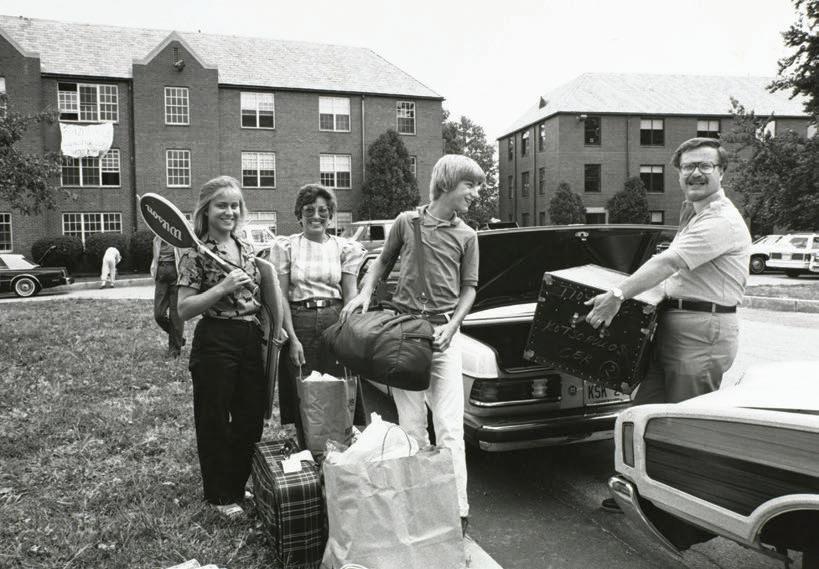
“That vintage photo in the email brought me back,” Lauri says, recalling her arrival on campus that first semester in her parents’ car that was stuffed with her bedding, clothes, and supplies. “Looking around at the other students moving in to Duchesne West that day, I did not feel cool!” she admits. “Dad wore these embarrassing white socks with his black loafers and I had big hair.”
The photo also inspired her to click through and commit to making a recurring monthly contribution to BC. “Finally, after 35 years, I am a donor,” she says. “This email just cracked me up, and I couldn’t say no. Thanks for the laughs, the memories, and for getting me off the giving couch and into the BC donor community.”
Giving on a monthly basis may seem like a drop in the ocean at an institution as large as the Heights, but she also knows how important consistent giving can be to BC. “I can afford to give a small amount in perpetuity—and it feels good,” she says. “Also, BC can count on my contribution month in and month out.”
Lauri is right, agrees Peggy McCorkle, associate vice president, annual and leadership giving. “Small annual gifts pile up and make an impact as a collective. Nearly 87 percent of cash gifts to BC last year were gifts under $1,000.” What’s important is alumni participation, she adds. “Participation demonstrates alumni satisfaction with their alma mater; recurring donations contribute to fiscal stability. Additionally, participation rates are used to rank schools—and college
rankings remain a significant factor in choices made by applicants. The bottom line is, any gift at any amount will have an important impact on the alumni giving rate.”
Emily (Reeves) Reynolds ’08, MBA’14, made her first gift to BC during her senior year. Today, her annual commitment qualifies her as a long-standing member of BC’s Neenan Society. “Back then, I started giving because I thought it was a nice sentiment,” she says. “But then I learned how much BC relies on the generosity of alumni and
friends. Giving back is a collective effort that will make BC a better place for current Eagles and those who follow your footsteps.”
GOLD Leadership Council Co-Chair Zac Basile ’18 appreciates that he can designate his giving to support his favorite BC cause: the Club Ultimate Frisbee team.
“The friends I made at BC are part of the fabric of my life, and I wouldn’t be where I am without them. I give what I can to help current and future generations of students create the same lasting bonds at the Heights.”
To learn more about the power of small gifts, visit bc.edu/impact
Move-in memories: The 1980s photo that inspired Lauri Berkencamp ‘86 and others to make a gift to BC.
Class Notes // Advancing Boston College 70 bcm v fall 2022
WHAT I’VE LEARNED
Mary Walsh
Mary Walsh’s conviction that children’s lives out of school are essential to their academic achievement led her to found City Connects in 2001, which has become one of the nation’s leading networks for connecting students in high-needs urban schools with the resources required to thrive. Walsh, the Kearns Chair in Urban Education and Innovative Leadership at the Lynch School, just retired from teaching, but will stay on as the executive director of City Connects and the Mary E. Walsh Center for Thriving Children, which was recently renamed in her honor thanks to an anonymous $10 million donation.
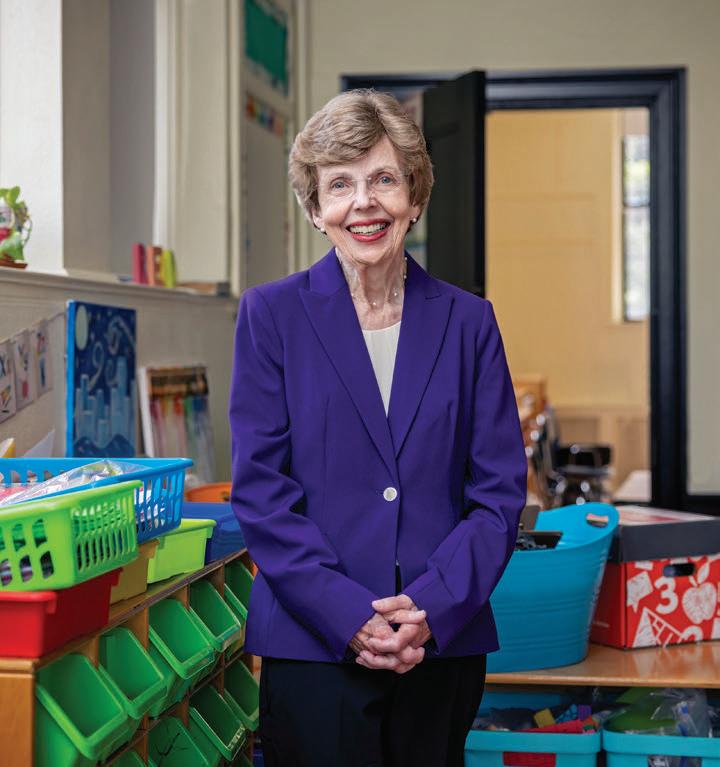
Nobody can take your education from you. My father told me that his greatest gift in coming to this country was a library card. He and my mother both emigrated from British-occupied Ireland, and both had to leave school after the fourth grade to work on the farm. We lived down the street from Boston College, in one of Boston’s famous three-deckers. Sometimes, in high school, I’d walk up the hill to do my homework in Bapst Library, and I’d imagine I was doing real research. From the beginning, I just loved it.
“Always live on the hyphen.” That’s what my mentor in graduate school used to say. He was talking about the hyphen between
every child’s needs and strengths. We also needed evidence to prove that what we did was working. Thanks to the late, legendary BC Professor George Madaus, we developed the best database in the country for anony mously keeping track of students’ prog ress. We learned that kids who’d had City Connects in elementary school did signifi cantly better on standardized tests through the rest of their education, and their highschool dropout rate decreased by half.
Students’ lives outside of school impact their learning. There wasn’t a lot of interest in children’s lives beyond the classroom when we launched City Connects. The No Child Left Behind legislation had just passed, and schools had a laser-like focus on achievement and standardized tests. The goal was to fully close the achievement gap for poor students and students of color by 2014. When that didn’t happen, schools began to realize what the real challenges facing students are.
Opportunity expands our sense of what’s possible. I think of my father, a factory worker who spent his weekends in the library. He was deeply committed to social justice and was so thrilled to read about Catholic social thought. And I think about schools. Schools are the one place in our society that meet almost every child where they are, espe cially when they see students as whole people and provide them with opportunities for needed services and enrichment. What we’ve seen, over time, are good life outcomes for kids when you give them the right start.
John Shakespear
research and practice—and how one feeds the other. I thought about that a lot dur ing my early career, when I interviewed and worked with homeless children across Massachusetts. Their individual stories gen erated new questions that were much more complex and interesting than any single anxi ety or depression test could capture. They gave me an acute awareness of what poverty does to the hearts and minds of children.
We have to make the world better child by child, but we have to do it in a systematic way. When we started City Connects, I knew we’d need to set up a process if we were going to try to determine and address
Every student wants and needs to be known. Our work with City Connects can involve anything from getting eyeglasses for kids to finding shelter for their family, but it also helps teachers in schools with three or four hundred students understand what’s going on with each individual child. We’ve had teach ers who come to us and say, “Now I feel like I really know my students, and I can empathize with them.” That makes a big difference.
Teaching is an active process of renewing the mind. I’ve gotten so many ideas and insights through my conversations with my students. Every time I walked into the classroom at the start of the semester, I knew I’d walk out more informed, with a whole new set of questions. That’s why it’s impor tant for people who are doing research to teach and practice, and vice versa: it all fits together. n
photos: Caitlin Cunningham (Walsh); Bruce Peterson (ColdSnap)
72 bcm v fall 2022
Dessert on Demand
Engineer Matt Fonte ’94 had sold his orthopedic implants company and was working for a medical equipment manufacturer in 2018, when his daughters dreamed up his next big idea: a Keurig machine for ice cream. It took Fonte four years to develop the ColdSnap, an appliance that dispenses single-serve frosty treats from aluminum pods. A commercial version will appear at hotels and stadiums this spring, with a household model planned for the future. “I just wanted to do something fun,” Fonte said. “When this idea popped up about ice cream, I was like, ‘that’s it.’” Elizabeth Clemente

Parting Shot
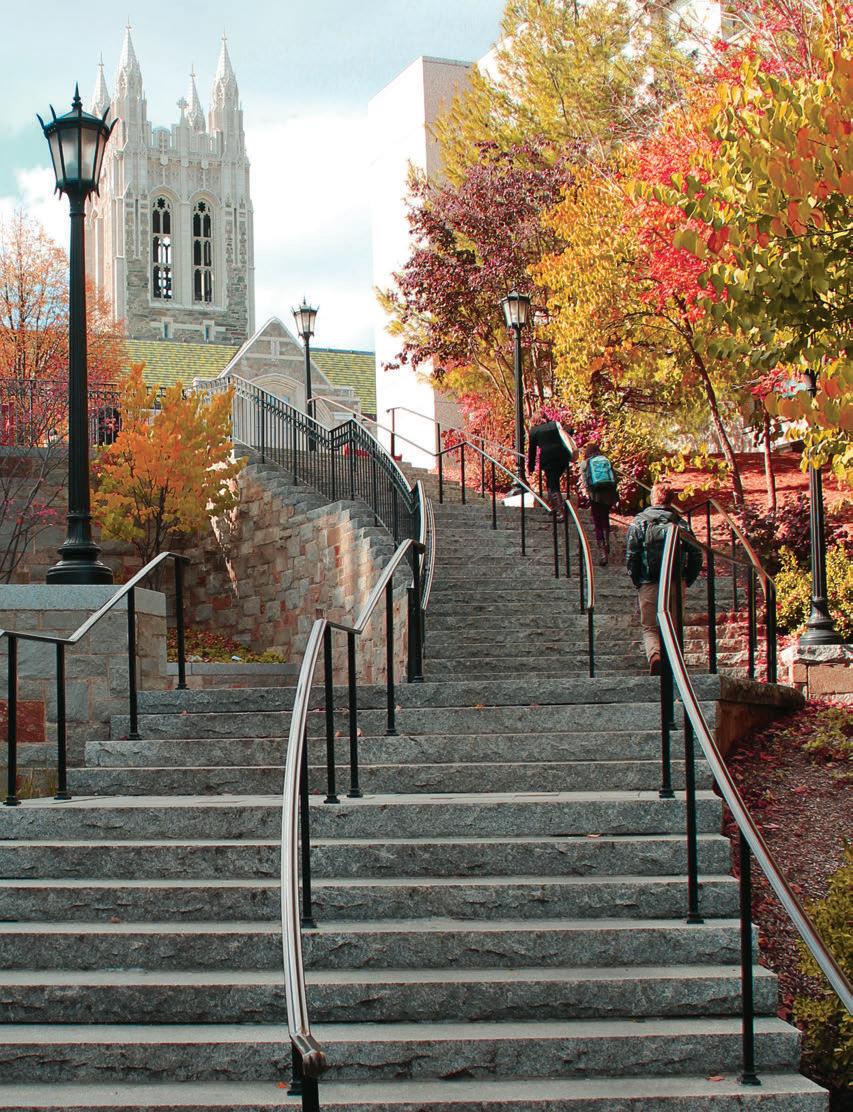
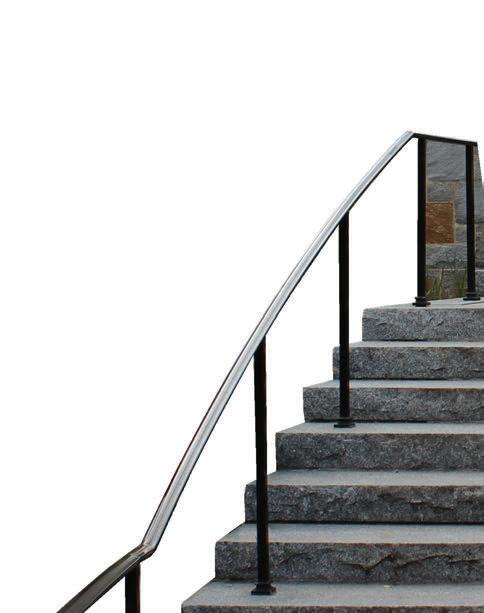
55,000+ gifts were under $1,000 YOU CAN’T REACH GREAT HEIGHTS WITHOUT See how small gifts add up at bc.edu/impact 87 % of BC’s







 photos: Mark Hicks, NCAA Photos via Getty Images (cover); John Quackenbos (York skating)
photos: Mark Hicks, NCAA Photos via Getty Images (cover); John Quackenbos (York skating)








 BY ALIX HACKETT
BY ALIX HACKETT

 BY JOHN SHAKESPEAR
BY JOHN SHAKESPEAR
 BY COURTNEY HOLLANDS
BY COURTNEY HOLLANDS


 QUICK Q&A
QUICK Q&A

























 By Chris Sweeney
Illustrations by Stephanie Dalton Cowan
By Chris Sweeney
Illustrations by Stephanie Dalton Cowan


























































